AHEAD OF THE GAME
UW Sports Medicine keeps student-athletes on the go

The real value of education
The UW leads national movement for broad-based support p28
Values are Our Currency
It’s a new world for studentathletes earning money p30
Knight Time
Doreen Alhadeff convinces Spain to welcome back Jews p32

Jetting Off
In 1966, Boeing signed a contract with Pan American World Airways to produce the world’s first jumbo jet.
The first 747 flew out of Paine Field in 1969. This past December, the last one, No. 1574, rolled out of the massive Everett assembly building, not yet dressed in its new owner’s livery.
While many UW alumni had their hands in the development and production of the 747, it was Joseph Sutter, ’43, who served as its chief engineer. He led a team of 4,500 workers bent on creating a plane that could carry more people and fly longer and farther than any other aircraft.
“If ever a program seemed set up for failure, it was mine,” he wrote in his autobiography. But his oversight and attention to detail helped turn 6 million parts and 150 miles of wiring into the world’s most recognized plane, and one that has dominated the skies for more than 50 years.

The 747 was created to meet booming air travel demand, and at 231 feet long, it could hold up to 360 passengers (later versions carried up to 500), cutting airfares in half and putting the rest of the world within reach. But it was also prized for its cargo capacity. Today, 450 are still in service. Because of the model’s longevity, it will continue to cross our skies for decades to come.

SPRING 2023 1 OF WASHINGTON PAINE FIELD, EVERETT
Photo by David Ryder
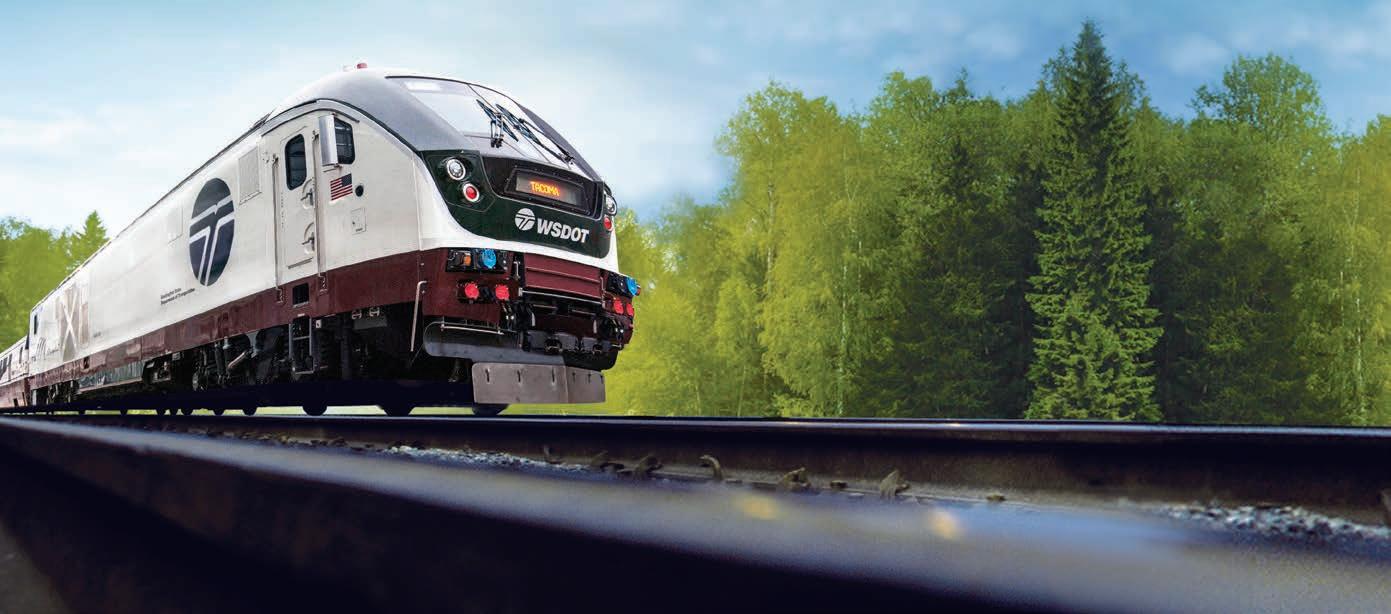







ENJOY MORE TRAINS BEGINNING MARCH 6 4 Daily trains between Seattle and Vancouver, BC 8 Daily trains between Seattle and Portland 4 Daily trains between Portland and Eugene Portland Vancouver, B.C. Seattle AmtrakCascades.com
DARE TO DO


At the University of Washington, we dream up new possibilities and turn them into reality. But we don’t just lead the way — we prepare tomorrow’s leaders and visionaries to shape the future. Positive change starts with you.

uw.edu/boundless
 Selena Prudente Rendon, ’21 B.A., American ethnic studies
Selena Prudente Rendon, ’21 B.A., American ethnic studies
VOLUME 34
NUMBER 1
SPRING 2023
ONLINE magazine.uw.edu
24 The Way Ahead
Schools nationwide are struggling with the decline of public support for higher education. Learn what the UW is doing about it.
By Hannelore Sudermann
26 Values Are Our Currency
A new twist to college sports is the world of NIL—name, image and likeness—which allows student-athletes to earn income.
By Jon Marmor
28 Knight Time
Doreen Alhadeff was honored by Spain for her quest to allow Sephardic Jews to regain their rightful Spanish citizenship.
By
David Volk
32 Ahead of the Game
After an injury, a star athlete turns to UW Medicine’s Sports Medicine Center for help getting back on the court.
By Jamie Swenson
BOWLED OVER TEXAS
Led by defensive lineman Voi �unuufi (90), the Huskies smothered the �exas offense during their 27-20 Alamo Bowl victory. Story, Page 22.
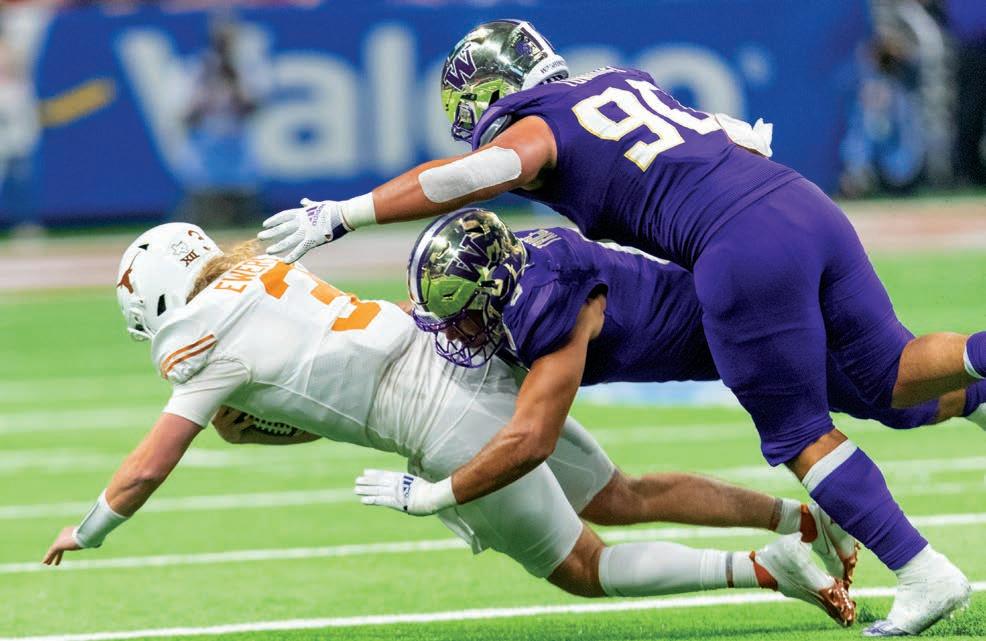
MATCHA TO
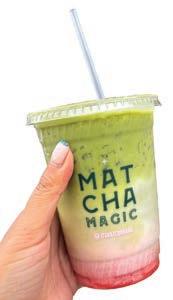
So long to Jerry Thornton, a great ballplayer and family man.
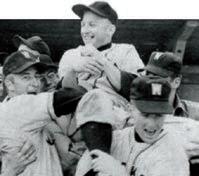
DEEP MUD, BOTH FEET
UW student veterans visit Vietnam to explore the duality of war and find the path to peace.
by Mark Stone

ATHLETICS COMMUNICATIONS
4 UW MAGAZINE
FORWARD 6 Youth Mental Health 8 Rural Service 10 Roar from the Crowd THE HUB 12 Rowing’s Cathedral 13 State of the Art 14 Research 22 Athletics COLUMNS 38 Peter Bacho 39 Sketches 41 Media 53 Tribute 54 In Memory IMPACT 44 Liftoff 46 Sense of Purpose 48 Plant Power UDUB 56 Sculpting Creativity
takes
TALK ABOUT Entrepreneur and matcha enthusiast Rachel Barnecut, ’12, ’18,
her tasty tea to the next level at Matcha Magic.
CAPTAIN FANTASTIC
ATHLETICS COMMUNICATIONS
ON THE COVER Husky setter Ella May Powell goes up a for a block during a practice last fall.
Photo
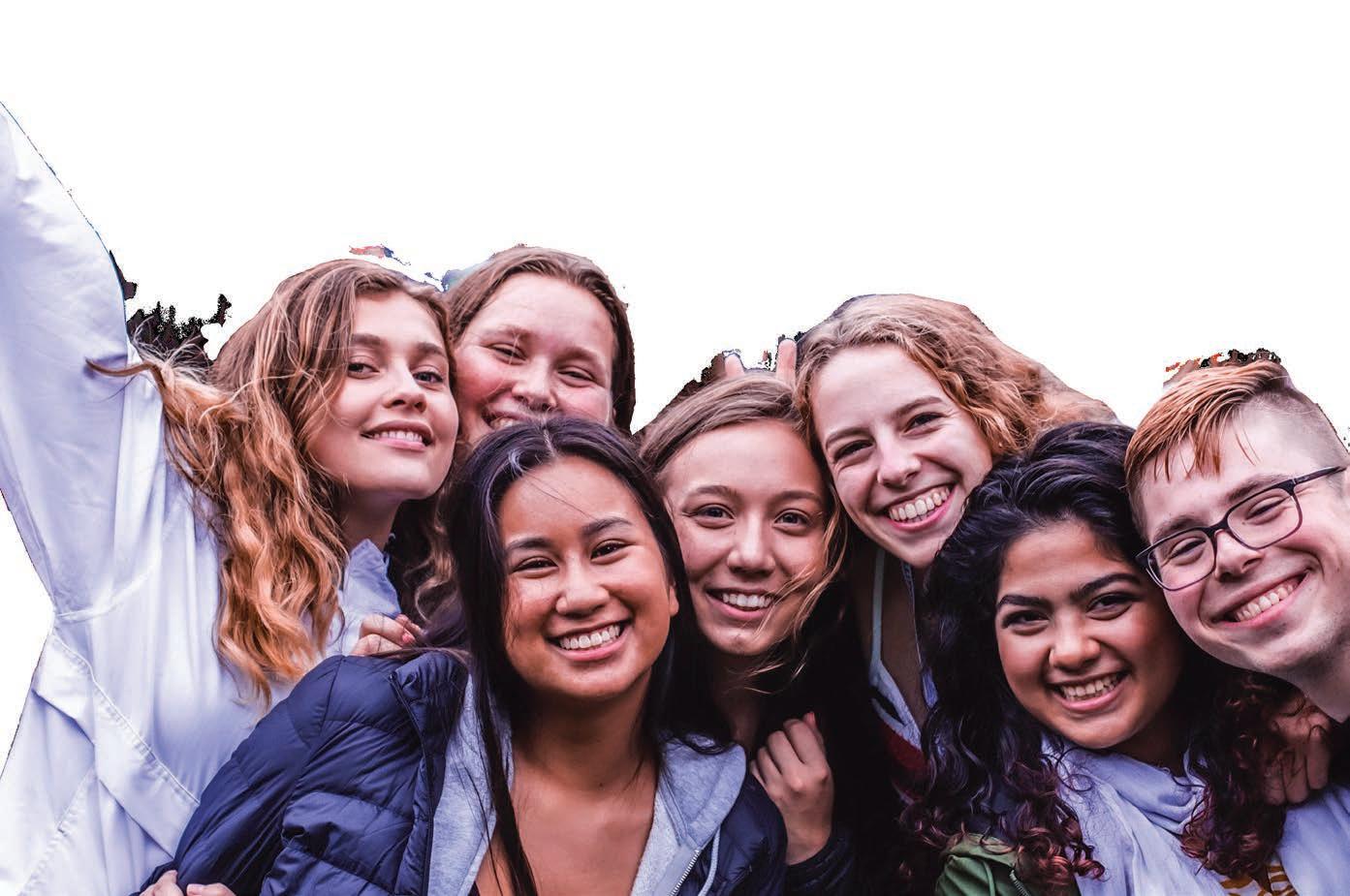

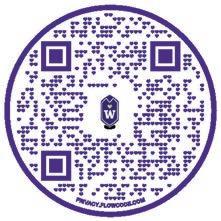
SPRING 2023 5 ON APRIL 6, YOU’LL BE PART OF SOMETHING BIG HUSKY GIVING DAY IS APRIL 6! Let’s do BIG things, together. Join us and help build a better tomorrow. SCAN the QR code to see all participating programs GIVE at givingday.uw.edu SHARE your UW love on social media using #HuskyGivingDay > > >
BY JENNIFER STUBER AND ERIC BRUNS
Helping Youth in Crisis
All across Washington state and the nation, our children and young people are feeling despair at levels never seen before. In 2021, 19% of eighth-grade students said they have seriously considered suicide in the last year, according to the Washington Healthy Youth Survey. This statistic is just a glimpse of the youth mental health crisis that was brewing before COVID and has now boiled over as students attempt to return to their in-person routines.
As parents of middle- and high-schoolaged children and as mental health professionals, we experience this crisis in youth mental health every day when we respond to desperate appeals for help from other parents. As faculty in a research and training center focused on school-based mental health, we also experience this crisis as we respond to requests for help from
schools across the state—schools that are weathering the anguish of multiple student deaths by suicide in a single year or the horror of one student shooting another student in their halls.
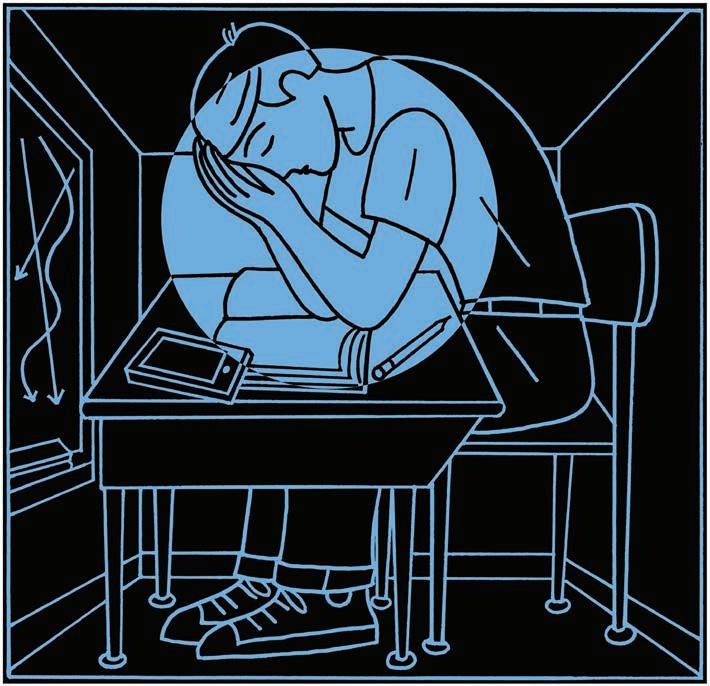
Although the crisis shows no signs of abating, there are indications of a proactive response. Schools are stepping further into their role in the prevention of mental health problems and suicide among their students. But they have so much to do already as they fulfill their educational mission. Schools need help if they are going to do more in the realm of youth mental health and suicide prevention.
One critical strategy is to invest in comprehensive youth mental health infrastructure in schools. Schools are where youth spend the majority of their waking hours and where they build relationships with
trusted adults and friends. School staff can provide instruction on positive relationships and coping with difficult emotions. They can connect with young people and take notice when they are struggling.
Schools are also the most common venue for young people to find mental health treatment. Recognizing this, the 2022 Washington Legislature increased funding for school mental health professionals. These professionals are critical resources for students who are struggling, providing them with group and individual treatment while also helping teachers and staff implement a comprehensive mental health strategy for the whole school.
Despite recent and proposed funding increases, schools are still woefully under-resourced. Staffing ratios for school social workers in Washington (one for every 14,391 students) are at one-fiftieth the level recommended by the National Association for School Social Workers (one for every 250).
But who will fill these positions so essential to our young people’s well-being? We’re working on it. Inspired by the Ballmer Group-funded Behavioral Health Workforce Development Initiative developed by UW Social Work Dean Eddie Uehara and Associate Dean Ben DeHaan, the U.S. Department of Education recently awarded our state $6 million to create a pipeline from Washington’s five Master’s of Social Work training programs to Washington state schools. Through this pilot program, 100 aspiring social workers will receive conditional scholarships based on their financial need. These conditional scholarships oblige recipients to work in a high-need district for at least two years after graduation. They will have pre-service training, be placed at schools in internships to support their future leadership roles in schools after graduation and have opportunities for continued connection with students across the state with whom they trained.
These and other strategies provide hope that we can collectively respond to the crisis by investing in school-based mental health. Our project is just getting off the ground. If you’d like to know more, email us at uwsmart@uw.edu.
Eric Bruns is a professor of psychiatry and behavioral sciences in the School of Medicine. Jennifer Stuber is an associate professor in the School of Social Work. �hey are core faculty at the UW’s School Mental Health Assessment, Research and �raining (SMAR�) Center.
6 UW MAGAZINE OPINION
ILLUSTRATION BY ANTHONY RUSSO
AND THOUGHT FROM THE UW FAMILY
Trust Your Heart to Us
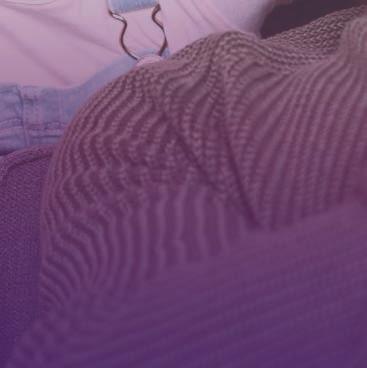
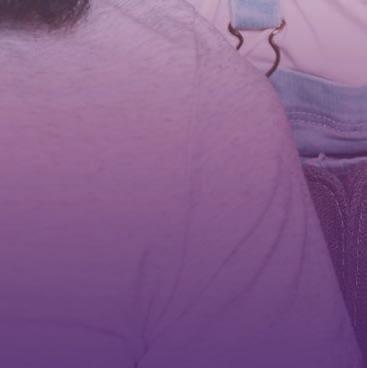


UW Medicine Heart Institute is the only cardiovascular program in Washington directly connecting patient care with a top-rated medical school and research powerhouse. Our experts not only teach future cardiovascular specialists, but also continuously improve care for common to complex heart conditions. Benefit from our nationally recognized patient care at multiple locations across the Puget Sound region.

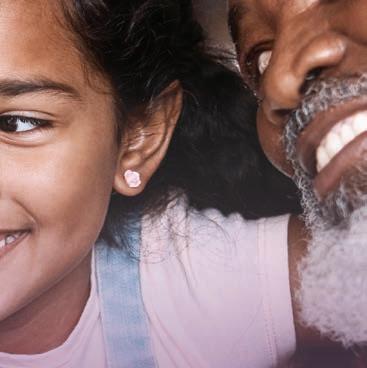
uwmedicine.org/heart





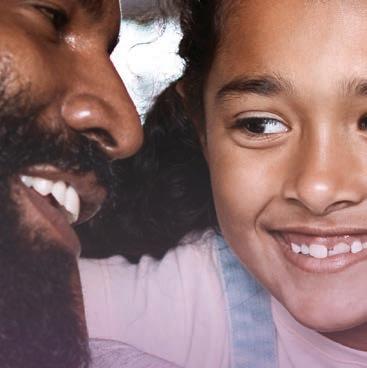

MESSAGE FROM THE EDITOR
Reaching Rural Communities
UW’s efforts to train dentists for non-urban, underserved populations proves a big hit
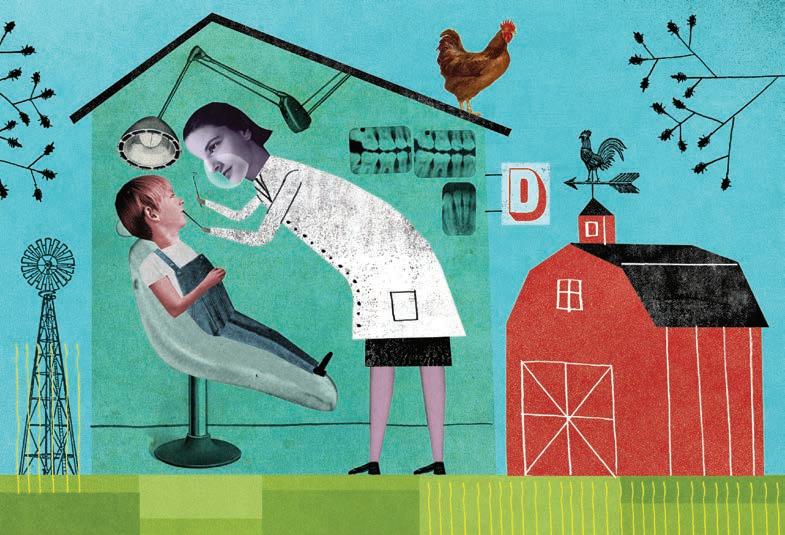 By Jon Marmor
By Jon Marmor
Bringing health care to rural and underserved populations in Washington and the region at large has long been a priority for the University of Washington. It started with the School of Medicine’s WWAMI program, which educates medical students to serve residents of rural communities in Washington, Wyoming, Alaska, Montana and Idaho. And here’s another dynamite example of the UW’s impact outside of Seattle: the School of Dentistry’s Regional Initiatives in Dental Education program.
Known as RIDE, the program just marked its 15th anniversary. Operating in conjunction with Eastern Washington University as well as the WWAMI program, it trains up-and-coming dentists to meet the needs of people who live outside of large population centers. This initiative is so urgently needed that it has received invaluable support from dental associations, community health centers, Area Health Education Centers and other stakeholders.
The results are simply amazing. Since the program was funded by the Legislature in 2007 and produced its first graduates in 2012, more than 75% of its students have gone on to work at community clinics throughout Eastern Washington and other states’ rural and underserved areas. Many community health centers in Eastern Washington are completely run by RIDE students, too. That is the definition of impact.
Dr. Arley Medrano, ’18, ’22, is a prime example of what the UW has been seeking to accomplish. “I grew up in Okanogan, I grew up in the surrounding area, I know how important it is to have access to care,” he says. “It was very important for me to return to help a community that raised me and built me into the person I am today.”
Dr. Frank Roberts, the School of Dentistry’s associate dean for regional affairs and director of the RIDE program, perhaps summed it up best. “When you practice dentistry in an urban area, you make a big impact on your individual patients,” he explains. “But when you practice in a rural, underserved setting, you impact the whole community. That’s really special.”
And that is what the University of Washington is all about: serving the needs of citizens from the entire state and region, all of whom deserve the same kind of attention and care as those who live in the big cities. After all, the UW is the University for Washington.
STAFF
A publication of the UW Alumni Association and the University of Washington since 1908
PUBLISHER Paul Rucker, ’95, ’02
ASST. VICE PRESIDENT, UWAA MARKETING & COMMUNICATIONS Terri Hiroshima
EDITOR Jon Marmor, ’94
MANAGING EDITOR Hannelore Sudermann, ’96
ART DIRECTOR Ken Shafer
DIGITAL EDITOR Caitlin Klask
CONTRIBUTING STAFF Ben Erickson, Karen Rippel Chilcote, Kerry MacDonald, ’04
UWAA BOARD OF TRUSTEES PUBLICATIONS
COMMITTEE CO-CHAIRS
Chair, Sabrina Taylor, ’13 Vice Chair, Roman Trujillo, ’95
CONTRIBUTING WRITERS
Rachel Gallaher, Hannah Hickey, David Silverberg, Chris Talbott, David Volk
CONTRIBUTING PHOTOGRAPHERS
Matt Hagen, David Ryder, Mark Stone, Dennis Wise, Ron Wurzer
CONTRIBUTING ILLUSTRATORS
Joe Anderson, Olivier Kugler, David Plunkert, Anthony Russo
EDITORIAL OFFICES
Phone 206-543-0540
Email magazine@uw.edu
Fax 206-685-0611
4333 Brooklyn Ave. N.E.
UW Tower 01, Box 359559
Seattle, WA 98195-9559
ADVERTISING
SagaCity Media, Inc.
509 Olive Way, Suite 305, Seattle, WA 98101
Megan Holcombe mholcombe@sagacitymedia.com
703-638-9704
Carol Cummins ccummins@sagacitymedia.com
206-454-3058
Robert Page rpage@sagacitymedia.com
206-979-5821
University of Washington Magazine is published quarterly by the UW Alumni Association and UW for graduates and friends of the UW (ISSN 1047-8604; Canadian Publication Agreement #40845662). Opinions expressed are those of the signed contributors or the editors and do not necessarily represent the UW’s official position. �his magazine does not endorse, directly or by implication, any products or services advertised except those sponsored directly by the UWAA. Return undeliverable Canadian addresses to: Station A, PO Box 54, Windsor, ON N9A 6J5 CANADA.
8 UW MAGAZINE
ILLUSTRATION
BY DAVID PLUNKERT
Smart seniors love living at Mirabella.

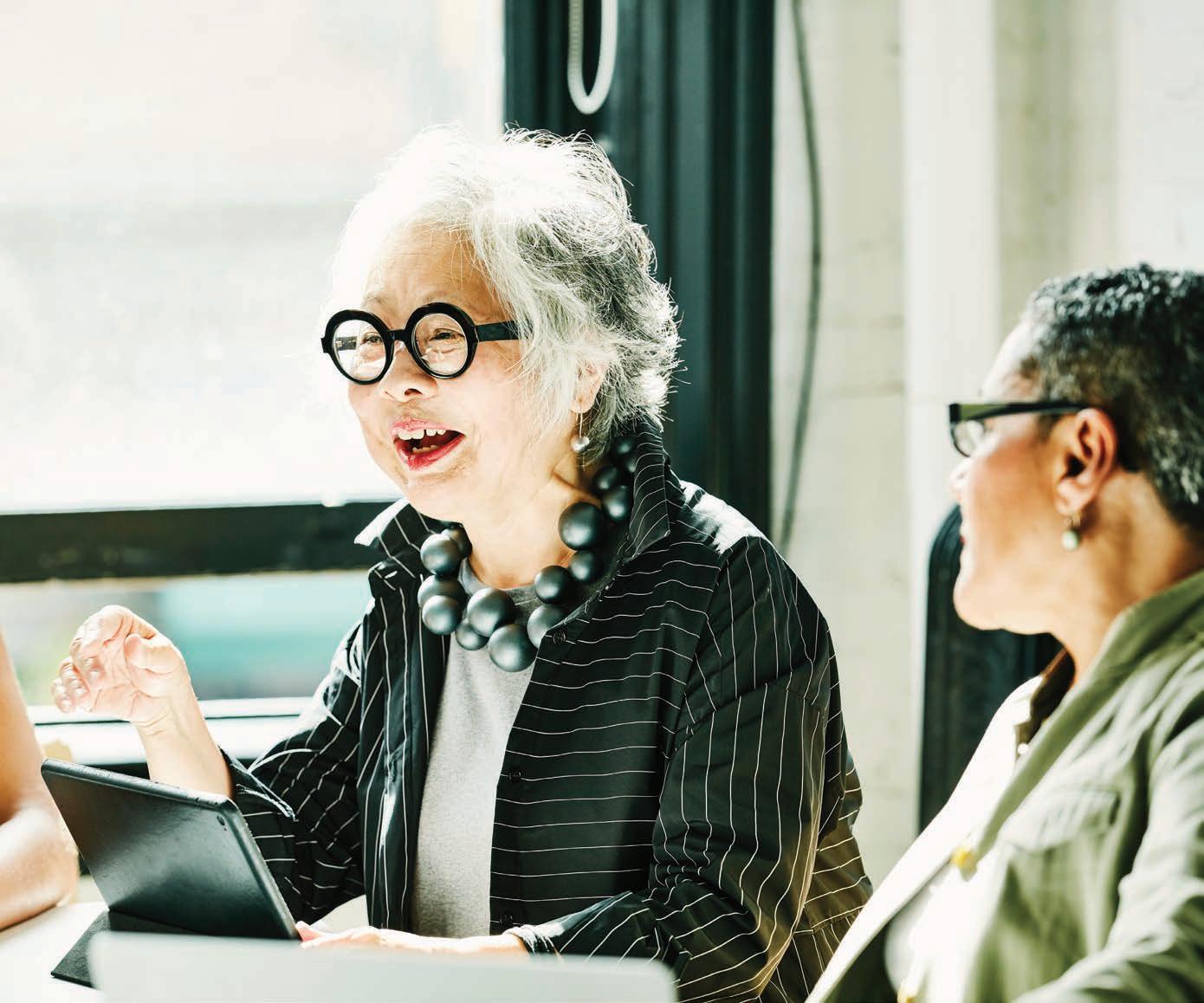
In South Lake Union.
Mirabella Seattle is a resident-centered, not-for-profit Pacific Retirement Services community and an equal housing opportunity. Imagine a place where resident UW alums & retired professors discuss the issues of the day. And guest speakers educate as well as entertain. And everyone enjoys fun social events daily. And we haven’t even mentioned the impressive list of services and amenities, the beautiful living spaces, or the lifelong healthcare available. We invite you to come see Mirabella for yourself. It’s easy to find. In desirable South Lake Union and a few degrees above the rest. Please call today to schedule a tour. 116 Fairview Ave N • Seattle • 206.337.0443 www.mirabellaseattle.com Intellectually minded. Socially engaged. Hence, why we ran this ad in UW Magazine.
Black Doctors
Thank you for your fine article on Black doctors at the UW and in the Pacific Northwest (“A Medical Emergency,” Winter 2022). It shed much-needed light on the struggle at the UW to attract young doctors, and on the issue of health equity in general. I was particularly touched by your mention of several Black physicians and surgeons from my childhood in Seattle, including Alvin Thompson and the Lavizzos, Phillip and Blanche. Phillip and my father, John R. Henry, finished at Meharry Medical College at the same time and became the first Black surgeons in Seattle history when they settled there in 1957. I don’t know if you’re aware that Dr. Risa Lavizzo-Mourey, who you interviewed, was for many years the president of the Robert Wood Johnson Foundation, one of the world’s largest and most influential health philanthropies. Our families—including Dr. Earl V. Miller, a urologist, and his wife, Rosalee Miller, a dentist who worked at the University for many years—were all close in those years, so your story brought back many warm memories of them from my childhood. There’s an old phrase about human progress that “we stand on the shoulders of giants.” That’s certainly how I view my parents’ generation of Black physicians and their spouses, who forged a path for themselves and their loved ones in Seattle in the 1950s and 1960s.
Neil Henry, Professor and Dean Emeritus, UC Berkeley Graduate School of Journalism
Black and White
I appreciate the well-written article “A Medical Emergency,” by Hannelore Sudermann. However, I don’t understand why every time the descriptive “Black” was used in the article, which was many, it was capitalized, and every time the descriptive “white” was used, it was not capitalized. Am I missing some grammar lesson or is the author revealing a prejudice in a subtle way?
Chris Jolley, ’92, Monument Valley, Utah
EDITOR’S NOTE:
University of Washington Magazine follows Associated Press style. In 2020, the AP decided to “capitalize Black in a racial, ethnic or cultural sense, conveying an essential and shared sense of history, identity and community among people who identify as Black, including those in the African diaspora and within Africa.”
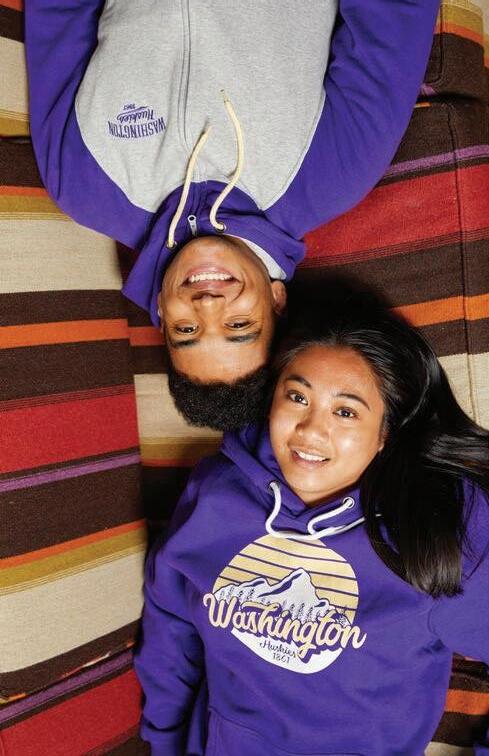
Raft Hollingsworth
While I was pleased to see your obituary about the many contributions of Dorothy Hollingsworth in your Winter issue (“A Social Maverick,” Winter 2022), I was disappointed that there was no mention of her husband, Raft Hollingsworth. Mr. Hollingsworth, whom I first encountered as a terrified seventh-grader at Queen Anne High School in the fall of 1959, was one of the early African American teachers in Seattle Public Schools. He taught full time at Queen Anne beginning in 1957 and taught at Boren Middle School and Garfield High School. Although I am sure there were students at Queen Anne who resented his presence, I don’t remember anyone speaking of him with anything but respect. He was remembered for inventing games to help make learning math fun and wore his authority with grace and kindness. He, like his wife, Dorothy, contributed to making Seattle a better place.
Morgan Seeley, Quilcene
Astronaut Hero
The tribute to Michael Anderson (“Star Power,” Winter 2022) was excellent. It brought back memories of the privilege I had as Wing Chaplain at Fairchild AFB in 2003 to speak at Lt. Col. Anderson’s memorial service. The service was packed, with a considerable number of local clergy on the dais. He was beloved by the Spokane community. He set a fine example that I’m sure many young people, there and elsewhere, have sought to emulate. The Space Shuttle Columbia disaster remains seared into many of our memories, but it is comforting to know that the legacy of Anderson and his colleagues continues to inspire.
Robert C. Stroud, ’77, Seabeck
Valiant Volunteers
The story about the founding of the Harry Bridges Chair for Labor Studies (“Solidarity Forever,” Winter 2022) was great. I just want to point out that there is one other “formal reminder” of working-class people on campus and that is the memorial for the “premature anti-fascists” who fought to save the democratically elected government of Spain in the late 1930s. It is just off the path by the HUB on the way to Drumheller Fountain. In these perilous times, it is apropos to remember the brave men and women of the Abraham Lincoln Brigade and all the other valiant volunteers from around the world who fought against the fascists in Spain.
Marion Wheeler Burns, ’71, Sequim
Speaking Up
How wonderful to read about “combining voices to make a difference” (“Higher Ed Can Be a Powerful Force for Good,” Winter 2022). Grassroots activism makes a difference, as my 30 years as a volunteer with RESULTS (results.org) has shown me. I am proud of the UW’s part in creating a better world and encourage all to speak up to support higher education on the state, national and global levels. Education leads to better health, more opportunity, and a brighter future for all. Together, we can use our voices to ensure everyone has this opportunity. Education equals hope and helps bring about solutions to the critical challenges we face today.
Willie Dickerson, ’73, ’94, Snohomish
UW PNW you 10 UW MAGAZINE
JOIN THE CONVERSATION EMAIL YOUR COMMENTS TO: magazine@uw.edu (Letters may be edited for length or clarity.)
ROAR FROM THE CROWD

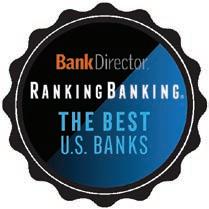
SPRING 2023 11
The Aging Cathedral
Landmark status will aid the drive to restore the ASUW Shell House
By Hannelore Sudermann
�he historic ASUW Shell House on the Montlake Cut was built to be a training hangar for the Navy during World War I. It later became home to the UW rowing program and was recognized by the Seattle Landmarks Preservation Board in 2018.
It has been described as rickety. And some have called it a cathedral. Either way, more than a century after the last nail was pounded in, the ASUW Shell House, also known as the Canoe House, also known as the U.S. Naval Training Hangar, has become an official Seattle landmark.
The recognition took place in 2018 to subtle fanfare at a hearing of the Seattle Landmarks Preservation Board. The board determined that the structure—designed by the Navy during World War I and used for several decades as headquarters for the UW rowing teams—met multiple criteria for landmark status.
Susan Boyle, ’75, ’79, an architectural historian, made the case on behalf of the
UW. No stranger to the University, where she earned both her bachelor’s and master’s degrees, the alumna crafted a thorough report nominating the structure and noting how the campus has grown around it.
“It’s such an amazing place,” she says of the UW in Seattle. She points to the formal north campus where London plane trees line Memorial Drive as it rolls down between French Renaissance-style buildings. “Throughout campus there are just incredible gifts from prior generations of planners, designers and campus leaders,” she says. But the shell house was a humbler endeavor, she adds.
For thousands of years, the site was a crossing-over spot where Indigenous
people carried their canoes between what are now known as Lake Washington and Lake Union. And then military and aeronautic history “give the building another level of importance,” Boyle says. Built for the seaplanes of the time, it is a rare example of its style of architecture. The trusses and many small pieces of wood form a gaping enclosed space, says Boyle. “It’s like you are in the bones of the whale just looking up at it. It’s really a treat.”
But most people associate the building with rowing since it served as home to the men’s and women’s crews for several decades, says Boyle. That includes the famous Husky team that won gold in the 1936 Olympics in Berlin—the focus of the New York Times bestseller, “The Boys in the Boat,” and of an upcoming feature film directed by George Clooney.
On a recent visit to the shell house, Eric Cohen, ’82, pointed out the afternoon sunlight streaming through the windows. “You don’t see light like this anywhere today,” he says. A former UW coxswain, Cohen now serves as team historian. The shell house is often in his research because of the generations of UW rowers who used it. In the late 1920s, a mezzanine was added to make a workshop where boat-building genius George Pocock crafted racing shells.
When the crew moved to the Conibear Shellhouse in 1949, the old hangar was turned into a home for the sailing team and a site where people could rent canoes. Around that time, the structure was described in the Seattle Post-Intelligencer as “the rickety UW boathouse.”
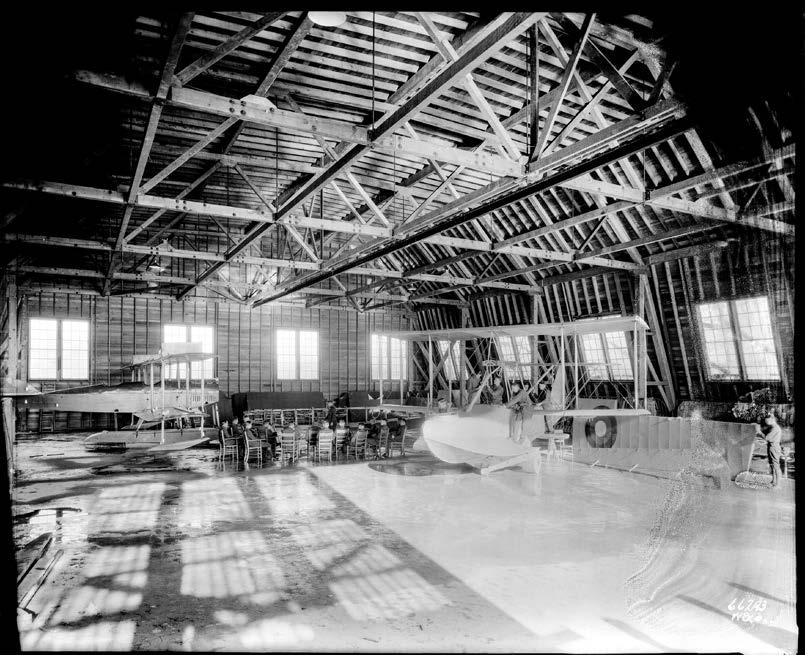
At different points, it was nearly forgotten by the University, says Cohen. “But they never really got around to tearing it down.”
Though the shell house was nominated to the National Register of Historic Places in 1975, students like Cohen and his teammates didn’t know about their historical connection to the building. “But today it has a national presence,” he says.
While landmark status may affect what changes the University can make to the structure, it also may help with efforts to restore it. A campaign is underway to raise $18.5 million to preserve and update the structure as a student space for lectures and gatherings, a cultural center and a venue for meetings, conferences and special events.
Boyle has no doubt it will someday welcome thousands of visitors: “The building has many, many fans.”
NEWS AND RESEARCH FROM THE UW 12 UW MAGAZINE
MOHAI, PEMCO WEBSTER & STEVENS COLLECTION, 1983.10.1246
Body Language
The Burke Museum’s special exhibit gallery feels like an escape. The latest exhibition, “Body Language: Reawakening Cultural Tattooing of the Northwest,” submerses visitors in traditional tattooing practices and their modern expressions. The exhibit examines the rich history and artistry of Indigenous tattooing of the Northwest coast. Photographs, cultural belongings and contemporary art reveal how these previously disrupted and banned traditions have endured through artists' efforts. “Body Language” celebrates the resilience of Indigenous tattoo practitioners and those who wear the visual language of their ancestors on their bodies. The exhibit runs through April 16.
TheHub
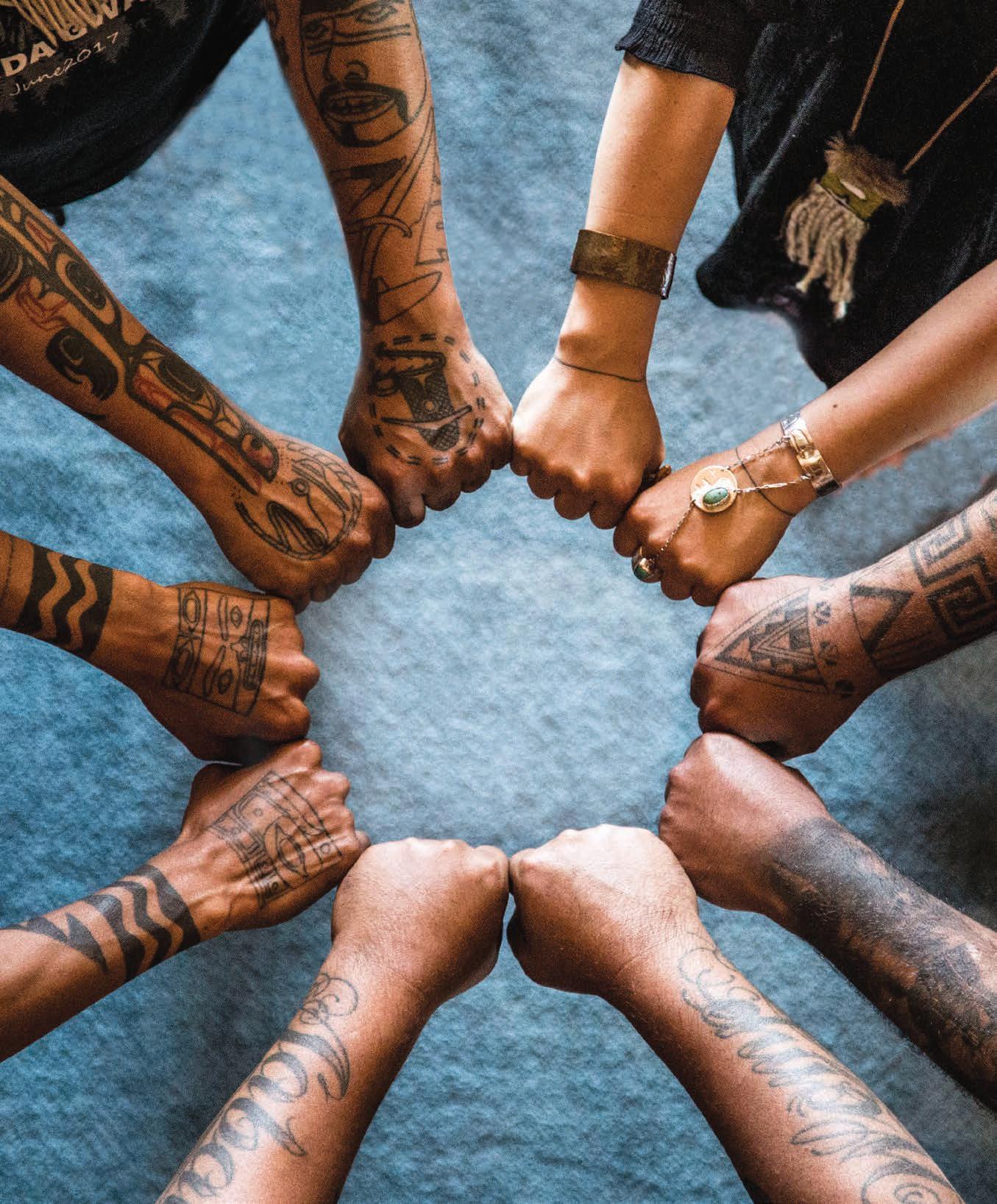
STATE OF THE ART BURKE MUSEUM
Photo by Aaron Leon
Parasite Paradox
Using specimens from the Burke Museum, a research team finds a worrisome decline
By Hannah Hickey
�his copper rockfish (Sebastes caurinus) was collected in 1964 in Puget Sound. It was part of a new study that examined specimens of eight fish species and found a dramatic decline in the number of parasites over time.

A recent UW study examined more than a century of fish specimens from the Puget Sound and found that fish parasites are far less abundant now than they were in 1880.
The data, which was developed in large part from preserved fish in the UW Fish Collection at the Burke Museum, suggests that parasites may be especially vulnerable to a changing climate.
“People generally think that climate change will cause parasites to thrive, that we will see an increase in parasite outbreaks as the world warms,” says the study’s lead author, Chelsea Wood, associate professor of aquatic and fishery sciences. “For some parasite species that may be true, but parasites depend on hosts, and that makes them particularly
vulnerable in a changing world where the fate of hosts is being reshuffled.”
For parasites that rely on three or more host species during their lifecycle—including more than half the parasite species identified in the study’s fish—analysis of historic specimens showed an 11% average decline in abundance per decade. Of 10 parasite species that had disappeared completely by 1980, nine relied on three or more hosts.
“Our results show that parasites with one or two host species stayed pretty steady, but parasites with three or more hosts crashed,” Wood says. “The degree of decline was severe. It would trigger conservation action if it occurred in the types of species that people care about, like mammals or birds.”
And while parasites inspire fear or disgust—especially for people who associate them with illness in themselves, their kids or their pets—the result is worrying news for ecosystems, Wood says. “Parasite ecology is really in its infancy, but what we do know is that these complex-lifecycle parasites probably play an important role in pushing energy through food webs and in supporting top apex predators.”
SLEEP SOLUTION
A study measuring the sleep patterns of 500 UW students illustrates the importance of getting outside during the day, even when it’s cloudy. Published in the Journal of Pineal Research, the study found that the subjects fell asleep later in the evening and woke up later in the morning during winter. “Our bodies have a natural circadian clock that tells us when to go to sleep at night,” says biology professor Horacio de la Iglesia. “If you do not get enough exposure to light during the day when the sun is out, that ‘delays’ your clock and pushes back the onset of sleep at night.” In addition to noting that delayed timing of sleep was evident during the winter months, the study found that daily exposure to daylight is key to preventing a delayed phase of the circadian clock and the circadian disruption that is typically exacerbated in high-latitude winters like ours.
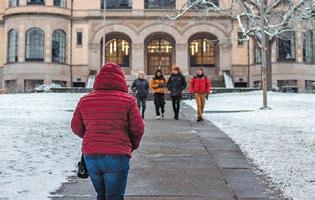
Virtual 3D tours on real-estate websites such as Zillow and Redfin allow viewers to explore homes without leaving the comfort of their couches. Sometimes the homes contain evidence of current residents’ lives. Curious about whether personal belongings visible in 3D tours could introduce privacy risks, UW researchers examined 44 tours. Each was for a home in a different state and had at least one personal detail—like a letter, a college diploma or photos—visible. The researchers concluded that the details left in these tours could expose residents to threats, including phishing attacks and credit card fraud. “With 3D tours, it is possible to see all rooms in a house and many more angles of a room than with photos,” says Rachel McAmis, ’22, a doctoral student in computer science and engineering and lead author on the study. The team published the findings in November and will present them at the USENIX Security Symposium in August.

RESEARCH APRIL HONG ISTOCK 14 UW MAGAZINE
SELLER BEWARE
NATALIE MASTICK/UNIVERSITY OF WASHINGTON
PLAY LIKE YOUR HUSKY HERO








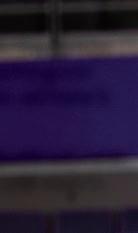
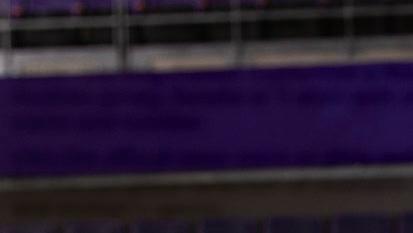
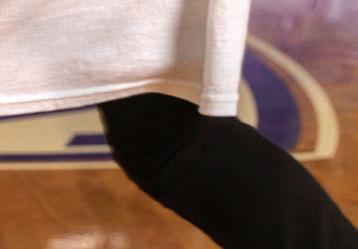



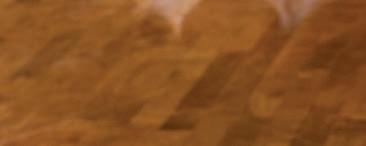


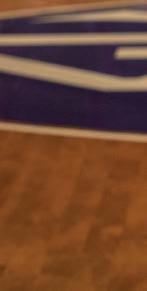
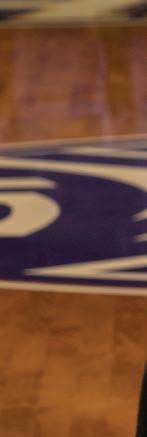

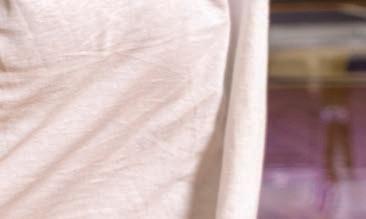

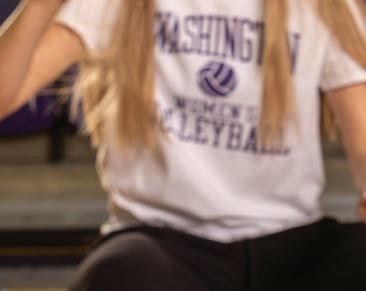
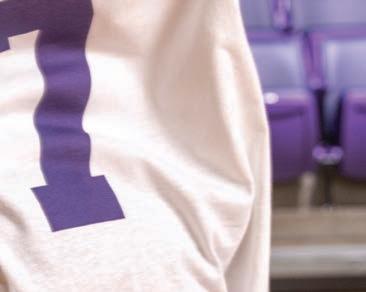

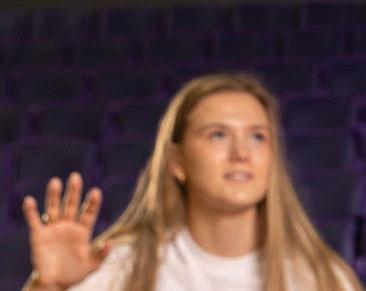




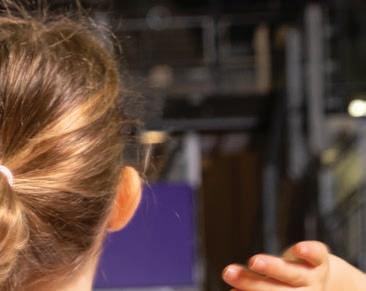

On or off the court and fi eld, support your favorite UW athletes—like Husky volleyball’s All-American setter Ella May Powell. Customize a Washington Huskies jersey, hoodie or T-shirt with an athlete’s name and number. Visit the offi cial team store at shop.gohuskies.com for the complete selection of available UW men’s and women’s sports.
Back in Business to the 1990s
The Foster School library turns 25
By Hannelore Sudermann
Synergy. Yes, that’s the word. Or should we say, that’s the corporate buzzword and one of the many hangovers from American business culture in the 1990s.
It was synergy at work when Jason Sokoloff, head librarian at the Foster School of Business, and his team decided to create something joyful and unconventional to welcome students back to campus last fall. At that point, they remembered their library was about to turn 25.
“The idea sort of dawned on us as we were getting ready to reopen,” Sokoloff says. “We had a small display case and we could exhibit something that had connection with business and industry.” They chose to tap into trappings from a quarter century ago and curate a pocket exhibit they call “It Came From the ’90s.”
“We pulled it together through our social connections,” Sokoloff says. After going through their own attics and sending emails to friends and colleagues, they came up with items including a Nintendo 64 (the last video game console that used cartridges), a Blockbuster card, a pile of Beanie Babies, a Tamagotchi, DVDs and other emphera.
The ’90s were the era of fax machines and Rolodexes and a heyday for buzzwords like “wheelhouse” and “bandwidth.” It was
the dawn of Zip drives and the decline of floppy disks. “We defined the exhibit as stuff people spent their money on: consumer and office products,” Sokoloff says. “The idea was to highlight consumer technology and pop culture.”
The exhibit’s pièce de résistance is a working iMac G3, borrowed from the Living Computers: Museum and Labs. It is stationed at the library entrance, where visitors can leave digital sticky notes.

The quarter-century-old library itself has the feel of an underground chapel. An 80-foot-long skylight brightens a central area packed with tables and chairs. Mornings there are quiet, but as the day progresses, students fill the seats. “We’re a big and popular study hall, arguably the busiest of the ‘branch’ libraries on the campus,” Sokoloff says.
The library serves more than 2,500 business students, most of whom have no memory of what it was like without computers in the house. For them, much of the exhibit—which runs through June 9— will seem novel and strange.
So much in the world of business is about looking forward, about finding the next new thing. Sokoloff and his team have found joy in looking back.

Find connection and joy IN EVERYDAY LIVING
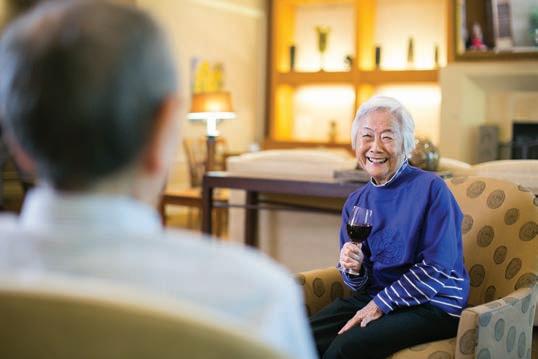
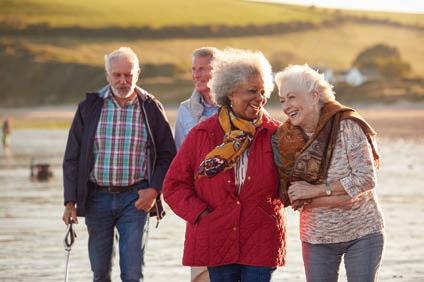
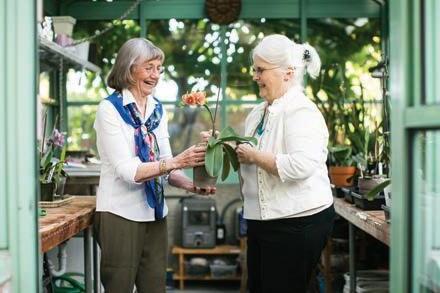
Visit eraliving.com/joy to learn more. Locations in Wallingford and Issaquah. Ask about special benefits for members. UWRA-affiliated University House retirement communities feature intellectually rich activities, exquisite dining, a variety of exercise classes, and the supportive services you need to thrive in place as your circumstances change.
16 UW MAGAZINE
FELIX WINKELNKEMPER /WIKIMEDIA COMMONS
When the Foster library first opened, the iMac was changing desktop computing. Now one is part of a special exhibit celebrating the library’s birthday.

SPRING 2023 17
Opioid GameChanger
UW Medicine researchers zero in on a vaccine to prevent misuse and overdose of pain meds
By Chris Talbott
Drs. Jürgen Unützer and Marco Pravetoni are scientists and researchers whose professional lives are ruled by rigor, discipline and a passion for improving the lives of patients. At the same time, the Department of Psychiatry & Behaviorial Sciences colleagues are visionaries in the development vaccines and other novel treatments for opioid use disorders and overdose, among the deadliest of public health problems in the United States.
Pravetoni, a professor of psychiatry at the UW School of Medicine, has invested more than a decade of his career to pursuing the development and translation of vaccines and other antibody-based treatment strategies that have eluded scientists for more than half a century. He’s so close, he can see the outcome of these efforts: “I’m very excited about how far we have made it. I’m confident this will be a game-changer in the treatment of opioid use disorders.”
For Unützer, the psychiatry department chair and director of the Garvey Institute for Brain Health Solutions, the
but I think we’re validated in that.”
Monoclonal antibody-based treatments for substance use disorders and opioid use disorders could reach the market in five years, and vaccines for a multitude of addictive substances could be a decade away, Pravetoni predicts. That will require commercial investment, which will require more proof his methods can work. He and his colleagues have begun Phase One clinical trials of the first human oxycodone vaccine and are preparing to petition the U.S. Food & Drug Administration to allow human trials for vaccines targeting heroin, fentanyl, and their analogs or metabolites. His team also is seeking to initiate manufacturing of the monoclonal antibody treatments meant to complement Narcan, the only FDA-approved overdose reversal agent.
“These treatments would be incredibly powerful,” Unützer says. “They could help millions of people, and the work that he’s doing is at a fairly critical stage. He has proven in his laboratory that vaccines and antibodies can protect against some of the negative and dangerous effects associated with opioid misuse and overdose. The question now is: Can you do it in a human?”
monoclonal antibody could be administered alongside naloxone to save lives.
“This could really be a third pillar of treatment,” Pravetoni says. “Imagine antibodies as a sponge, and the sponge is going to mop up all the drug available. That will diminish the amount of drug that can actually get to the brain, which is a very different approach. We are not the first to come up with the idea of vaccines or monoclonal antibodies for addiction or overdose. But we are the first group to reach clinical trials with an opioid vaccine. And we are one of the very few groups in the U.S. that has funding to advance monoclonal antibodies for fentanyl overdose to clinical trials.”
The team advanced the understanding of the processes involved last fall when it released several papers identifying novel vaccines and monoclonal antibodies and their mechanism of action against fentanyl and other relevant target drugs. It hopes to start clinical trials for fentanyl and heroin vaccines in 2024. Pravetoni thinks it made perfect sense to bring his cross-disciplinary work to Seattle, where UW Medicine sits at the intersection of hightech and person-to-person approaches to modern medical problems.
Current treatments are not always sufficient for dealing with substance use disorders and preventing or reversing overdoses. But a growing body of research suggests that vaccines and monoclonal antibodies can be used.
Marco Pravetoni uses these novel strategies to develop new medical interventions and is among the first to test these new interventions in humans.
investment was the $2 million he staked for this vital work and the recruitment of Pravetoni away from Minneapolis in January 2022.

“Marco has raised about $20 million in federal funding to support translation of monoclonal antibodies against fentanyl overdose since he’s come here,” Unützer says. “What that says is there are very smart scientists now at the National Institutes of Health and at the National Institute on Drug Abuse who have recognized this really is a very promising approach. So we made a little bit of a gamble,
Addiction is one of America’s biggest public health problems, and there are few solutions to the crisis. The National Insitute on Drug Abuse says more than 100,000 people died from drug-induced overdose each year from 2020 to 2022. The psychiatry department’s Addictions, Drug & Alcohol Institute says overdose deaths in Washington state have increased 30% year over year from 2019 to 2020 and ’20 to ’21.
Although treatment and understanding have evolved quickly, there are really only two ways to treat addiction: drugs that block or replace the effects of misused substances, and psychotherapy and psychosocial approaches. These methods are imperfect and not widely used. A vaccine would allow psychiatrists to attack the problem in a different way, blocking the effects of opioids and other substances such as methamphetamine with drug-specific antibodies over a sustained period of time. In the context of overdoses, a
18 UW MAGAZINE
Become an advocate today Higher Education Needs Your Voice UWimpact.org
ADVOCATE
A program of the UW Alumni Association
These treatments would be incredibly powerful. They could help millions of people.
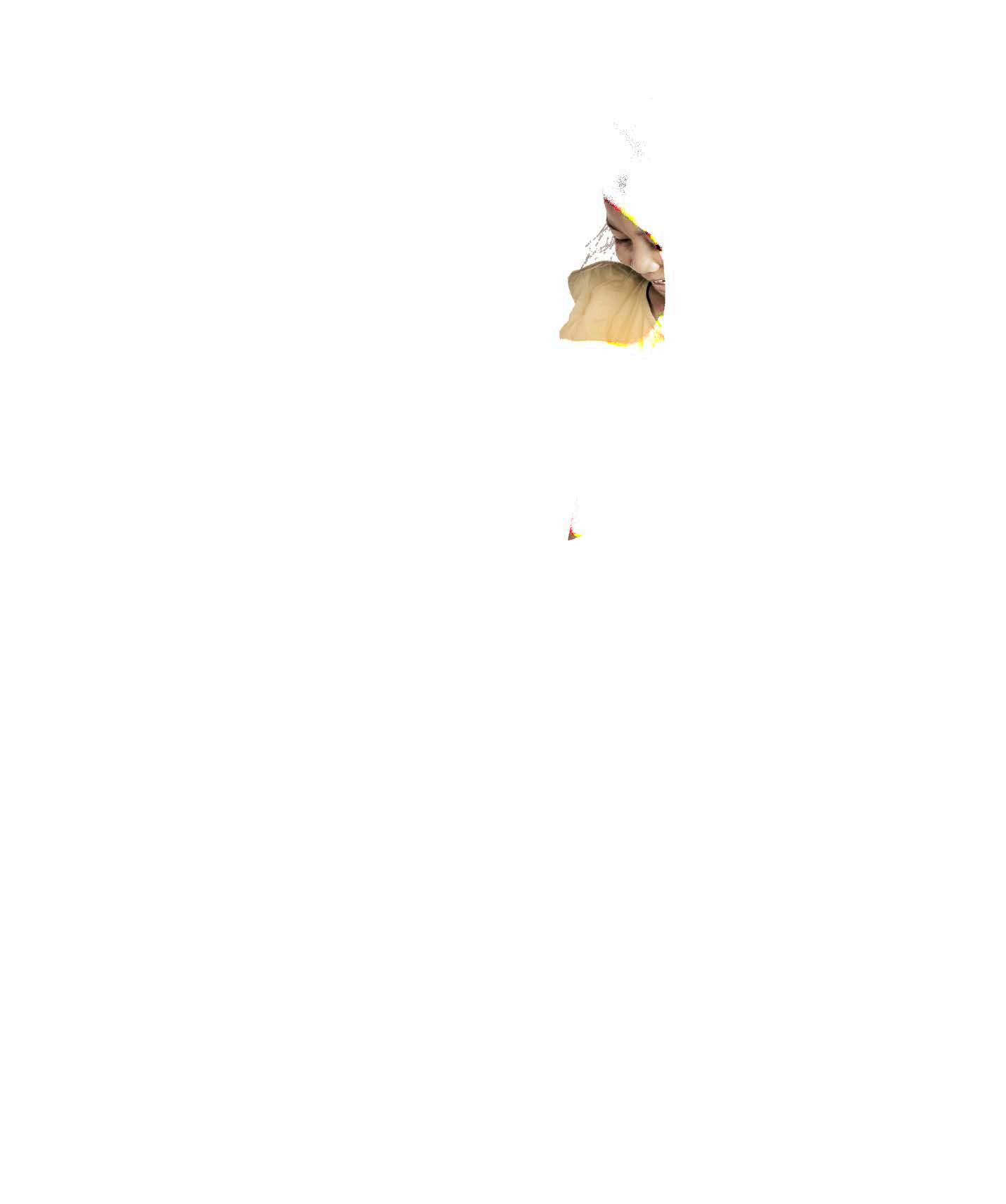
‘Revolution to Evolution’
The Office of Minority Affairs & Diversity tells its history in a new book
By Hannelore Sudermann
Above: Garry Owens, center, and Jesus Crowder, left, were among the activists who demanded the UW enroll and support a more diverse student body. �heir activism and input led to the formation of the Office of Minority Affairs & Diversity and made the University more accessible to future generations of students.

Right: In 2013, students rallied for a requirement that all undergraduates must take at least one course that focuses on sociocultural, political and/or economic diversity.
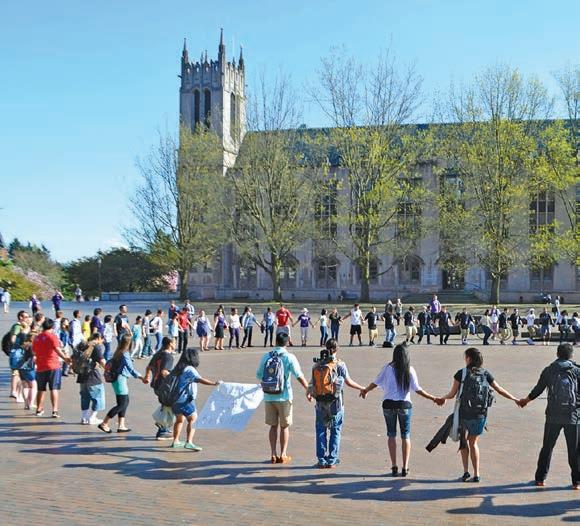
Campus diversity is no longer a revolutionary idea. But it certainly was in the late 1960s and early ’70s when a small number of student activists and an even smaller number of faculty and staff pushed the University of Washington to serve all of the state’s potential college students.
With sit-ins, protests and a list of demands, the activists—led by the Black Student Union—insisted the UW recruit and support a multiracial, multicultural student body, hire faculty of color and expand the curriculum to be more culturally diverse. Through their activism, their vision and their continued engagement, they forged a new future for the UW and influenced the trajectories of generations of students.
Now, Emile Pitre, ’69, one of those early student activists and a longtime member of the UW staff, has captured the story of the decades of work in his new book, “Revolution to Evolution: The Story of the Office of Minority Affairs & Diversity at
the University of Washington.” He blends research and interviews with his own insights and memories to offer a comprehensive chronicle of one of the first diversity, equity and inclusion (DEI) programs in the country.
After describing the formative years of diversity work at the UW, Pitre fills in the eras, capturing the turbulence of the late 1970s and 1980s when administrators tinkered with admissions practices which led to protests, arrests and staff resignations. The 1990s brought state-mandated changes to enrollment policy that prohibited the consideration of race or gender in admissions. Instead of allowing the rule to thwart their efforts, the staff adapted, “and we kept moving,” Pitre says.
He also shines a light on colleagues who were driven to support students and undo structural and cultural racism across campus. Their efforts resulted in thousands of student successes. Erasmo Gamboa, ’70, ’73, ’84, for example, was one of the first to be recruited to the UW in late summer 1968. He remembers when a group of Black UW students drove into the city of Toppenish to find prospects for the new program. “They told us if we were interested, they would help us get in,” says Gamboa, who hadn’t imagined attending the UW.
Gamboa arrived on campus to join what was then called the Special Education Program and is today known as the Educational Opportunity Program (EOP). While he wasn’t high-achieving in high school, Gamboa graduated from the UW
with honors. He stayed to get his Ph.D. in history and, as a member of the faculty, became a leading scholar of Latino history.
In the book, Pitre calls out many more alumni successes including the current U.S. Poet Laureate, Ada Limón and Anisa Ibrahim, director of the Harborview Pediatrics Clinic. “It was an EOP counselor who truly believed in my dream to become a doctor and gave me practical steps to ensure my success,” says Ibrahim, whose family fled the civil war in Somalia and settled in Seattle when she was just 6. “I would not be where I am today without the [OMA&D] Instructional Center. I have never seen a more dedicated group of educators. They not only cared about our success as students but also cared about us as individuals. After a long day roaming campus, many of us referred to going to the IC as going home.”
“This is a significant book because it speaks to what is possible when programs and services are designed withunderrepresented and underserved students in mind,” says Rickey Hall, vice president for Minority Affairs & Diversity at the UW. As one of the first DEI offices in the country, it has an important story to share, he adds. “Hopefully other institutions will see what’s possible with intentionality and investment.”
“Revolution to Evolution: The Story of the Office of Minority Affairs & Diversity at the University of Washington,” is published by the UW Office of Minority Affairs & Diversity and available through the UW Press for $29.99.
20
EMILE
UW MAGAZINE
PITRE COURTESY STEVE LUDWIG II
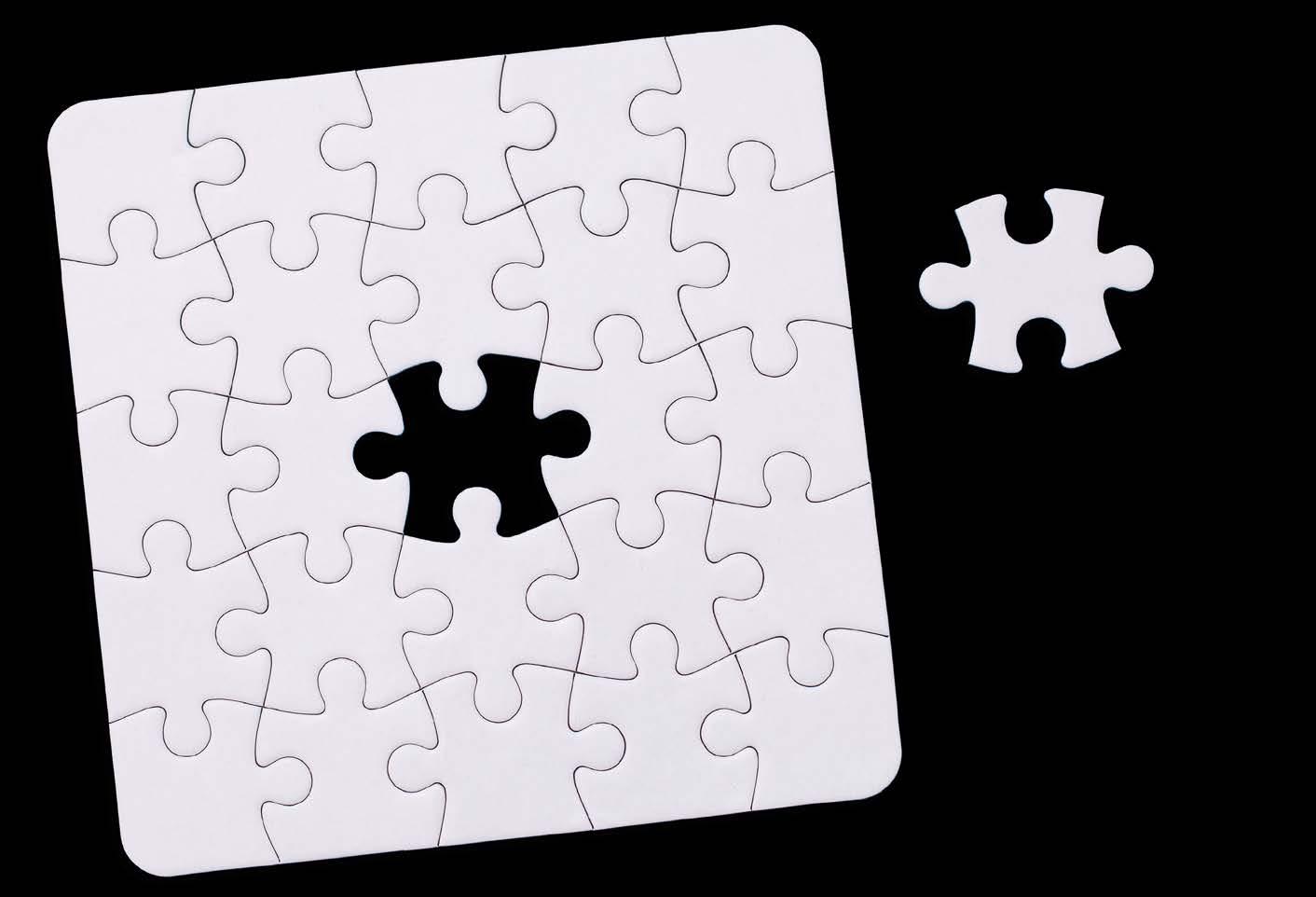
Some discounts, coverages, payment plans, and features are not available in all states, in all GEICO companies, or in all situations. GEICO contracts with various membership entities and other organizations, but these entities do not underwrite the offered insurance products. Discount amount varies in some states. One group discount applicable per policy. Coverage is individual. In New York a premium reduction may be available. GEICO may not be involved in a formal relationship with each organization; however, you still may qualify for a special discount based on your membership, employment or affiliation with those organizations. GEICO is a registered service mark of Government Employees Insurance Company, Washington, DC 20076; a Berkshire Hathaway Inc. subsidiary. © 2022 GEICO. THE PERFECT FIT. The partnership with University of Washington and GEICO.
A Very Confetti Ending
New coach Kalen DeBoer leads the Huskies to a resounding Alamo Bowl victory over Texas to put a bow on a terrific Husky season
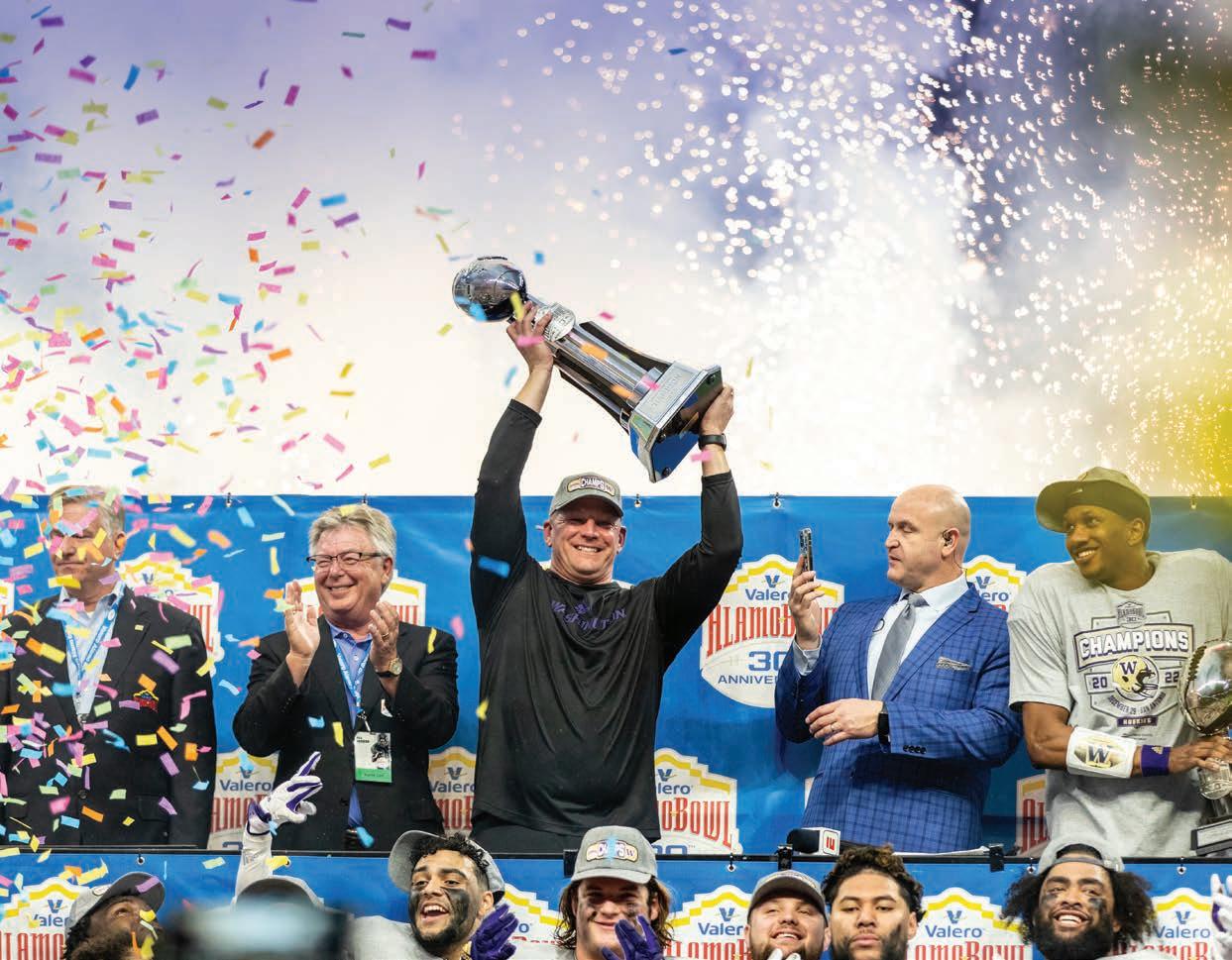 By Jon Marmor
By Jon Marmor
Under the steady hand of Kalen DeBoer (hoisting trophy), the Huskies made an incredible turnaround from a disappointing 2021 to finish 2022 with an 11-2 record and a No. 8 national ranking. With quarterback Michael Penix Jr. and other key players coming back next year, sights are set on a Pac-12 title.
When Kalen DeBoer was named the head coach of the Huskies just after Thanksgiving 2021, it didn’t take him long to say the Dawgs would give opponents headaches on both offense and defense. He then went out and led the Huskies to an 11-2 record and a convincing 27-20 victory over Texas and former Husky head coach Steve Sarkisian in the Alamo Bowl in San Antonio. Oh yeah, the game wasn’t nearly as close as the score might lead you to believe. In the postgame celebration, DeBoer honored his players and staff, who in one short season rebuilt the Dawgs after a 4-8 season and made the Huskies a Pac-12 powerhouse and a national story. “Tonight
was a culmination, I think, of everything that we’ve worked on, the things that we’ve tried to improve,” he said. “You saw our physicality, I think, take that next step, and finding a way to win is something that I think we’ve really emphasized. … We’re going to find a way to win. That refuse-to-lose mantra has been a piece of what we’ve talked about.”
Led by transfer quarterback Michael Penix Jr. (a school-record 4,641 yards passing, 31 touchdowns, 151.3 rating), the Huskies’ relentless offense averaged just shy of 40 points per game (second only to USC) and a league-leading 515 yards per game. These figures certainly aren’t
surprising, given DeBoer’s history creating offenses that can’t be stopped. On defense, the Huskies were nearly as solid, ranking third in scoring defense (26 points per game). Put those two sides together, and you can see why this team came within one victory of going to the Rose Bowl. Not a bad turnaround from 4-8 in such short time.
The Huskies’ hard work translated into something larger—a re-energized fan base that can’t wait for fall 2023.
Penix announced at the team banquet that he would return for 2023 instead of turning pro. That was followed by a number of the talented receivers saying they would join Penix back in Husky Stadium.
When you combine that with the seven-game winning streak the Huskies closed 2022 with, you can understand why Husky Stadium will definitely be the place to be next season.
22 UW MAGAZINE
ATHLETICS COMMUNICATIONS
GROWING TOGETHER
Each day is a chance to grow. BECU celebrates the opportunity to continue our partnership with the University of Washington and its Alumni Association. Together we spring into action to support and uplift communities across the Pacific Northwest.
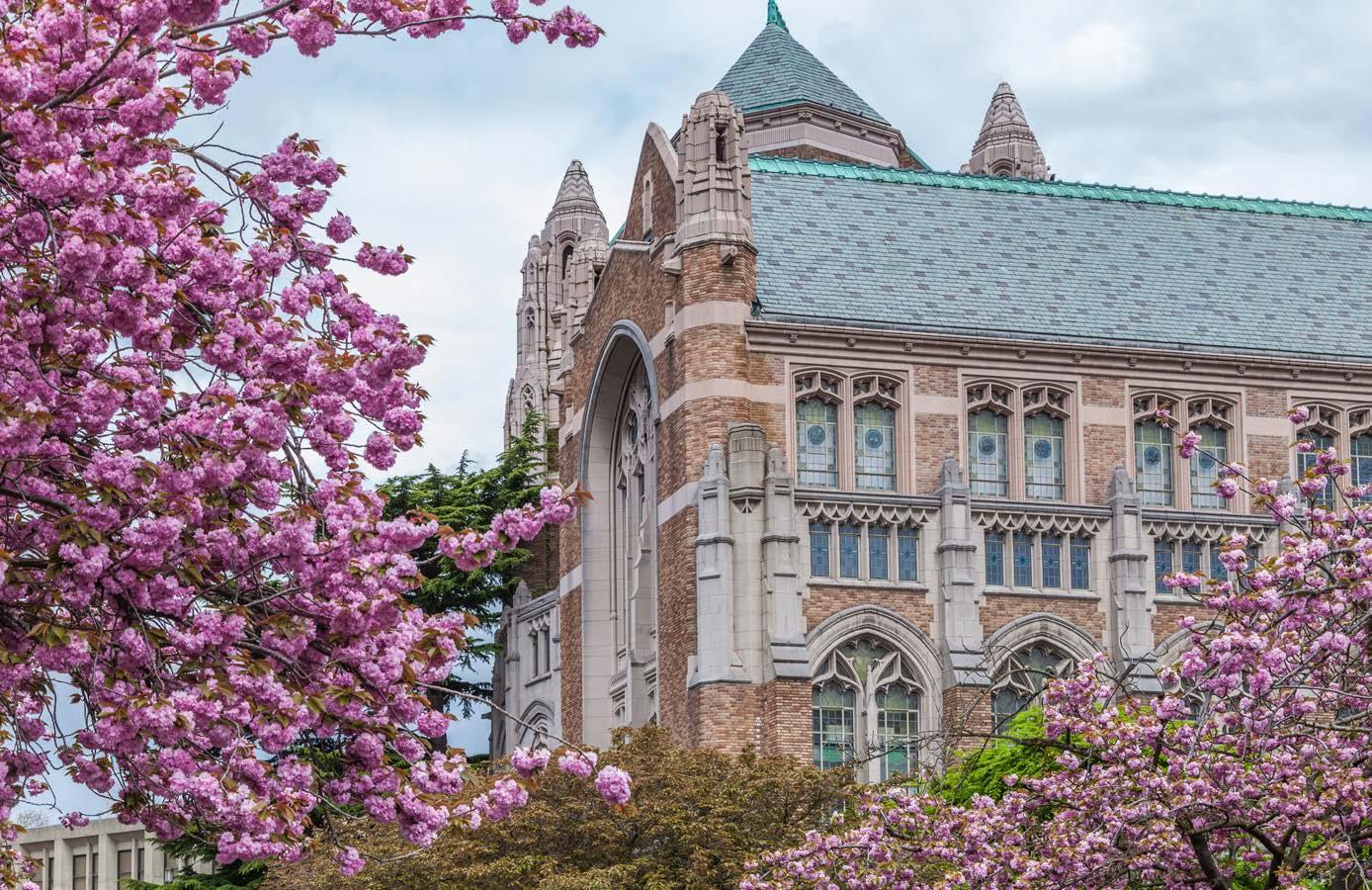
Federally insured by NCUA. becu.org
The Way Ahead for Higher Ed
Facing an alarming decline in public confidence, colleges and universities are working together to restore trust
BY HANNELORE SUDERMANN ILLUSTRATION BY JOE ANDERSON
Higher education is in trouble. Colleges and universities across the country are facing a worrisome decline in public confidence. And that drop in trust can affect funding, community interactions and college enrollment.
A recent survey by New America, a left-leaning think tank, found that only about half of Americans believe colleges and universities are leading the country in a positive direction. Those who feel positively about the impact of the institutions dropped from 69% in 2020 to 55% in 2022. The survey also showed a strong partisan divide. Nearly three-quarters of the Democratic respondents said they believed colleges and universities have a positive effect, just 37% of the Republicans did. With both parties, though, the decline is significant.
According to the Gallup Organization, Americans are in a time of record low confidence across all institutions including all three branches of federal government, the media, the police, organized religion and the medical system. But over the decades, higher education has fared better than most.
Now news about topics like the high price of tuition, high student debt and legacy admissions at private schools are eroding public confidence. So have scandals like “Operation Varsity Blues,” a college admissions bribery scheme. And just last fall, college rankings came into question when the U.S. News & World Report was criticized for using faulty data and accused of prizing wealthier, private colleges and not performing objective evaluations. Now many schools, including the UW School of Law and the UW School of Medicine, have stopped participating in the magazine’s rankings program.
Education leaders around the country are working together to figure out what to do.
Over the years, the University of Washington has found ways to show how it benefits individual lives, communities and society as a whole while deepening its connections with its alumni and the communities of Washington.
In February, at a Council for Advancement and Support of
Education conference in Bellevue, UW President Ana Mari Cauce took the stage to discuss the issue. She was joined by Teresa Hutson, Microsoft’s corporate vice president for the Technology and Corporate Responsibility Group, and Ted Mitchell, president of the American Council on Education and a former U.S. undersecretary of education.
Mitchell said he was already talking about the troubling trend of declining public trust five years ago. Today, the situation is worse. “The meter is going the wrong way,” he told the audience of higher education workers. “The American public has lost a lot of confidence over time.” In addition to a partisan split, focus groups are showing that political independents, a growing category, are also trending down, he added.
He pointed to a robust narrative feeding the unpopularity. People are saying that you don’t need to go to college anymore, and if you do, it will not pay off, he said. The narrative also suggests that college won’t help you do better at your job, and the kicker: “You’ll be brainwashed,” he said. “In a lot of ways, the problem with that narrative isn’t that it’s false. In each of those bits of the narrative, there’s a nugget of truth.”
Five years ago, the UW joined forces with Washington State University in a public campaign to reach families about the possibility and affordability of college. They called it “Yes, It’s Possible.” “The goal was to make it clear that you can attend college and you can graduate without a lot of debt,” said Cauce. The program’s site states that “no student should have their dreams denied because of their background and financial circumstances” and directs potential students and families to explore financial aid and grant opportunities at the state’s public colleges and universities and community and technical colleges.
Another of the UW’s pathways to raise public awareness and boost support for education came about in 2019, when UW and other Washington state colleges and universities worked alongside the business community to increase state support for scholarships. The resulting Washington College Grant has been the state’s
24 UW MAGAZINE
most significant investment in higher education in a decade.
The businesses, which included Microsoft and Amazon, asked the state to tax them for the purposes of developing a larger workforce and a stronger community in which to operate. Businesses need predictability, said Hutson of Microsoft. There is predictability in knowing this state is investing in the people who live here, who go to college here, she added.
But the secret ingredient in the legislative recipe was the alumni voice. More than 2,000 people, many of them Huskies, wrote to their legislators in favor of the new tax. Olympia heard from constituents in 48 of the state’s 49 legislative districts.
The Workforce Education Investment Act created the Washington College Grant to increase state grants for low- and middle-income families. Now members of families making $64,500 or less can get full tuition at any eligible in-state public college or university or comparable support at approved private college or technical training programs. In the last academic year, the grant has paid some or all of the tuition for more than 94,000
While polls show the public still sees college as a pathway to a better life, confidence in higher education has dipped in recent years. It could affect enrollment and public funds for research and student support. �he UW is working with other schools and the business community to communicate higher education’s value to the general public.
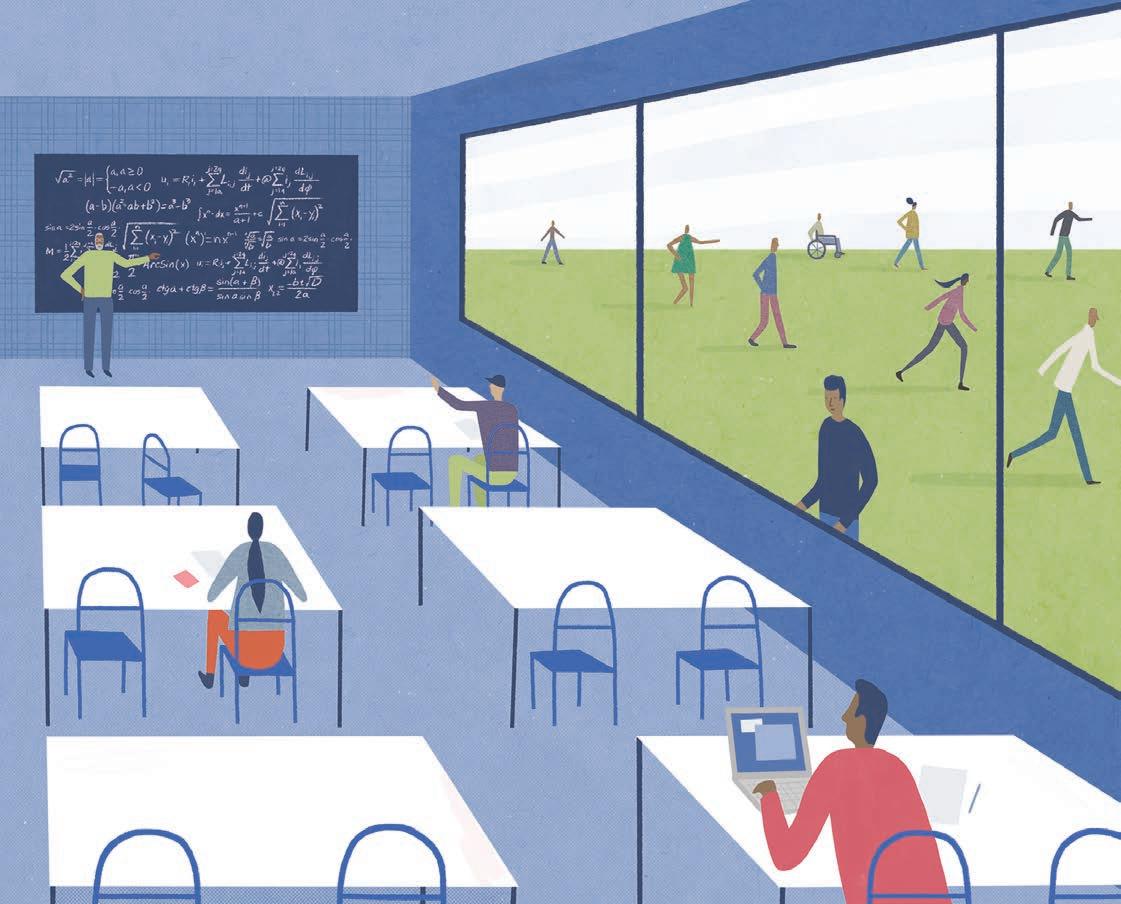
students—more than 14,000 of them at the UW. “We are so lucky in this state,” said Cauce. “We are one of the most affordable states in the country for students who want to go to private or public colleges and universities.”
Now all colleges and universities need to do more to communicate their value, said Cauce. “Kids start deciding that they’re not going to make it to college when they are in middle school.” Those in higher education need to reach them and their families with stories about the student experience and about the good work the schools are doing in their communities.
The UW and other schools are teaming up with institutions, businesses and key stakeholders through Discover the Next, an initiative funded by the Bill and Melinda Gates Foundation and a joint project of the Council for Advancement and Support of Education, the American Council on Education and the Association of Governing Boards of Universities and Colleges. “We take for granted that higher education in this form will always be around,” said Cauce. “If we don’t change, we could disappear.”
SPRING 2023 25
Values are Our Currency
New NCAA rules mean student-athletes can benefit from revenue generated by use of their name, image and likeness. How the UW does it differently than the rest
BY JON MARMOR
�wo years ago, college sports were forever changed when the NCAA changed its policy prohibiting student-athletes from earning money for the use of their name, image and likeness (NIL). This opened a new world for the University of Washington’s student-athletes, coaches and administrators. The UW and Montlake Futures, the primary collective handling NIL deals for Husky student-athletes, have used the University’s values as the guiding light to deal with this new world of opportunities.
Under the NCAA’s new rules, student-athletes can be paid by third parties but not by universities, who are also restricted by NCAA rules from arranging and facilitating deals for student-athletes. These rule changes led to the creation of “collectives,” small organizations that are not officially affiliated with universities but deal directly with student-athletes and NIL activities. “We are building the plane while we fly it,” says Jamaal Walton, the UW’s senior associate athletic director in charge of sports administration and strategic initiatives.
While there have been stories of high-profile athletes (mostly football or men’s basketball players) jumping from one school to another because of a multimillion-dollar NIL deal, in reality that’s rare, UW athletics officials say. Also rare is the way the UW has undertaken NIL efforts in a direction different from most schools.
Montlake Futures is the primary NIL source for UW student-athletes. It is a lean-staffed, 501(c)(3) organization that seeks out and develops NIL opportunities. To date, it has funded nearly 200 deals and facilitated (that is, consulted on, for no charge) nearly 100 additional deals.
What differentiates Montlake Futures from many other collectives is that it is a nonprofit and does not receive a cut from the fundraising opportunities provided to Husky student-athletes. While individuals can reach out directly to student-athletes for NIL deals without the help of a collective, working with Montlake Futures gives them an advantage “because we can develop NIL opportunities that benefit our community,” says Emmy Armintrout, executive director of Montlake Futures.
Collectives such as Montlake Futures are not officially connected to the UW. “Our role is to provide a structure for the UW community to support NIL. We do so by raising tax-deductible donations and paying student-athletes to do NIL work for nonprofit organizations,” Armintrout explains. Studentathletes are not required to work with collectives; they can
find and develop their own deals through opendorse.com or serve as ambassadors for such brands as adidas, an official partner of the UW athletic department.
“I think it can be difficult for some people to wrap their heads around NIL and how it has (and will) change the landscape of college athletics,” says Patrick Crumb, ’88, a founding adviser to Montlake Futures and former board president of the UW Alumni Association. He is president of regional sports networks at Warner Bros. Discovery, AT&T SportsNet and ROOT Sports Networks. “But NIL is here to stay and in order for the UW to remain competitive, there must be NIL opportunities available for our student-athletes. That’s why we formed Montlake Futures—to provide UW student-athletes with the opportunity to receive compensation for their time and the value of their name, image and likeness. That having been said, it was always important to those of us in the founding group that we go about it the right way, in a way consistent with UW values.”
Montlake Futures has raised money or built awareness of such organizations as Seattle Children’s, Project Dawghouse (student-athlete housing subsidies near the UW campus), the Humane Society and the Hunger Intervention Program.
While the UW is not involved in creating or administering the deals with the student-athletes, it does play a critical role in providing education for student-athletes as well as support and mentoring from coaches and administrators. For instance, UW athletics administrators have met with players and coaches from all 22 sports programs to go over such topics as what they are interested in and what they value. Another area where the UW stands out is a partnership between the athletic department and the Foster School of Business. UW athletics and the Foster School announced a for-credit course—one of the first of its kind—dedicated to educating students on key name, image and license topics such as personal brand development and strategy, business and entrepreneurship, and opportunity evaluation. The goal of the course is not only to allow student-athletes to successfully navigate NIL but also to provide broader business education to any student interested in a sports or sports-adjacent career.
The information and education the UW provides is absolutely invaluable, given that Washington state has no state NIL law. “There is a lot of complexity to this,” Walton says. “What we can do is provide student-athletes the information and education so they can be successful in the deals they do decide to accept.”
Football players Devin Culp, Kristopher Moll, Giles Jackson and Alphonzo �uputala work at an event for the Hunger Intervention Program.
Women’s basketball players �rinity Oliver (left) and Hannah Stines enjoy some puppy love while lending a helping hand at the Seattle Humane Society.
Nineteen football players take part in an awareness campaign for the American Heart Association, “Go Red for Women.” Later, all 19 shared photos and information about women’s heart health with their social media audiences.
26 UW MAGAZINE
NIL AT A GLANCE
Student-athletes deal primarily with “collectives,” small organizations set up to connect them to fundraising opportunities. Montlake Futures is the primary collective for the UW, but other local collectives work with Husky student-athletes. The world of NIL is continually evolving. This is the most current information as University of Washington Magazine went to press in late February.
■ How can student-athletes cash in on NIL?
• Social media promotions and influencer activities
• Sale of autographs
• Starting their own business
• Appearance in TV or print advertisements
• Other endorsements of a third party
• Providing private sport lessons or running a camp or clinic
• Personal appearances
■ What makes the UW’s NIL efforts unique? The UW athletic department’s arrangement with the Foster School of Business to provide financial and business education to student-athletes
■ Can universities use NIL in recruiting prospective student-athletes?

The NCAA prohibits the use of NIL in recruiting
■ What makes Montlake Futures different than other collectives?
It is a nonprofit organization that does not take a cut of payments to student-athletes or charitable organizations
It raises money to fund NIL deals that benefit charitable organizations
■ Types of opportunities Montlake Futures has funded and the organization that benefitted:
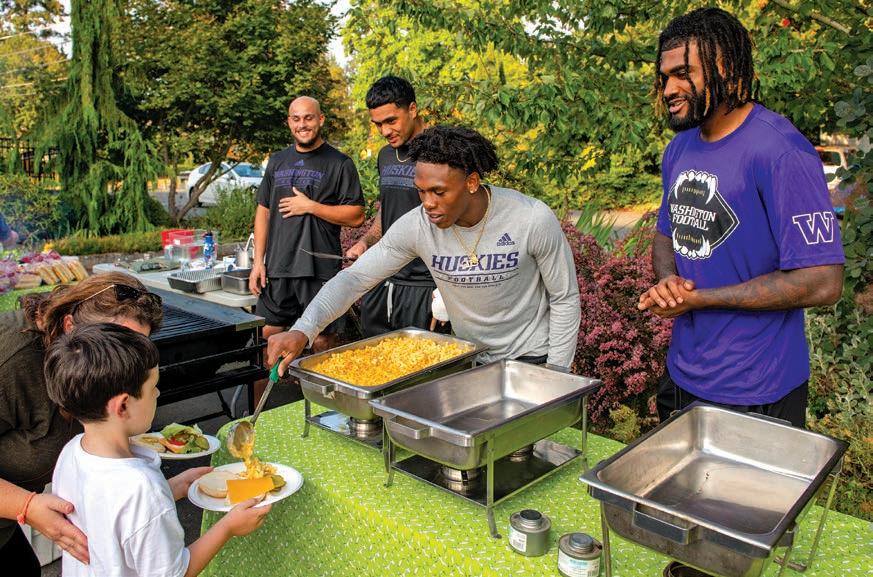
Camps: ReJoyce Academy, Boys and Girls Club, Richmond Youth Football
Fundraiser Appearances: Seattle Children’s, Hunger Intervention Program, Treehouse, Make-a-Wish Foundation
Good will and Awareness-Generation
Appearances: Forgotten Children’s Fund, 4C Coalition
Marketing: Humane Society, American Heart Association, Big Brothers Big Sisters

More information: Gohuskies.com Montlakefutures.com

/
EMMA OTTOSEN / MONTLAKE
EMMA OTTOSEN / MONTLAKE
EVAN MORUD
MONTLAKE FUTURES
FUTURES
FUTURES
SPRING 2023 27
EMMA OTTOSEN / MONTLAKE FUTURES
Doreen Alhadeff shows off an antique key, which symbolizes the intention of Sephardic Jews to return to their native homeland of Spain. For 500 years, Sephardic Jews were banished from Spain. Alhadeff, who led the successful effort to have that policy overturned, became the first American Sephardic Jew to gain Spanish citizenship.
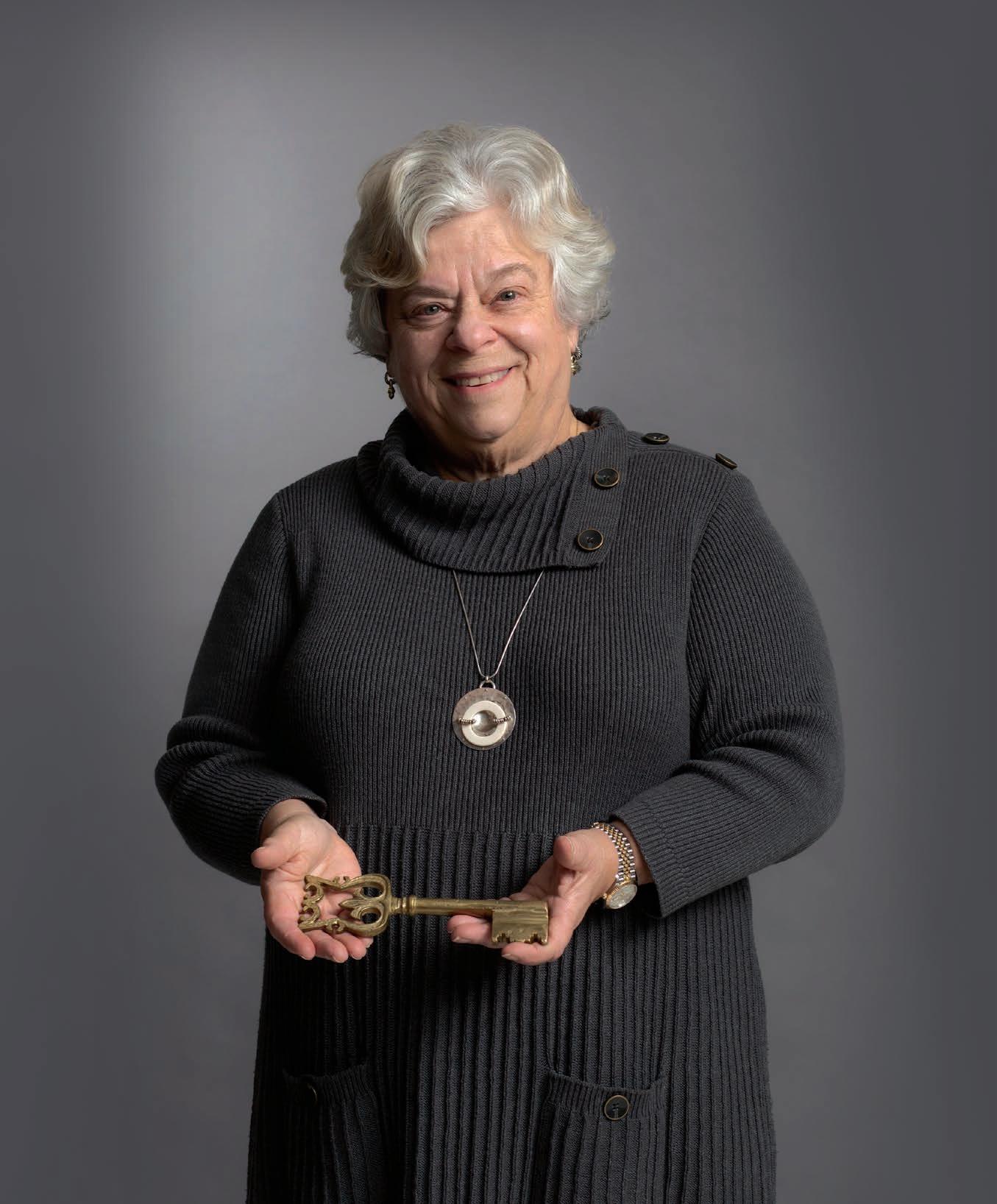
Knight Time
For five centuries, Sephardic Jews were kicked out of Spain—until Doreen Alhadeff of Seattle persuaded Spain to reverse course
BY DAVID VOLK PHOTOS BY RON WURZER
If Doreen Alhadeff
is any indication, you don’t have to wear armor, rescue damsels in distress or even slay dragons to be a knight. In fact, the 70-something Realtor from Seattle, who just became the most recent knight of the Order of Queen Isabella the Catholic, wasn’t alive in the Middle Ages, never jousted and probably never engaged in any crusades. Like many knights of yore, though, she has helped plenty of people in their quest to reclaim something that was stolen from them.
Their Spanish citizenship.
The crime may have occurred more than five centuries ago, when King Ferdinand and Queen Isabella issued the Alhambra Decree, which led to the expulsion of thousands of Jews from Spain in 1492, but when Alhadeff and Jennifer McCullum talk about it, the incident sounds much more recent.
“When you grow up as a generation of a diasporic people or culture, the grief of the homeland you’ve lost gets passed down [along] with the beautiful traditions of your family,” says McCullum, the assistant director of the UW’s Sephardic Studies program.
The 500-year-old tragedy became more of a current news story when the Spanish Parliament passed a repatriation law in 2015, giving Alhadeff, McCullum and thousands of Sephardic Jews the world over a chance to regain their citizenship. Both women jumped at the chance. “I felt it was very important. I’ve always had a strong affinity to Spain; it seemed more than just a great place. I knew what it meant to me. It was something that had been taken away, and I wanted to take it back,” says Alhadeff, ’72, who holds a bachelor’s degree in Spanish from the UW. In 2016, she became the first American Sephardic Jew to gain Spanish citizenship after the country passed the law allowing repatriation.
The accomplishment was no small feat. In addition to meeting the requirements other applicants faced, Alhadeff also had to provide proof of her ancestral ties to the country and certification of those claims by a recognized Jewish community organization where she lived. Once her documents were in order, she had to have them translated into Spanish and travel to Spain to have them notarized. She also had a limited time
to do it. The law was initially set to expire in three years. After learning firsthand how involved the process was, Alhadeff decided to assist others who were following in her footsteps.
“I knew what it meant to me. I felt like I was this one person at the time who could help people get through the process,” she says. McCullum was one of many to benefit from Alhadeff’s expertise.
Not knowing where to turn, McCullum, a then-newcomer to Seattle, sought advice from Sephardic Studies Chair Devin Naar, who was able to provide evidence of her ancestry. He also told her, “The first call you have to make is to Doreen,” McCullum recalls. “She has truly been a confidante and a cheerleader. This process would not have been possible without her.”
To understand why Spanish citizenship is so important, a little explanation is in order. Jewish communities have existed across the globe. Often they are divided into two broad cultural and geographic groups. Ashkenazic Jews lived in Eastern and Central Europe and used Germanic-based Yiddish as a language that transcended borders. Sephardic Jews settled in southern Mediterranean countries like Spain, Portugal and later Turkey and Greece, and spoke Spanish-influenced Ladino.
During the Middle Ages, the Iberian Peninsula was a center for Jewish thought and culture under Muslim rule. For a brief period, it was also home to Europe’s largest Jewish population. Conditions changed as the Christians conquered what is now Spain. Jews were given an ultimatum in 1492: convert to Christianity or be expelled from Spain.
Many fled to other Mediterranean countries, including the Ottoman Empire (present-day Greece and Turkey). One of the next great migrations came 400 years later, as the Ottoman Empire collapsed in the early 20th century and many headed to the U.S. McCullum’s great-grandmother emigrated in 1915 to New York from Salonica, Greece, once home to the largest Sephardic community in the Mediterranean and the subject of a 2016 book by Naar. Alhadeff’s grandmother became the first Sephardic Jewish woman in Seattle in 1906 after leaving Istanbul.
In the years since, Seattle has become home to the country’s third-largest Sephardic population.
SPRING 2023 29
Jennifer McCullum, who works in the UW’s Sephardic Studies program, was told to seek Doreen Alhadeff for help when she wanted to apply for her own Spanish citizenship. After weathering some handwringing obstacles and then the pandemic, she finally got her paperwork approved. She is now waiting for her Spanish passport.

T he PATH to KNIGHTHOOD
If someone had told 19-year-old international student Alhadeff that she would be knighted for her efforts to help Sephardic Jews regain their Spanish citizenship, she says she never would have believed them. It’s not just the unlikelihood of the idea, it’s also because there was no evidence of Sephardic culture when she arrived in Madrid in 1969.
“The knowledge of Sephardic heritage at that time was not at all present. People weren’t aware of it at all,” she said in a 2021 episode of the podcast “Power of Place.” Even so, Alhadeff said she felt an immediate connection to the culture and the language. It was the first of many trips to a country where she feels increasingly at home. Of course, it helps that she has also worked to forge bonds between Seattle and the international Sephardic community. After helping Madrid hold Erensya, an international Sephardic heritage conference, she persuaded the organization to hold a meeting in Seattle. She co-founded the Seattle Sephardic Network, which helps people find cultural resources in the Pacific Northwest. She was also named U.S. ambassador to Red de Juderias of Spain, which supports and publicizes a group of cities within Spain with Sephardic heritage.
She was in Madrid when Spain’s Parliament took up the issue of Sephardic repatriation. She wasn’t in the country when it came up for a vote, but she got up early just to watch its passage and started her application shortly after. She became a citizen within a year.
Once she dedicated herself to helping other applicants, she did more than answer queries from all over the world. She also helped make the process easier by lobbying for changes. For example, she pointed to the law’s requirement that all applicants take a language test and a cultural test, both written in modern Spanish, which is much different than Ladino.
“There were a few of us that said, ‘Nobody’s going to go learn a language at this point, and for many of those over 65, the language that they knew, that they grew up with, wasn’t current-day Spanish, it was Ladino.’ So, it was a little bit of a problem,” she says.
The government changed the rule, limiting the requirement to those over 18 and under 70, which also allowed Alhadeff to secure citizenship for her three grandchildren. In addition, applicants were also required to get a Sephardic authority in the country. Alhadeff helped her local synagogue, Congregation Ezra Bessaroth, get recognition from Spain to be an official signatory on such letters.
In McCullum’s case, Alhadeff’s advice made the biggest difference. “At every step, whether it was pointing me in the right direction, commiserating with me over three years without a word, text messages saying ‘Have you heard anything?’ her encouragement and faith in me meant everything,” McCullum recalls.
Like Alhadeff, McCullum was excited about the law. “I think it’s an incredible opportunity to offer repatriation for a 500-yearold injustice. How could I not pursue this as a way to return home to a place that my family had been told, ‘You can no longer be here’ 500 years ago?” McCullum says.
Unlike Alhadeff, McCullum faced a rockier road. She loved the part of the process where she learned more about her family and her grandmother, but she was not thrilled about being a victim of unfortunate timing. She began the process in 2016 and flew to Malaga in May 2018 to have her documents notarized and submitted. She was told that the Ministry of Justice would make a decision within a year. But then the COVID-19 pandemic shut everything down. Her application was rejected three years later.
“It was devastating,” she says. “It feels like the wound is still fresh. It was the closest I have come in this process to feel what my ancestors must have felt in being told you are no longer welcome in a place that is your home, in a place you know is your birthright.” She was rejected because she was missing a document that became a requirement after she applied. She was able to resubmit, but worried time would run out before her application would be reconsidered. So she sued the Spanish government. She got her citizenship the weekend of July 2, 2021. “I’m not sure it will feel really real until I have that passport in my hand,” McCullum says.
Now that they are Spanish citizens, they are eligible for free health care in Spain, they can vote in elections, apply for jobs throughout the European Union and even open a bank account. It also provides an escape should the political situation in the U.S. worsen.
“Years ago,” Alhadeff says, “when I was working in Madrid, a French gentleman who was getting his citizenship said something to my husband that sort of struck us. … Every Jew should have another place to go. They just never know.”
Alhadeff didn’t seek out knighthood. Instead, she was nominated by Luis Fernando Esteban Bernáldez, the honorary consul for Spain from Washington and Oregon, in honor of her “demonstrated loyalty in furthering Spain’s relations with the Americas.” He did so in recognition of her efforts to help Sephardic Jews in Seattle and throughout the U.S. acquire Spanish citizenship.
The knighthood did not come with a suit of armor, family seal or coat of arms, but it did come with a lapel pin and small medal. It may have also come with a bit of baggage, because the order is named for Queen Isabella, one of the rulers who ordered the Jews expelled from Spain.
But instead of being bothered, Alhadeff said she is encouraged by the name. “I think that’s the most important part of this because this is obviously centuries and centuries, and people still relate to her as being one of the responsible parties. I just think it shows unbelievable change with people working at it and wanting it, that change can come about,” she says. “I think that’s huge and if I can represent that, then that kind of change is possible.” As an example, she pointed to the change in attitude between her first trip to Madrid in 1969 and today.
“I see the difference from when I was there [first], because there was no awareness of the heritage of the Sephardic history. They didn’t talk about it. It wasn’t discussed, it wasn’t taught. Now organizations are speaking out about Sephardic heritage, restoring Sephardic sites, as well as teaching it in school. Things have progressed. It’s been very, very exciting, actually.
“That’s been quite a journey for me, but it’s also been quite a journey for Spain. It’s the odd occasion that I go [there] now that somebody doesn’t want to talk about it, they want to know what’s going on. Oftentimes they are convinced, or they think that they probably have some Sephardic heritage in their background.”
Now that the repatriation window has closed, Alhadeff still gets questions, but they are about her knighthood. Some people have asked what she gets for being a knight, others asked if a sword was used in her ceremony. Perhaps the most frequent question is about its significance.
Since it’s an honorary title, the knighthood doesn’t come with any privileges. Not even free admission to heritage sites or a discount at the Spanish equivalent of Denny’s. No actual swords were used in her October knighting ceremony at the Meydenbauer Center in downtown Bellevue. Instead, there were speeches and a musical performance by noted Spanish musician Paco Diez, who sang in Ladino and Castilian.
As for the significance of the honor, she says, “It just means that I’ve been recognized for the work that I’ve done. I still see it as ongoing. I hope I’m not done.”
SPRING 2023 31
When you grow up as a generation of a diasporic people or culture, the grief of the homeland you’ve lost gets passed down.
AHEAD OF THE GAME
ONE ATHLETE JOURNEYS FROM INJURY TO RECOVERY WITH THE HELP OF SPORTS MEDICINE EXPERTS AT THE UW
By JAMIE SWENSON Photos by MARK STONE
Ella May Powell was running drills with her teammates when something popped in her left knee—a different sensation than any injury she’d experienced before. Panic set in.
It was early in the fall of 2020, and the UW volleyball setter had been practicing with her teammates. The familiar thuds of volleyballs and squeaks of shoes echoed throughout the otherwise empty Alaska Airlines Arena.
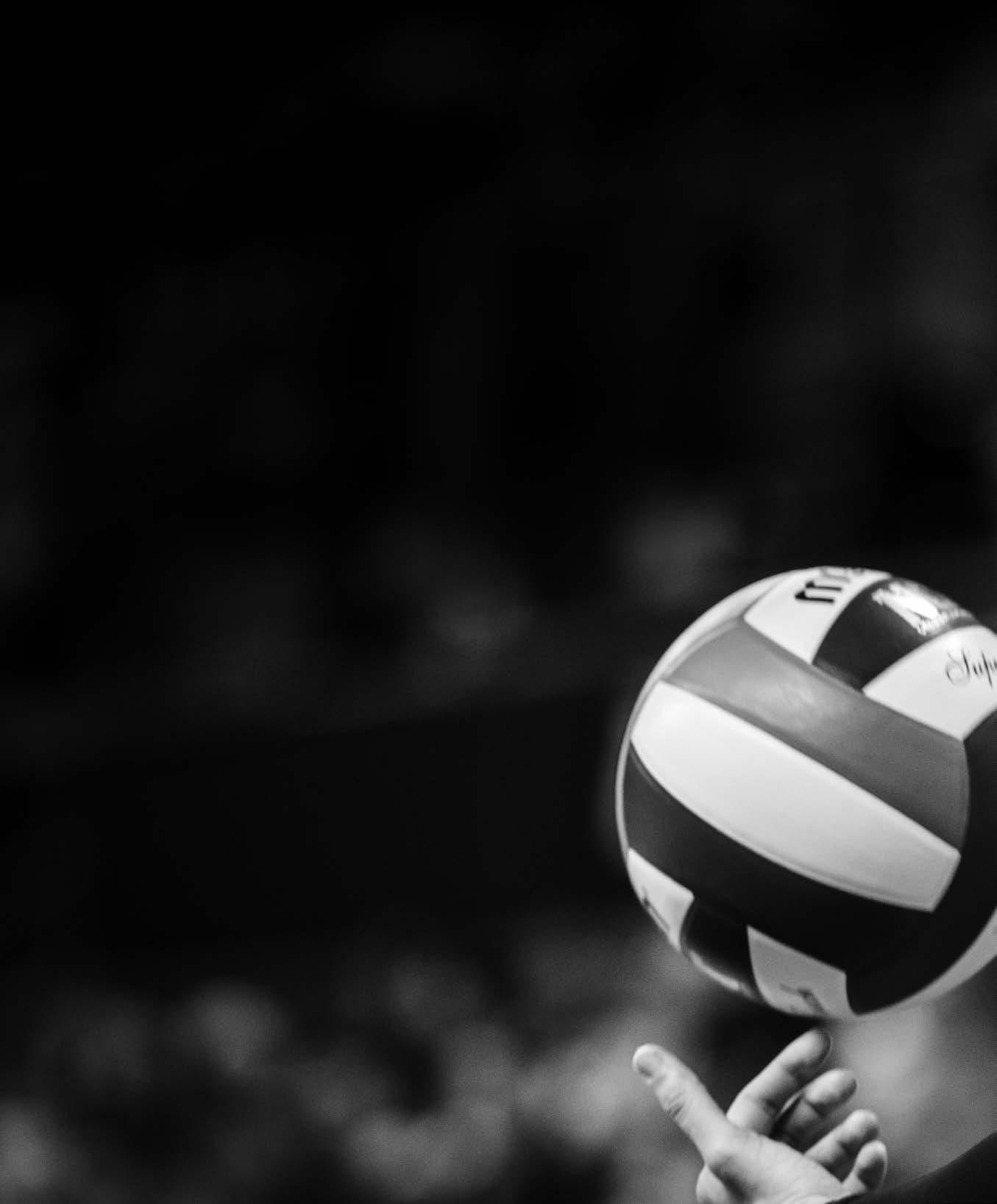
The team hadn’t practiced much over the spring and summer because of the COVID-19 pandemic and they were thrilled to finally be back on the court together. In Powell’s freshman season, the Huskies had made it to the Sweet Sixteen round of the NCAA tournament. In her sophomore year, they advanced to the Elite Eight. Powell, at the time a junior and one of the best setters in the country, had high hopes for the season ahead.
But on a routine play that day, she backpedaled and twisted to her right to set the ball for a teammate and then came the alarming pop. She hopped awkwardly to the side of the court, tried to take a couple of steps and then sat down, stunned. Tears welled in her eyes. Jennifer Stueckle, the team’s athletic trainer, rushed to her side.
“I wasn’t crying because it hurt,” says Powell. “I was terrified because I knew something was wrong.” An MRI would confirm her worst fears: She had torn her medial meniscus. It would
32 UW MAGAZINE
Ella May Powell, star setter for the Husky volleyball team, nearly missed her junior season because of a knee injury. With the help of UW Medicine doctors in the Sports Medicine Center and a months-long recovery program, she wrapped up her record-setting college career this winter.
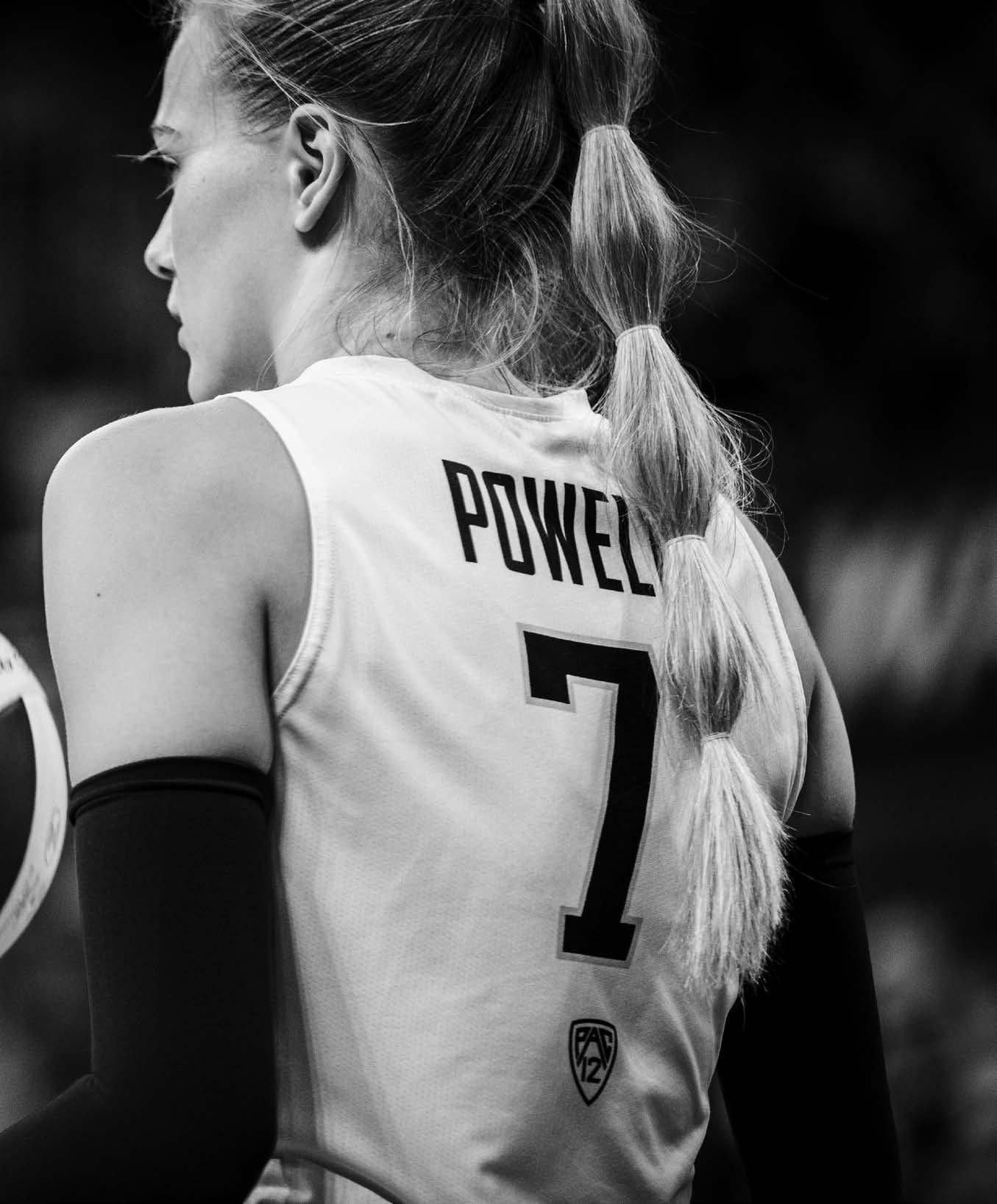
SPRING 2023 33
require surgery, and she wasn’t sure when she would play again.
Luckily for Powell, her treatment and recovery were in the hands of a tight-knit team—including UW Medicine’s Dr. John O’Kane, UW Athletics medical director and head team physician; Dr. Mia Hagen, UW Athletics team physician, orthopedic surgeon and surgical director of UW Medicine’s Sports Medicine Center at Husky Stadium; and Stueckle, an associate athletic trainer for volleyball and beach volleyball.
As a field, sports medicine focuses on treating activity-related injuries. And the Seattle area—with one of the most physically active populations in the U.S.—boasts a wealth of resources for those seeking treatment. Among them is the Sports Medicine Center at Husky Stadium, which benefits from what O’Kane calls a triple threat of clinicians: those who serve patients, teach at the UW School of Medicine, and do research to keep athletes safe and healthy—now, and far beyond any amateur or professional career they may have.
UW Medicine’s sports medicine team serves people of all ages and abilities at several locations around Seattle, but UW athletes are most familiar with the Sports Medicine Center, a 30,000-square-foot facility that opened in 2013. Some of the staff also work as team physicians for the Huskies, Seattle Seahawks, OL Reign (the city’s professional women’s soccer club) and Seattle Seawolves (Seattle’s professional men’s rugby team), as well as the Seattle Marathon and several public high schools. The center and its staff also serve tens of thousands of members of the community every year.
O’Kane came to the UW in 1993 for his medical residency, followed by a fellowship. He is now a UW School of Medicine professor and head team physician for the Huskies. He says one of the center’s strengths is its location in Husky Stadium. “We have a world-class medical center literally across the street,” he says, referring to UW Medical Center’s Montlake location. “We have top-quality X-ray, ultrasound and MRI. It doesn’t matter what you need medically. It’s right here because of that co-location.”
Another of the sports center’s strengths, says O’Kane, is how the hospital extends into the training room—every day, a sports medicine physician visits the training room, which is connected to Alaska Airlines Arena and Husky Stadium by hallways and tunnels. After her injury, Powell was evaluated by the on-call physician. A few days later, she returned for an MRI.
Surgeon Mia Hagen consulted with Powell next. She diagnosed a bucket-handle tear in Powell’s meniscus, the cartilage that absorbs shock and helps stabilize the knee. It had torn, flipped over—like a handle on a bucket—and lodged in her joint. Hagen had seen this type of injury before. It typically happens when athletes twist their knees, and because the meniscus gets stuck where it shouldn’t be, it results in swelling and instability, and limits mobility. It rarely gets better without surgery.

Hagen presented two options. The faster fix would involve removing the torn part of the meniscus, which would require a four- to six-week recovery. “But it’s a trade-off,” says Hagen. “It’s a structure that your knee needs, so without an intact or repaired meniscus you could be more likely to develop cartilage damage and arthritis in your knee in the long run.”
The second option would be to repair the meniscus—flipping it back and sewing it into place—giving Powell the best chance of long-term knee health. It would, however, mean a four- to six-month recovery process. Powell, who hopes to play professional volleyball overseas and for the U.S. national team, opted for the latter surgery despite the longer recovery time. “It was the correct choice in my opinion,” says Hagen.
An MRI does not paint the whole picture, though, and Hagen wouldn’t know which option would be the most successful until she could view the inside of Powell’s knee during surgery. And,
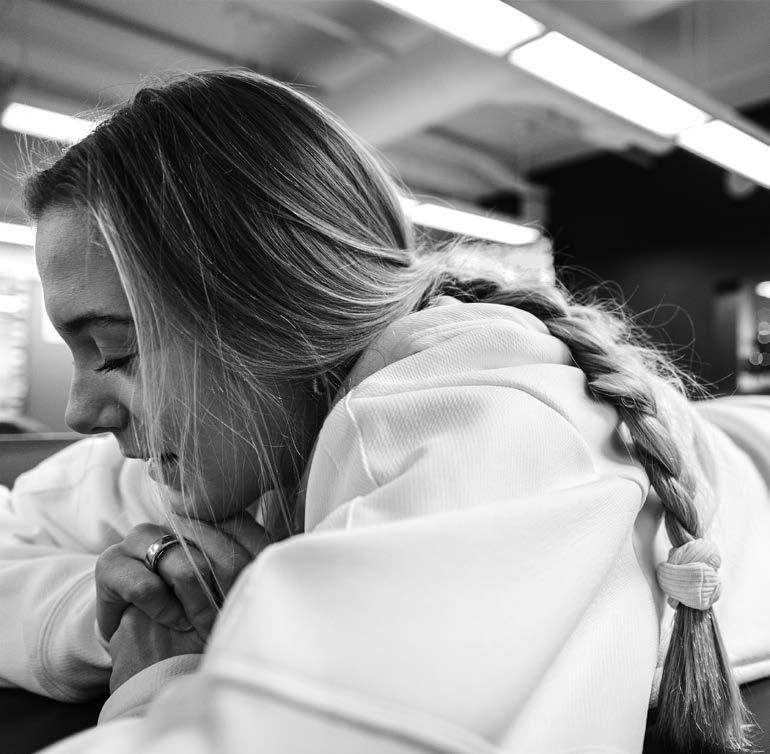
Every day before practice, and often multiple times a day, she would meet with Stueckle for her ever-evolving rehabilitation.
34 UW MAGAZINE
Dr. Mia Hagen preps for surgery on an injured athlete. Her patients include students, professional athletes and weekend warriors.
After having knee surgery, Ella May Powell works on her recovery and rehabilitation with the help of Jennifer Stueckle, an associate athletic trainer.
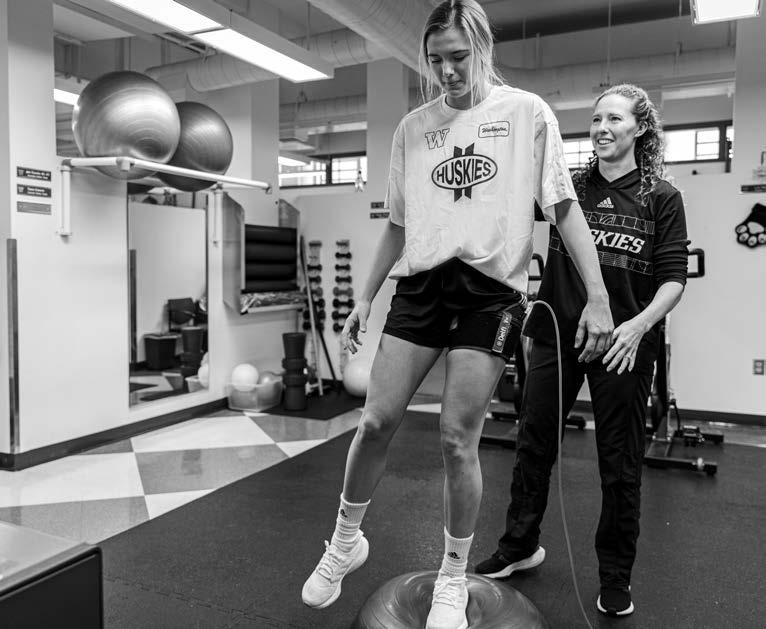
Below, with Stueckle’s help, Powell balances on a BOSU ball to strengthen her knee and other leg muscles.
of course, Powell wouldn’t know her recovery timeline until after the operation.
“I went into the surgery a mess,” says Powell. “Dr. Hagen told me that if I woke up with a knee brace on, it means it was a repair. If I woke up without a brace, it was the quick surgery.” Powell woke up with a knee brace on. She had a long road ahead.

When Powell plays, she does it all: serving (she holds the Husky record for career aces), diving for digs, setting up her teammates for kills and dropping in deceptive dump shots. It’s hard to imagine her not on her feet. It was far harder for her to work through it.
For six weeks following surgery, she was on crutches and in a brace. Stueckle, the team’s athletic trainer, developed a program of non-weight-bearing exercises to keep Powell’s upper body in shape and build a foundation for the rehabilitation of her knee— including stretching her leg muscles and increasing her knee’s range of motion, and setting a volleyball while sitting on a box. And then, when Powell was able to start putting weight on her leg, Stueckle introduced new, challenging exercises, like standing on an unstable surface with her left leg and working on her sets.
“I had lost a ton of muscle in my quad, calf and hamstring. So the silliest little exercises like leg raises would absolutely gas me. It was a lot of lonely work,” Powell says. But she wasn’t truly alone. Every day before practice, and often multiple times a day, she would meet with Stueckle for her ever-evolving rehabilitation. She also had periodic check-ins with O’Kane and Hagen, who confirmed her knee was improving as expected.
When a resurgence of COVID-19 pushed the 2020 season to January 2021 and the NCAA granted athletes an extra year of eligibility, Powell had renewed hope and a clear recovery target. Still, she endured her share of low moments, including recurring pain in her knee due to a suture. Hagen had O’Kane evaluate the area using ultrasound and inject it with a steroid to decrease inflammation, which solved the problem. Later, Powell went through a two-week slump in which she didn’t feel like she was making any progress, but Stueckle continued to reassure her that she was on the right path. “A big aspect of rehab is educating and collaborating with my athletes,” Stueckle says. “A lot of it is, first and foremost, having that relationship with athletes, building that trust.”
“Jenn has been there with me since day one,” says Powell, who, like the rest of the team, has seen Stueckle in the training room for preventive maintenance and minor injuries since she was a freshman. “She did such a great job handling both the physical and emotional side of my recovery.”
When Powell returned home to Arkansas for winter break in 2020, Stueckle provided her and her personal trainer with a rehab program. And in January, when Powell was back in Seattle, Hagen had her run through a litany of tests and a thorough knee exam— and told her she was physically ready to play. It was just up to Powell to decide if she was mentally ready.
For athletes, the mental hurdle in recovering from an injury is often the hardest, says Hagen. UW Medicine doctors sometimes refer athletes to team psychologists, who help them process everything from the academic and personal struggles to intense pressure and career-ending injuries. That holistic care wasn’t always the case, says O’Kane, speaking of sports medicine practices in general, not specifically at the UW. “It used to be a race to see how fast surgeons could get athletes back out there after injuries like ACL tears.”
In the early 2000s, UW Athletics formalized a partnership with UW Medicine to provide team physician services. To avoid any potential conflict of interest, says O’Kane, the doctors have the final say in whether an athlete is ready to play: “It’s written into our contract.” Today, this type of autonomous health care is a guiding NCAA principle, and while some institutions have
SPRING 2023 35
In her final season, Powell reached 162 career aces, setting a school record and prompting �he Seattle �imes to call her “�he Queen of Aces.” She also capped her college career as a four-time All-American. �his year, the Huskies made it to their 21st consecutive NCAA tournament.
first-team
found it challenging to achieve, it’s fundamental to the relationship between UW Athletics and UW Medicine.
“Coaches and players are often the gas, and we’re the brakes,” O’Kane says. “They’re the ones who are pushing a little bit, and we’re the ones who are holding back a little bit. It’s a really tight connection at the UW, but the final say about ‘play, not play,’ is with the physician.”
Fortunately for Powell, her recovery had gone smoothly, and Hagen and O’Kane’s reassurance was all she needed mentally. “We don’t see a reason to hold you back,” Hagen told Powell in that final appointment. Powell didn’t either.
Over the next few months, she helped lead the Huskies to a conference championship and to the Final Four for the first time since 2013. “Ella May went from sitting on a box in the fall to first-team All-American in the spring,” Stueckle says.
But Powell wasn’t done. Just months later, she and the Huskies were back again, winning their second-straight Pac-12 title and advancing to the Sweet Sixteen. Powell was named Pac-12 setter of the year both seasons, cementing her spot as a Husky great.
While O’Kane and his team see more than 700 student-athletes for their primary-care needs, and Hagen’s team treats them for musculoskeletal injuries, that’s just part of their caseloads. The rest are patients from the community. (Other specialists at the center, including physiatrists and physical therapists, also treat UW athletes and community patients alike. And a number of UW sports medicine clinics in the greater Seattle area extends that community reach even further.)

UW Medicine as a research powerhouse applies just as much to someone like Powell as it does to anyone else. “There’s nothing about Ella May that resembles most of the other people in the world,” says O’Kane. “But the way you approach her is carried over to the way that you approach other folks.”
Those other folks could include a young soccer player or a senior who hikes. And regardless of who the patient is, the same tools are available, from technologically advanced surgery to nonsurgical treatments like ultrasound-guided procedures, nerve pain reduction techniques and platelet-rich plasma injections to help inflamed tendons and joints. Whether the treatments and technologies are new or have been used for decades, UW Medicine relies on its wealth of research and expertise to ensure they remain safe and effective.
In 2015, Dr. John Drezner, a UW Athletics team physician and director of the UW Medicine Center for Sports Cardiology, was a leader in a Seattle meeting of international experts who used new research to standardize the interpretation of electrocardiograms in athletes. Known as the “Seattle criteria,” it is today used by doctors around the world to improve the screening of amateur and professional athletes and identify potentially life-threatening cardiovascular abnormalities before they strike on the court or on the field. “There is a lot of community trickle-down from UW Medicine’s research,” says O’Kane.
Powell’s senior season ended on Dec. 2 in an NCAA tournament loss to Texas Christian University. While she now faces the challenge of leaving behind a team and university that has shaped her over the past five years, she looks forward to her future—including volleyball (hopefully for a pro team in Italy, she says) and a career in sports journalism. And though Powell’s teammates and coaches will miss her, her five years of leadership left a lasting impression and nurtured rising stars on a Husky team that has made it to the NCAA tournament for 21 straight years.
When Powell reflects on her UW career, her team’s and her own accomplishments are undoubtedly the high points, but she can’t fully separate them from the many months she spent recovering from her knee injury with the help of O’Kane, Hagen, Stueckle and others.
“I have nothing but gratitude,” she says. “They have trained me to take care of my body going forward. I won’t get the care anywhere else that I did here.”
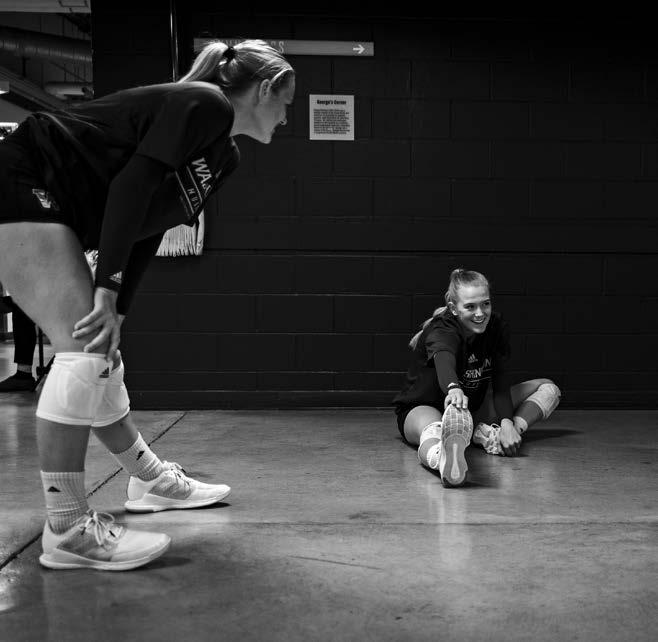 Right, Dr. John O’Kane examines a student-athlete’s knee.
Right, Dr. John O’Kane examines a student-athlete’s knee.
Powell went from sitting on a box in the fall to
All-American in the spring.
36 UW MAGAZINE
REAL DAWGS WEAR PURPLE
KEN MOCHIZUKI, ’76





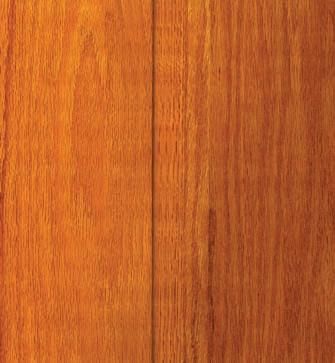
AWARD-WINNING CHILDREN’S BOOK AUTHOR

Studying communication at the UW prepared Ken Mochizuki for an early acting career and then a lifelong vocation as a writer. In 1991, while working as a journalist in Seattle, the accomplished Husky grad wrote a children’s book about a Japanese American boy who finds joy in baseball while enduring life in a World War II incarceration camp. “Baseball Saved Us” earned rave reviews and won several awards—and the proud Dawg found a new career as a published author. His books for young readers explore a wide range of Asian American experience, from a Japanese American WW II combat unit to the early life of fellow Husky Bruce Lee.
Real Dawgs Read is a UW summer reading program for K–8 students at Title I schools in Washington state. If your child’s school qualifies, encourage the principal to email realdawgs@uw.edu and sign up for the program. Invitations go out in April for 2023!

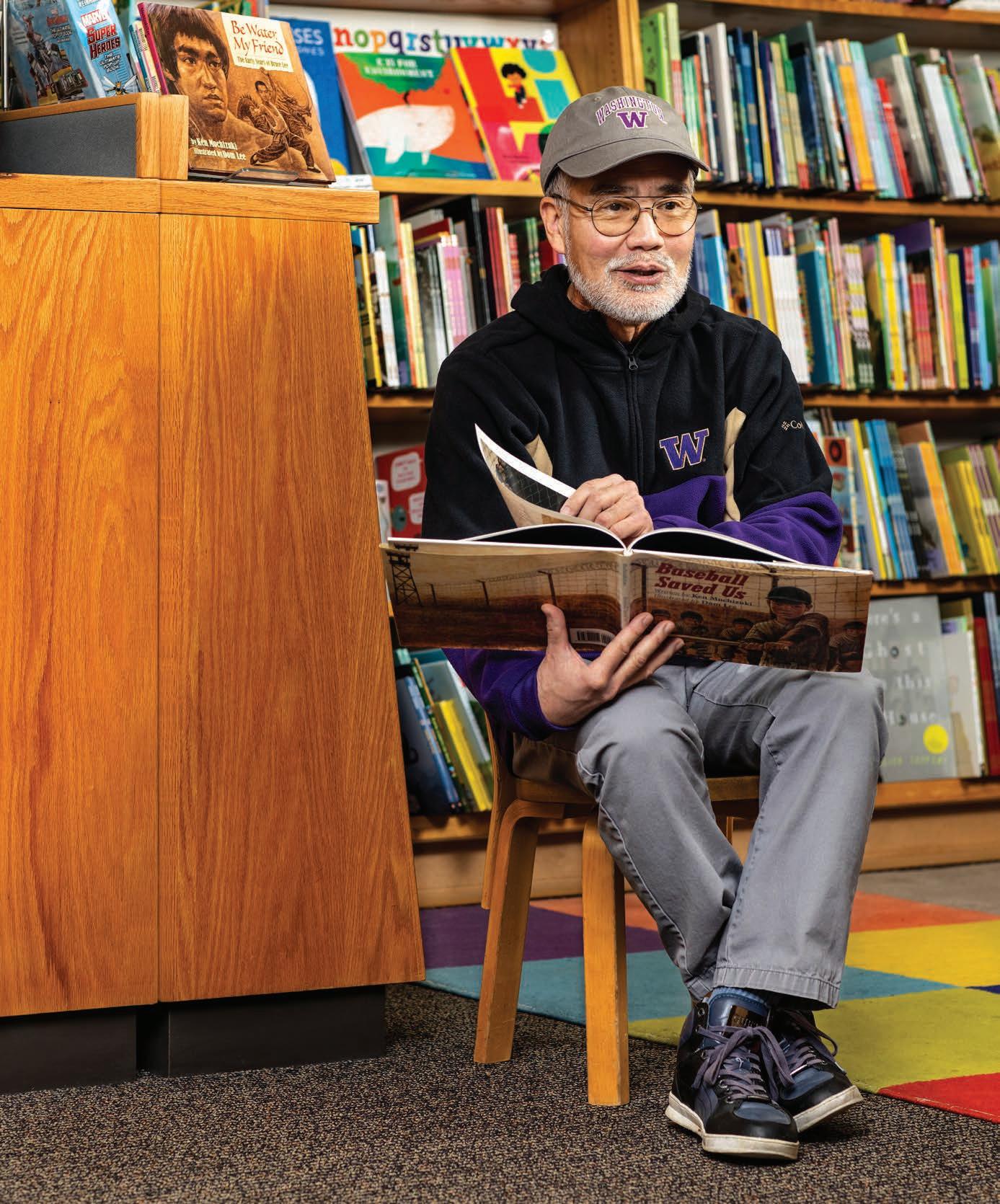 Ken Mochizuki reads his book “Baseball Saved Us” at University Book Store.
Ken Mochizuki reads his book “Baseball Saved Us” at University Book Store.
Another Side of the City
Peter Bacho writes a love letter to Seattle
By Hannelore Sudermann
Peter Bacho’s new book, “Uncle Rico’s Encore: Mostly �rue Stories of Filipino Seattle,” is seen by UW American Ethnic Studies professor Rick Bonus as a major contribution to the canon of Northwest storytelling.
When writer Peter Bacho thinks of Seattle, his is not the view from a picture postcard. But it is every bit as stunning.
Bacho’s perspective doesn’t include Mount Rainier or the Space Needle. Instead, he sees the city from Beacon Hill, the Chinatown International District and the South End, where he grew up as the child of immigrants in what was at the time one of the country’s most diverse neighborhoods.
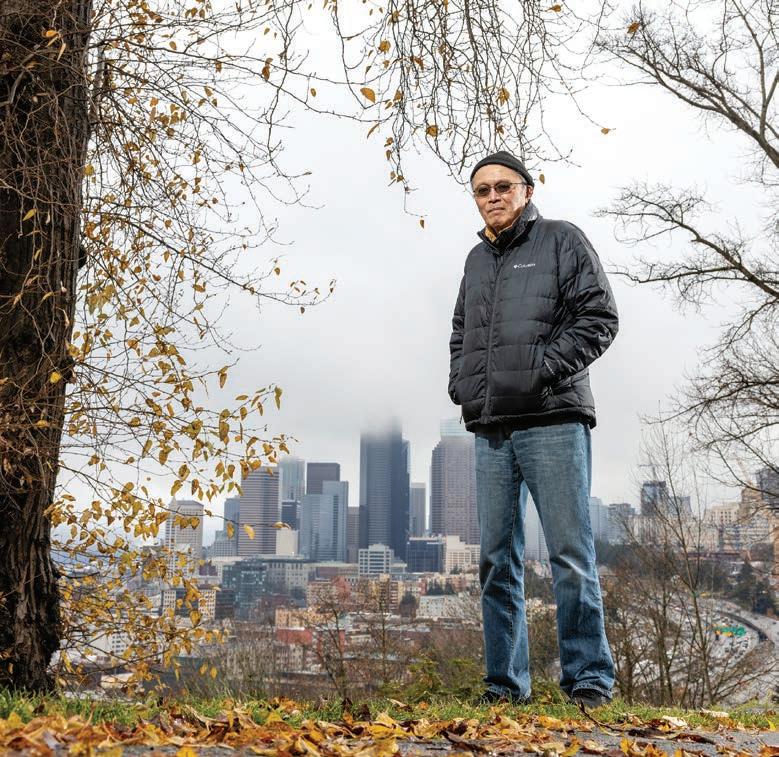
He gifts us with these views in his new book, “Uncle Rico’s Encore: Mostly True Stories of Filipino Seattle.” The novelist and short-story writer walks readers
through Seattle and through time to reveal his family, his treasured childhood and his community. This is his seventh book. His 1991 novel, “Cebu,” won the American Book Award and put Bacho in the firmament of great writers of his generation.
Rick Bonus, professor of American Ethnic Studies, describes Bacho’s latest work as a significant contribution to the canon of Northwest literature. The “mostly true” short stories are elegant and provocative, says Bonus. “Peter has this skill of writing prose that’s really not only lucid, but also filled with energy.” Even if you’re not from Seattle or the Pacific Northwest, you can easily identify with his work, Bonus says. “He’s a master storyteller.”
Bacho also has a deft ability to weave together a vision of a community and city with moments of wonder and cherished memories.
“The Filipino community in the Northwest is very interesting compared to
other places in the United States,” Bonus says. The Puget Sound region is home to multiple generations of immigrants. The first to come were farmworkers and laborers. Then there’s a generation of World War II veterans and war brides. Next, a post-1965 generation of educated professionals. And finally, people who suffered under the martial law of President Ferdinand Marcos between 1972 and 1981.
“Peter [who was born in Seattle in 1950] straddles those generations. He is able to speak across those generations,” Bonus says. “He is also locating himself as accessible not only to different kinds of Filipinos and different communities of color, but to all of Seattle and readers who are interested in history and culture.”
A lot of the book is autobiographical. “It is a love note to a community, but it is also a love note to a very beautiful city,” Bacho says. He gives readers the rich legacy of Filipino union activism, the charm of pickup basketball games with neighborhood kids, and the intrigue of shutting his eyes tight against a ghost in his bedroom.
Pleasing his parents, he studied law at the UW. “But my heart wasn’t in it,” he says. “I wanted to go to interesting places.” At the time, the Philippines—under the rule of Marcos—was rife with international intrigue. Bacho returned to the UW for a second law degree focused on marine legal affairs that would bring him closer to the interactions between the U.S. and the Philippines. He also used the time to explore Southeast Asian politics. “When the crisis was going to break, I wanted to be one of the few people to write credibly about it,” he says.
He found a home for his journalism at The Christian Science Monitor. Somehow in the thick of working on his law degree and teaching Asian American Studies at the UW, he produced stories for The Seattle Times, the Oregonian, the San Francisco Chronicle and other papers. He faced danger, traveling to the Philippines in the 1980s to report on political unrest at the end of the Marcos regime. “What drove me forward in that pretty dangerous situation wasn’t bravery. It was ego,” he says. “I wanted a ringside seat to the whole thing. I wanted the story.”
But by the end of the regime, he was done with chasing news. “Like an idiot, I decided I was going to start a novel,” he says. In his office at the UW in the late 1980s, he would file a story for The Monitor and then turn to the painstaking work of writing his first novel, “Cebu.” “It was so Continued
NEWS FROM THE UW COMMUNITY 38 UW MAGAZINE
52
on p.
MATT HAGEN
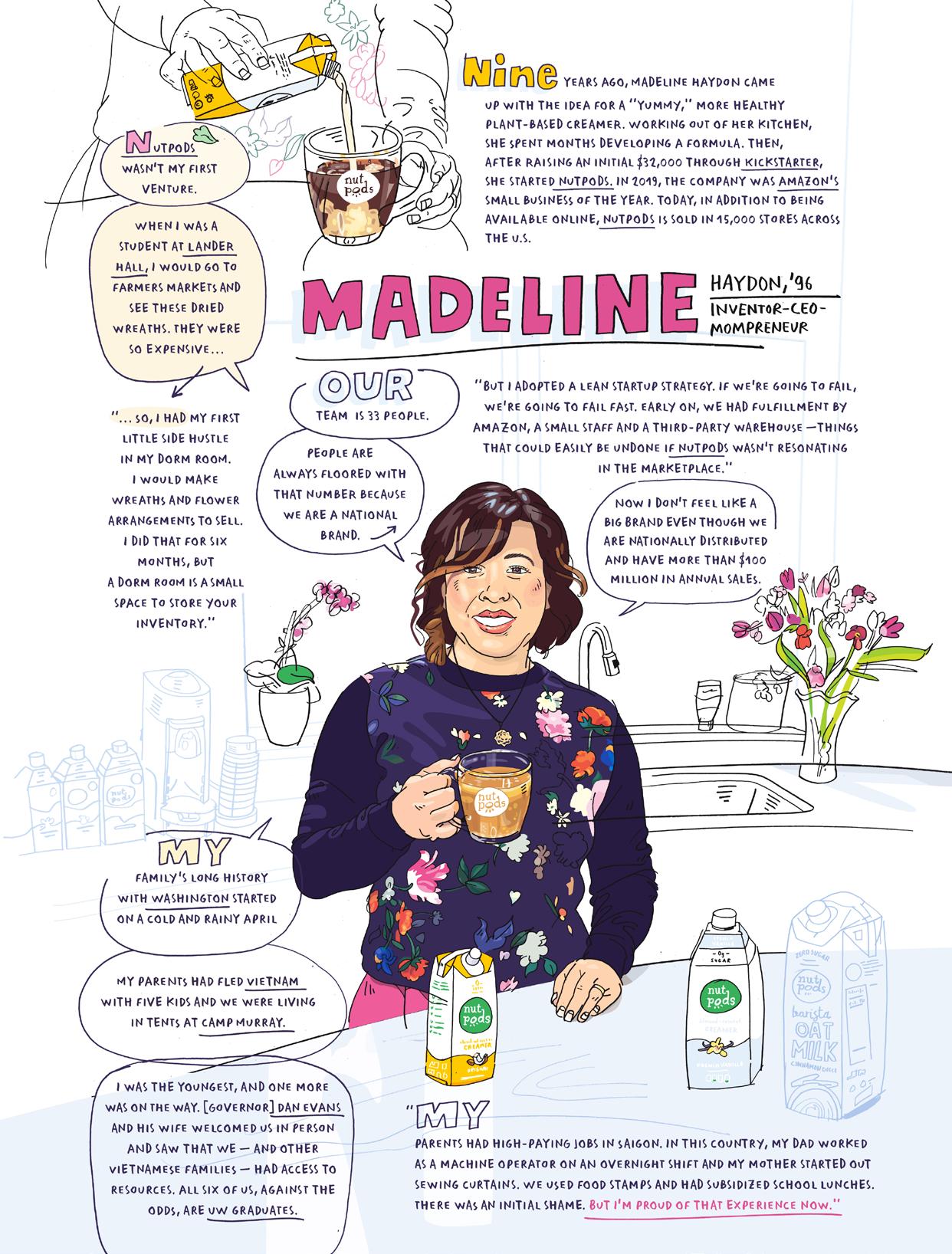
SKETCHES MADELINE HAYDON
Delightful and Insightful
New Yorker cartoonist Olivia de Recat captures relationships in her book ‘Drawn Together’
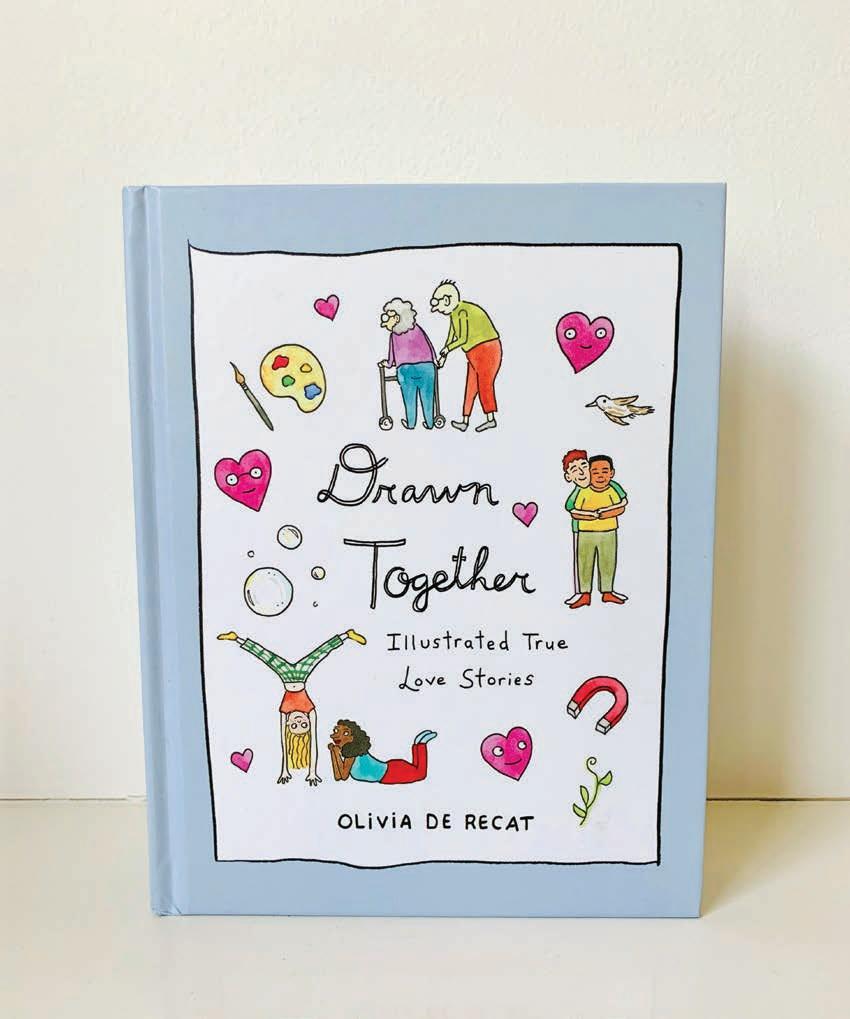 By David Silverberg
By David Silverberg
Besides producing cartoons for �he New Yorker, Olivia de Recat is concentrating on building the subscription base for her online newsletter, “Olive It,” which features new cartoons on her website and Instagram feed.
When Olivia de Recat was in her sophomore year at the UW, she found her calling. That night, while in her off-campus apartment, she went online and listened to short stories from The New Yorker’s archives and then scrolled through its archive of cartoons. “I realized it was exactly the kind of magazine I wanted to contribute to some day,” she says. “I fell in love with The New Yorker, and I told myself that I would one day contribute to this magazine.”
She lived up to her promise. Fifteen years later, she has contributed dozens of
cartoons to the Daily Shouts section, each of them brimming with sharp humor and eye-catching illustrations. Most recently, though, Los Angeles-based de Recat, ’13, gave fans (Instagram follower count: 149,000) her first longform project: “Drawn Together: Illustrated Love Stories,” a book that weaves in the author’s insights on relationships and love along with how-wemet-and-stayed-together anecdotes from couples de Recat interviewed.
“Long before I thought of writing this book, I’ve always been interested in talking
to people about their relationships,” she says and then laughs. “People mostly like talking about how they met each other.”
The 336-page book includes the story of de Recat’s parents’ first blind date and then the beginning of a lifelong relationship, despite their first fashion impressions of each other: “They immediately liked each other, but hated what the other was wearing,” de Recat writes.
Another interview de Recat found compelling was Sam and Mo, who met at a
bowling event. “It wasn’t so much what they said but the joy in that room when I was talking to them,” she says. “It was truly infectious.”
As de Recat spoke to an array of couples on how they met and overcame their challenges, she found a more deliberate way to look at her own relationships. “Dating someone while working on the book,” she explains, “I realized that a lot of my needs weren’t getting met. And the book propelled me into a deeper, more honest reflection of my own issues and my own relationship journey.”
Writing about herself came naturally to de Recat when she was a youngster growing up in Redmond. “I was always yearning to write down my feelings and thoughts, and maybe that’s because I went to Catholic school my whole life, where I had to face a lot of inside-the-box thinking,” she says.
Consistently drawing as a hobby throughout high school, de Recat didn’t consider illustration as a serious career option when she began filling out college applications. Writing and studying English literature was top of mind when she first enrolled at Gonzaga University in Spokane. But she was going through a few personal matters, dropped out of school and
40 UW MAGAZINE
Long before I thought of writing this book, I’ve always been interested in talking to people about their relationships. People mostly like talking about how they met each other.
COURTESY OLIVIA DERECAT
returned home to Redmond to stay with her parents, needing time to sort out her future. During that respite, she first read some New Yorker issues, reveled in the stories and illustrations, and felt renewed motivation to return to school.
Coming to the UW for English literature was “a literal godsend for me,” de Recat says, “because I needed to be somewhere close to home, to my parents who were supporting me through my mental-health issues.” Also, she had always wanted to graduate from a school such as the UW since she was a kid—“a big university with a lively and beautiful campus,” she says.
“One of the most memorable moments for me there was the study-abroad program in Rome,” she remembers, adding “it was so incredible and beautiful, and to do my poetry work in Italy really changed my life.”
After graduating from the UW in 2013, she wasn’t keen on her first few jobs, such as a quick year at a talent agency. But she enjoyed her three years as the executive
producer’s assistant on “The Late Late Show With James Corden.”
The work was varied and intriguing, and it gave her a fortuitous networking opportunity that would fulfill a promise she made a decade ago. “The head writer at the show once went to lunch with the cartoon editor at The New Yorker and showed some of my drawings to them. They liked what I did. That’s how I began to pitch to the magazine,” de Recat says.

With most of the book’s marketing events behind her, she’s now focused on building the subscriber base for her online newsletter, “Olive It,” which features new cartoons she posts on her site and Instagram feed. She has also looked back at how her artistic skills have matured over the past decade. “It’s gone from being very rudimentary to being attuned to something like facial expressions,” she says. “What it boils down to is that all my work is about expressing emotions and bringing those out in my physical drawings.”
Radio Rental

Rainn Wilson
Tenderfoot TV
Sometimes, real life is scary. Featuring true tales of paranormal activity and close encounters with serial killers, Radio Rental is not for the faint of heart. That’s where alum Rainn Wilson comes in as host Terry Carnation, who lightens the mood between horror stories with the help of his mischievous cat Malachi.
Anna Faris is Unqualified Anna Faris, Acast

Looking for advice?
Despite the title of her podcast, Anna Faris, ’99, competently provides tips on a wide range of confounding topics with help from her friends in Hollywood. Along with advice, each show includes banter and games. Faris features a new guest every week, from Alison Brie to Sam Richardson to Cameron Diaz.
The Darkest Timeline
Joel McHale
In the early days of the pandemic, Ken Jeong and Joel McHale, ’95, ’00, recorded their calls to each other and answered fan questions about COVID-19 and their show “Community.” Jeong, who is a licensed physician, keeps McHale up-to-date on pandemic news while both hosts discuss “Community” with fellow castmates in this science/comedy podcast.
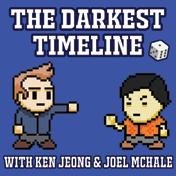
MEDIA
SPRING 2023 41
COURTESY OLIVIA DERECAT
FROM UW TO THE WORLD
Huskies fly further with Alaska Airlines, the oneworld® Alliance and our Global Partners. Touch down in more than 1,000 destinations worldwide while earning or redeeming Mileage Plan™ miles for every adventure.
alaskaair.com/Huskies
PROUD TO BE THE OFFICIAL AIRLINE OF THE UNIVERSITY OF WASHINGTON.

The Call of the Wild
A new documentary features Samantha Zwicker’s work in the Amazon rainforest
By Hannelore Sudermann
A childhood on Bainbridge Island surrounded with woods and wildlife instilled in Samantha Zwicker a love of wilderness. That led her to study conservation ecology at the UW and eventually travel to South America to learn and volunteer.

Today, she lives and works in the Peruvian Amazon. Her home is a collection of timber structures on platforms just feet above the rainforest floor. From there she leads Hoja Nueva, a nonprofit she started in 2015 to stem the loss of biodiversity and rehabilitate and reintroduce keystone
species of wildlife. “It is the first and only free-wilding center for carnivores across Peru,” says Zwicker. The center’s territory covers nearly more than 7,000 acres of rainforest in Las Piedras. While it is remote, illegal logging, mining and poaching threaten the regional wildlife. “I’m in this beautiful, intact yet unprotected region,” she says.
Zwicker, ’12, ’15, is also completing her Ph.D. in the Quantitative Ecology Lab at the UW. And she is one of the lead characters in “Wildcat,” a documentary about
the efforts she and a volunteer named Harry Turner, a British Army veteran, undertook to raise and rewild orphaned ocelot kittens. The film, which was released in December on Amazon Prime, focuses on Turner’s coping with depression and PTSD as well as the development of the ocelot they named Keanu as it grows able to survive on its own. Along with a compelling story, the film gives viewers a deeper view into the rainforest and the imposing threats to its existence.
Over the last few years, Zwicker has divided her time between Seattle and Peru, being a graduate student, running the center and completing her research. She’s eager to finish her degree and turn all of her energy to animal rescue and research in Peru full time, she says. “There’s so much work that needs to be done.”
SPRING 2023 43
COURTESY HOJA NUEVA
As a conservation scientist, Zwicker studies wild cat populations. Her focus on the interactions of different species and the effects of human impact factor into her doctoral thesis.
LIFTOFF
From addiction and prison to a UW engineering education and an internship at SpaceX
 By Jamie Swenson
Photos by Dennis Wise
By Jamie Swenson
Photos by Dennis Wise
44 UW MAGAZINE
GENEROSITY AND OPPORTUNITY AT THE UW
Create an environment of belonging. Scholarships provide crucial financial support to students like Raymond Haug—and make it clear that they belong. giving.uw.edu/march-2023
The last time Raymond Haug got out of prison, he had no friends or family waiting to pick him up. He had no new clothes to change into. All he had was his state-issued prison sweatsuit, a brown paper bag with his housing voucher paperwork, and a faint glimmer of hope.
A prison guard dropped him off at Everett Station, where he sat on a bench out front and reflected on his years of homelessness, addiction, crime and incarceration. Fighting intense shame and doubt, he considered the monumental goals ahead of him: Stay sober and earn an education.
Then he stood up and walked to Everett Community College (EvCC) to apply for admission.
A LIFE TRANSFORMED
Nearly seven years later, Haug has transformed his life. He’s a University of Washington senior majoring in mechanical engineering, with two SpaceX internships under his belt. His wife, Althea, is earning her master’s in teaching at the UW, and they have two young children.

Respected by his professors and peers, Haug has earned several scholarships that made his education possible at EvCC and the UW. “The scholarships have meant more than anything to me,” says Haug. “The awards make me feel like I do belong in school. It’s helped me live the life I’m living now.”
But “Old Ray,” as he calls his past self, will always be part of him. Because of his prison time, Haug has never been approved for an apartment rental and was repeatedly turned down for jobs. When he used a computer at the EvCC welcome center to apply, he halfexpected security to escort him out.
“Coming from the world I did, recovering from addiction,” he says, “my brain still tells me I don’t deserve the life I’m living.”
In college, Haug felt he had to hide his past. But when an EvCC professor, seeing his talent for math and chemistry, urged him to apply for a job in the tutoring center, Haug had to sit down with human resources and go over every detail of his history of addiction and crime. It was painful and nerve-wracking, but he impressed HR with his commitment to recovery and academic success. He got the job—and started to see the value of sharing his story.
BREAKING THE CYCLE
When Haug was 5, his father died of a drug overdose. As a teen, Haug was in and out of juvenile detention. At 15 he slept
outside for the first time, under Montlake Bridge. He held up cardboard signs on the street corner and worked odd jobs. But as his heroin addiction progressed, he turned to crime, receiving the first of several robbery sentences when he was 18. So began a brutal cycle of incarceration, release, relapse and re-incarceration.
Years later, when he found himself locked in the same solitary-confinement cell during two consecutive sentences, something clicked: “I decided that if I was going to get it together, I had to do so in prison—not when I was back out on the street.”
In a drug treatment course in prison, Haug learned of the Post-Prison Education Program (PPEP), a nonprofit that helps connect the formerly incarcerated with postsecondary education. A 2018 study funded by the Department of Justice found that people who participated in correctional education were 48% less likely to return to prison within three years. But it wasn’t just that for Haug. It was the possibility that he could reinvent himself and discover talents he didn’t know he had.
With the help of PPEP, Haug got his college financial aid application in order. Then, he was released.
YOU CAN
Before long, Haug was living in sober housing, volunteering with Narcotics Anonymous (NA), enrolled at EvCC and working as a tutor. He also taught himself how to fix up cars and motorcycles. One day in chemistry class, Haug showed his professor photos of a bike he was building—a fully custom hardtail bobber.
“He was like, ‘Why aren’t you an engineering major?’” remembers Haug.
“But I had never heard of engineering. I didn’t know what it was.” As Haug discovered all that engineering entailed, he was excited to make it his major.
The more Haug’s peers and professors recognized his talents, the more he opened up. He began applying for and receiving scholarships, sharing a little more of his background each time. Then he told his story as a speaker at a scholarship breakfast.
“I was crying the whole time,” says Haug. “I was so grateful to be respected by my peers who weren’t from prison. The impact they had—all they had to do was tell me, ‘You can.’”
LAUNCHPAD UW
As Haug set his sights on transferring to a university, he applied for and received the Martin Family Foundation Achievement
Scholarship, which supports students at Washington state community colleges who hope to complete their baccalaureate at the UW. Then he got the good news that he’d been accepted to the UW.
Haug was drawn to the University’s strong mechanical engineering program and the UW Formula Motorsports Team, a student organization that designs, builds and competes with electric formula-style race cars. He hoped that would be his launchpad to an internship that would set the course for his career.
Haug’s first year at the UW was in the midst of the pandemic, and while his classes were online, he “practically lived in the machine shop” with other students on the Formula team.
“As a transfer student, you have half as much time to start a relationship with your university,” says Haug. “The Formula team paid huge dividends and made me feel like a part of the school.”
It also paid dividends in experience, helping him land two internships with spacecraft company SpaceX, where he worked on the pressurized ground systems team—helping to maintain production equipment and the supply of gas across the SpaceX campus for flight tests.
Working alongside technicians, Haug brought his problem-solving to the forefront, figuring out coding problems and helping install piping and control panels. “My background fits into that divergent thinking they want to grow,” he says. “I’m a good fit because I’ve had to be so adaptive my whole life.”
CHANGE IS POSSIBLE
Haug was thrilled to help build ships that go to space, but he’s also committed to making a difference on Earth. He has enjoyed volunteering with NA and mentoring youth involved with the criminal justice system. And in October he spoke at a conference for STEM-OPS, which works to include STEM learning opportunities in prison. “It’s my responsibility to help,” he says. “What’s the point of making it if I don’t help the person behind me?”
That’s why he continues to share his story. “All that I did in the past and all I’m doing now—they’re not exclusive of one another,” says Haug, who graduates this month. “So I hope that when you see someone holding a sign on 45th Street, you know that that was me, and you’ll remember that change is possible.”
SPRING 2023 45
A Sense of Purpose
With scholarship support, Tony Nabors found a calling and a lifelong commitment to racial equity
When Tony Nabors, ’06, walked into an introductory American ethnic studies course, he thought he was checking off a generaleducation requirement. He didn’t know it would change his life.

From Professor Rick Bonus’ first lecture, Nabors was captivated by how the class examined American history from the perspective of marginalized communities. “I had never been very interested in social studies or history courses, because they never felt relevant to me,” recalls Nabors, who is African American and grew up in Tacoma and Spanaway. “This course was mind-blowing, because my lived experience just collided with the history of the United States.”
He signed up for more classes, eventually declaring a major in American ethnic studies. Nabors found it powerful to understand how race was a social—not biological—construct, and how power and access were intentionally connected to race.
What he was learning in the classroom transformed how Nabors saw his life experience—including the negative messages he’d received about his own racial group. “Growing up, the box of what Blackness is was tiny,” Nabors explains. “It was a way you talk or things you should be good at or not do because Black people don’t do those things.” His UW coursework revealed the depth of history and culture that created the present-day realities, motivating Nabors to devote his life to racial equity—where a person’s racial identity doesn’t determine their outcomes.
A LOVE FOR LEARNING
Nabors was a star student from an early age, but he saw how Black students like him were often treated differently because of teachers’ implicit biases.
When Nabors was in second grade, his first-grade teacher, who was also Black, recommended him for an advanced program. But his current teacher, who was white, was skeptical of his potential and had to be convinced to allow the young boy to take the test— which he aced. The experience still weighs on Nabors some three decades later.
“It’s rare for any child, especially in the state of Washington, to have a Black teacher,” says Nabors, recalling the educator who advocated for him. “For her to be able to see me and my potential was huge.”
Even in his diverse high school, Nabors observed stark differences in the spaces he occupied. “I would assimilate to white people in my academic courses, but then sink more into my Blackness when it came to athletics,” he remembers. “I did a lot of chameleoning to make people more comfortable around me.”
When it came time to choose a college, the UW was his first choice—close to home with an excellent academic reputation. That choice was made possible, in part, by receiving the Costco Diversity Scholarship, awarded to high-achieving students from underrepresented communities. With four years of guaranteed support (supplemented with a part-time job), Nabors had time to explore academically, as well as play intramural basketball and football and be a student ambassador for the Office of Minority Affairs & Diversity.
46 UW MAGAZINE
Bring education within reach. Thanks to scholarships, alumni like Tony Nabors were able to attend the UW and discover their calling. giving.uw.edu/march-2023
Nabors arrived at the UW planning to study computer science. But when he walked into that American ethnic studies class, he found a calling.
MAKING EQUITY PART OF THE JOB
Nabors brought both his lived experience and his passion for racial equity to post-graduation jobs in sales and college admissions. As a multicultural outreach counselor at Seattle Pacific University, he was a resource for students from diverse and lower-income communities—and for his fellow counselors, whom he trained in diversity, equity and inclusion (DEI) topics.
The work took on new meaning in 2012 when Trayvon Martin, an unarmed Black teenager, was fatally shot in Florida. This national news spurred a larger discussion around racism in America—and Nabors found himself answering questions on social media from friends and strangers alike.
Not everyone welcomed his input about racism. Some got defensive; others were reluctant to take action. Frustrated by what he felt was a lack of respect for his experience and academic training, he no longer wanted to offer his knowledge for free. The idea for Racial Equity Insights was born, and in 2018, Nabors’ new consulting business landed the Harvard Law Women’s Association and Harvard Law Review as his first two clients.
Nabors was soon at a crossroads, both professionally and personally. Was there a career doing what he loved—helping organizations advance racial equity—that would also financially support his wife and young kids?
CHARTING A NEW PATH
In 2019, Nabors found the perfect opportunity as the Everett Housing Authority’s first director of diversity, equity and inclusion—and the first DEI director for any public housing authority in the nation. The role combined Nabors’ strengths as an educator and strategic thinker with his UW training on how history shapes the present.
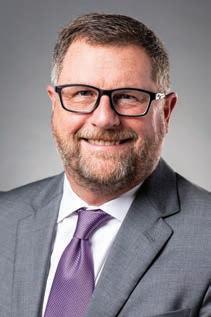
The history of U.S. public housing is intertwined with entrenched discriminatory practices like redlining and segregation, which limited where people of color could live and their ability to buy homes. That gap persists: Today, nearly 75% of white households own homes, compared to 45% of Black households.
To address that legacy, Nabors helped the Everett Housing Authority rewrite its mission, with a key goal to “replace systemic racism with equity for all.” He created a framework to achieve it, including staff training on institutional racism and partnerships with local affinity groups to understand the community’s diverse needs. Nabors’ work got the attention of the national Public Housing Authority Directors Association, which shared his strategy with the incoming Biden administration as an example for other public housing authorities to emulate.
“It’s demoralizing to feel we’re just doing actions that aren’t taking us anywhere,” says Nabors, who’d continued consulting part time. “I want us to be able to build something that’s sustainable.”
In 2020, after the killing of George Floyd and ensuing nationwide protests, Nabors saw yet another shift in the conversation around race: a commitment from individuals and organizations to learn about and combat racism.
It was the right moment to take Racial Equity Insights full time. Over the last year, Nabors has helped nonprofit, for-profit and governmental organizations create DEI strategies. He’s built a following on social media, where he breaks down topics like institutional racism and implicit bias in thought-provoking educational videos. And he’s developing an online curriculum.
What keeps him going, Nabors says, is knowing that this work has an impact on those with the least power. “Everything in society benefits from knowledge about race, anti-racism, social justice and equity. My sense of purpose is the marginalized people who are not heard, who are not given a fair shot or who are dismissed. Those are the people who are in my heart.”
When You Believe
By Patrick Crumb Chair, UW Foundation Board
Students are at the heart of our mission. That’s why we work together to make a life-changing higher education financially possible for thousands every year—and why we’re continually working to expand our reach. University of Washington supporters are helping us achieve this in many ways—from the Husky Promise, which has covered tuition for 50,000 Washington students in the past 15 years, to creative new opportunities to support our student-athletes (p. 26).
No matter how you use your philanthropy to change the lives of UW students, you don’t only make attending the UW a financial possibility; in this issue’s Impact section, we show how you also enable students to learn, explore and grow as they pursue their passions. Equally important, you remind them that a community of UW supporters believes in them—that they belong here.
That has certainly been the case for UW senior Raymond Haug (p.44), who overcame homelessness, addiction and incarceration to study mechanical engineering and intern—twice—at SpaceX. Scholarships enabled him to afford school and focus on his studies and his growing family. But it wasn’t just that. Haug struggled with the feeling that he didn’t belong, and every scholarship he received reminded him that he absolutely does.
At left, you’ll meet Tony Nabors, ’06, who knew he wanted to attend the UW, but it was a four-year Costco Scholarship that brought his education within reach. As a Husky, Nabors took an American ethnic studies class and for the first time saw his lived experience reflected in his coursework. Thanks to the opportunity to pursue his interests, Nabors discovered the subject that would become his major—and would lay the foundation for his work advancing racial equity.
We also highlight UW biology doctoral student Natalia Guayazán Palacios (p. 48), who grew up in Colombia and studied microbiology. Interested in the relationship between crops and microorganisms, Guayazán Palacios was also intrigued by human immunology. She found the perfect next step for her academic journey in Professor Adam Steinbrenner’s lab, where she studies plant immunology; bolstered by donor-funded grants, she continues to conduct research in this exciting field.
Thank you for all you do to make it possible for our students to attend, to feel a sense of belonging—and to discover their potential.
DENNIS WISE
SPRING 2023 47
PLANT POWER
When she encounters a plant—in the lab or the greenhouse—Natalia Guayazán Palacios is curious how it thrives and survives. “They’re incredible organisms doing a ton of things,” she marvels, “even when they’re just sitting around.” This fascination drives the heart of the fourthyear doctoral student’s research in the UW Department of Biology, where she studies how plants defend themselves from danger.
Like humans, plants have immune systems that detect harmful organisms like viruses and bacteria. By understanding how some plants protect themselves, Guayazán Palacios hopes we can help other plants improve their own defenses—as an alternative to the use of pesticides and other chemicals that can be toxic to agricultural workers and to other plants.
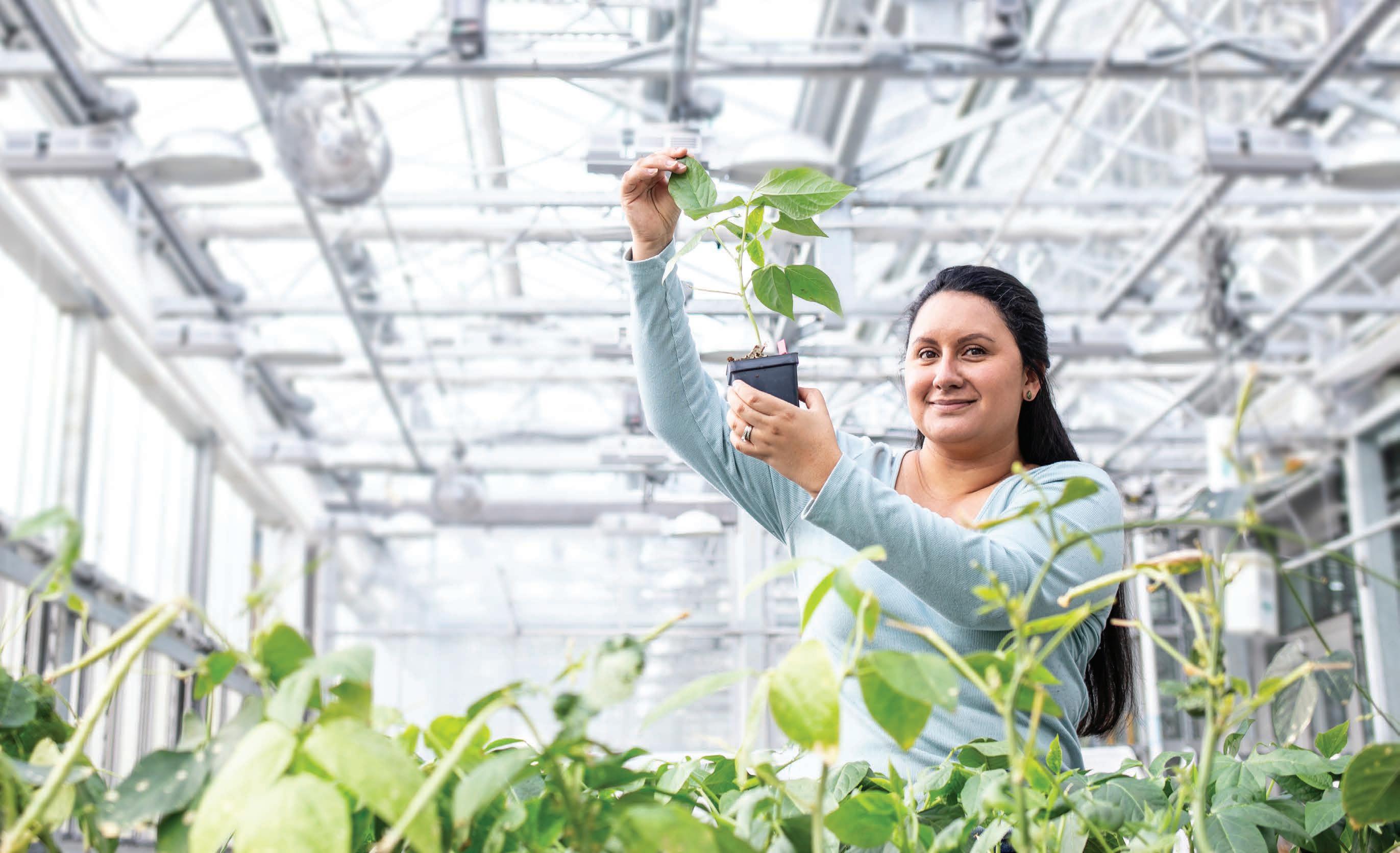
Agriculture is close to home for Guayazán Palacios, who grew up in Colombia, a major producer of coffee, fruits and vegetables. She initially studied microbiology to better understand the relationship between crops and microorganisms, but she was also intrigued by human immunology. At the UW, she found the best of both worlds in Professor Adam Steinbrenner’s innovative plant immunology research.
Combining these interests, Guayazán Palacios is now investigating how a plant uses immune receptors to detect threatening herbivores like caterpillars—research made possible by donor-funded grants.
Across the UW, graduate students help advance research and knowledge—and much of that innovation is powered by philanthropy. Guayazán Palacios has experienced firsthand how donors are contributing to her research. Thanks to this support, she says, “We’re making discoveries and advances in a very exciting field.”
By Anina Gaudio and Malavika Jagannathan
Photo by Dennis Wise
48 UW MAGAZINE
Fuel graduate education. When you support UW graduate students like Natalia Guayazán Palacios, you can power research discovery and prepare the leaders of tomorrow. giving.uw.edu/march-2023

SPRING 2023 49
Nuggets of History
The Department of Materials Science and Engineering was once the College of Mines. The name changed, but advancing technologies and research is stronger than ever
By Rachel Gallaher
When Yvette Gunther—who celebrated her 100th birthday last summer—was a little girl, her family moved from Oregon to Britannia Beach, British Columbia, a stop in a series of moves related to her father’s job in the mining industry. Gunther’s father, Chris Grenside Dobson, taught mining and metallurgy at the University of Washington. He later headed north to Vancouver and became the chief engineer and general manager at the Britannia Mining and Smelting Company.
“My father worked very hard,” says Gunther, ’45. “My father and mother used to entertain everyone who came to see the mines. The mining eventually stopped because there was no more copper. I still remember how sad that was—we were
the last ones to leave.”
It’s an age-old story: as time, technology and material developments progress, some methods—or the need to study them—are forced to evolve or become obsolete. Such was the case with the University of Washington’s College of Mines, the precursor to the Department of Materials Science and Engineering in the College of Engineering.
“The College of Mines started as an assay lab,” says Thomas Stoebe, professor emeritus and former chairman of the Department of Materials Science and Engineering. In 1994, he helped publish a 100-year history of the department (updated in 2019). “In those days [the late 1800s and early 1900s], people just went out and
prospected to see what they could find, and they would take the findings to the assay lab at UW.”
The UW School of Mining Engineering was chartered in fall 1893, and its curriculum was developed in 1894. Instruction began the next year, taught by geologist Professor Henry Landes. Coinciding with the Klondike Gold Rush, the establishment of the lab (as well as independent labs around the city) helped make Seattle a hub in the development of the Yukon and Alaska gold fields, as well as the development of mines in Washington.
Courses were offered in mineral formation, mining surveys, mine development, mining machinery, assaying, ore testing, smelting and refining. In 1911, the B.S. in metallurgy was added and the School of Mining Engineering became a full-fledged College of Mines.
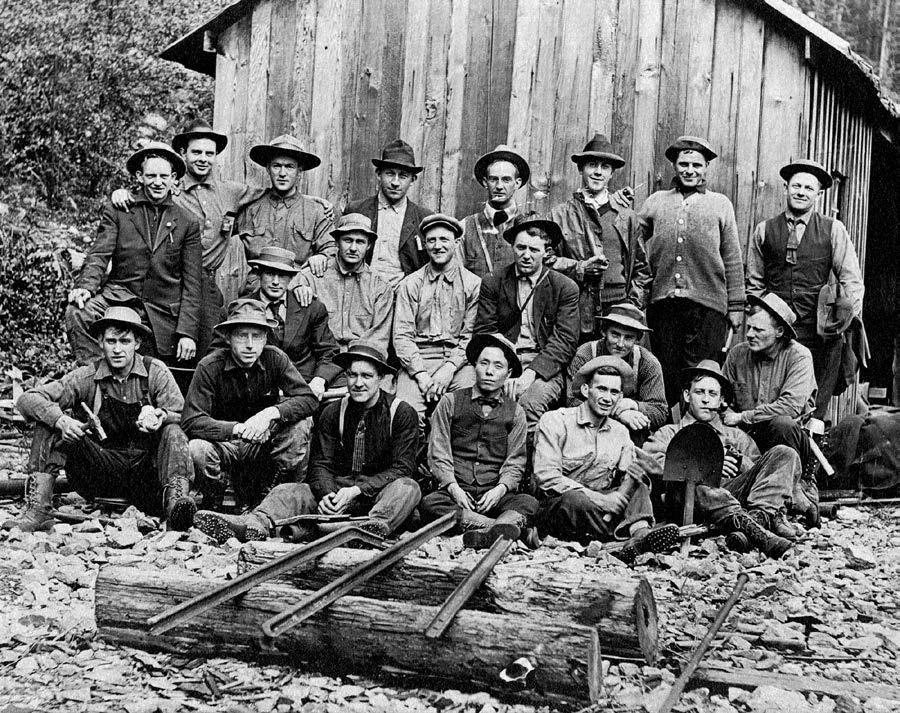
In 1918, the college started offering a degree in ceramics—the science of creating objects from inorganic, non-metallic materials. For the next 29 years, the UW would be the only school on the Pacific Coast to offer a course in ceramic engineering.
“Ceramics is what brought this University program to national fame,” says Jihui Yang, a Kyocera Professor in Materials Science and Engineering and vice dean in the College of Engineering. He worked with Stoebe on the most recent version of the department’s history. “[Professor] James Mueller developed a longstanding program to develop ceramic materials for NASA for use in spacecraft, landing pads and such, so we had one of the most well-known departments in the country for a long time.”
Mueller joined the faculty of the Ceramic Division of the School of Mineral Engineering in 1949. While at the UW, Mueller established an X-ray diffraction laboratory and developed methods that reduced the time for analysis of ceramic materials from days to a few hours.
In the early ’70s, interest in mining engineering waned and the Board of Regents dropped the program in 1976.
“In the 1950s and ’60s, everyone built things out of metal,” Stoebe says. “But by the ’70s, they were using other materials such as composites.” Both he and Yang note that as the department evolved, there was a significant amount of collaboration and crossover with other departments. “The aeronautics department spent a lot of time using our facilities and our knowledge, and they developed things like the tiles used on space shuttles. Today there continues to be a lot of crossovers with the medical and dental schools, electrical engineering, and other schools and departments.”
50 UW MAGAZINE
UW SPECIAL COLLECTIONS NEG. NO. UW20303Z
Students from the UW College of Mines take a break to have their photo taken during a 1911 field trip. �he College of Mines was the forerunner of what turned into the UW College of Engineering.
This
is our hometown, where we’re from and where we live. And we believe everyone deserves a place to call home. That’s why we’re committed to supporting local efforts to shelter families. Our ongoing collaboration with Mary’s Place — a Seattle-based emergency shelter provider— helps bring women, children and families inside. We care about our community. Because this is our hometown.
To learn more, visit: marysplaceseattle.org
SPRING 2023 51 SEATTLE • WA STARBUCKS • EST D 1971
Continued from p. 38
Another Side of the City
Reviewers have called Peter Bacho’s collection of short stories “punchy,” “funny” and “a loving tribute.” Bacho describes this latest book as “the one I had to write.”
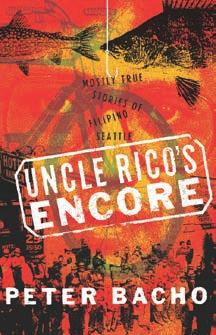
Boy,” a critically acclaimed novel that features the Japanese American experience.
By the time “Cebu” was published, Bacho was working as an attorney in San Francisco. “I was very comfortable at the UW, but I wondered did I leave law too soon,” he says. “So I gave law a couple of years before I decided to go back to writing.”


One day, while still in California, he got a call from the UW Press that “Cebu” had won the American Book Award. Bacho hadn’t known he was in consideration. He was pleased, his parents were thrilled. “My dad had been disappointed I had given up law, but now he was very proud,” he says. He would carry copies of “Cebu” with him and encourage everyone he met to buy one. His father even peddled them at a funeral,
Bacho eventually moved back to Washington and wrote several more “good books that nobody read,” he says. And he joined the faculty of The Evergreen State College and lectured at UW Tacoma. When he finished his young adult novel, “Leaving Yesler,” in 2010, he decided to take a break from writing. But then, on his 68th birthday, he picked up a pen. He wrote a story about his 18th birthday in 1968, the day he tried to enlist during the Vietnam War, thinking he would soon flunk out of college anyway. “I really liked the way the story
turned out,” he says. “And one good story leads to other good stories leads to other good stories. And you have a collection.”
Another of these good stories focuses on Jose Rizal Park on Beacon Hill. From there, visitors can see the buildings of downtown, the Puget Sound and the Olympic Mountains. But for many Seattleites this is a new angle, from the south, from a lesser-known city park perched over a tangle of roads and overpasses where Interstate 5 and Interstate 90 meet.
It’s Seattle in all its glory viewed from a park named for a writer, a national hero of the Philippines. It’s a symbol of the deep connection a generation of Filipino immigrants felt for their homeland and their new city. “My Uncle Vic and Trinidad Rojo fought to make this park in the 1970s,” Bacho says. They wanted to draw respect and attention to their community, which had helped build Seattle.
As he stepped from his car for a portrait shoot one rainy afternoon this winter, Bacho turned and took in the panorama. He pointed to the Chinatown-International District, where he would meet his Uncle Vic for lunch, the neighborhoods he roamed as a child—the landscape where he developed his identity and drew inspiration. And then he looked at the park and nodded. “This is the right place.”
HUSKY FOR LIFE
JOIN THE PACK UWALUM.COM/JOINUWAA
60,000 strong, UWAA members believe in the profound and global impact of the UW. We believe in our community, and in our students. Share your passion with us.
Recreation Revelation
From giving tennis lessons to running the IMA, John Pariseau made fun a priority for students
By Jon Marmor
John Pariseau worked at the UW for more than 50 years and served as director of intramural sports, where he probably had as much of a positive impact on students as anyone in UW history. He oversaw the IMA building, golf range, Waterfront Activities Center and many fields and courts. Remember the wonderful expansion of the IMA a few years ago? That was his doing. If you ever signed up for an intramural volleyball league or shot hoops or went swimming or learned racquetball or took an aerobics class, you owe a world of thanks to Pariseau, ’60.
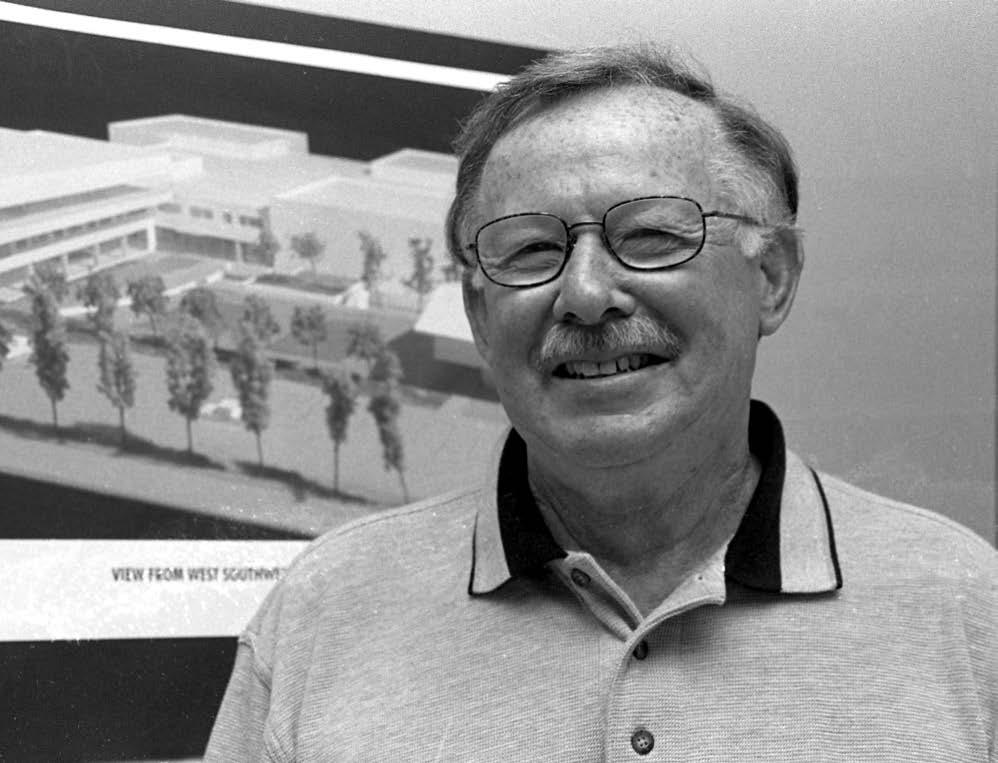
The North Dakota native grew up in Kittitas and attended high school in Tonasket, where he was a three-sport star (football, baseball and basketball). He also held the state record in the broad jump
that existed for years. His athletic exploits attracted the interest of the Huskies, who recruited him to play basketball. He served as the UW’s starting point guard from 1956 to 1960 and was noted for making a particularly wise decision in a game against Kansas. He was all set to take a charge from 7-foot-1, 275-pound Wilt Chamberlain but thought better of it and moved aside. Pariseau also was a pitcher for the 1959 Husky Hall of Fame baseball team.
After graduating from the University of Washington in 1960, Pariseau went to work on campus offering tennis and golf lessons, working his way up to overseeing the UW’s intramural sports program and the IMA building. He was particularly proud of the IMA’s 100,000-square-foot expansion project in 2001.
He also coached Shoreline Community College’s men’s basketball team before joining his brother to start the Brewster Packing AAU Club team, which won five national titles. He coached at the 1995 Pan-American Games and served as the AAU national president of men’s basketball for many years.

Pariseau died Aug. 19 at the age of 84.
DORI MONSON, ’84, was one of Seattle’s most distinctive voices. On Dec. 31, the longtime conservative radio talk-show host died unexpectedly at the age of 61. Born and raised on “the mean streets of Ballard,” as he used to say, Monson attended the UW and went on to work as a producer at KING-5 TV and at KING radio before joining KIRO-FM radio in the early 1990s.
ALICE Y. THOMAS, ’56, ’59, spent more than five decades serving the community. An alumna of the UW School of Social Work (and later a faculty member), Thomas was the first African American woman to serve as a supervisor in King County Superior Court. After leaving the court system, Thomas spent 30 years providing psychological services through her private practice. She died Sept. 28 at the age of 91.
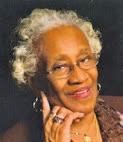
RECOGNITION
SPRING 2023 53 TRIBUTE JOHN PARISEAU, 1937-2022
UNIVERSITY
PHOTOGRAPHY
Standing in front of the design for the new IMA Center in 2001, IMA Director John Pariseau liked the way his favorite UW project was coming to life.
COURTESY MONSON FAMILY COURTESY THOMAS FAMILY
In Memory
ALUMNI
HENRY G. DONG
Age 94, Nov. 1
PHYLLIS FEELY TAYLOR
Age 100, Oct. 11
1940
JOHN EDWIN MERNER ’43, Seattle, age 102, Dec. 11
RUTH MARIE GHORMLEY ’46, Seattle, age 97, Nov. 1
GORDON W. JACOBSEN ’46, Bellevue, age 93, Oct. 30
RICHARD ZAHNISER ’47, Seattle, age 101, Oct. 25
PATRICIA JEAN CRONYN ’48, Edmonds, age 96, Sept. 20
SHIRLEY SIMMONS NEWTON ’48, Seattle, age 96, Oct. 13
BEVERLY ANDERSON WINGE ’48, ’68, Seattle, age 96, Sept. 4
LENORE LYLE ’49, Yarrow Point, age 94, Nov. 20
DONALD M. RIES ’49, Seattle, age 99, Sept. 15
1950
NORMAN GOLDSTEIN ’50, Edmonds, age 99, Nov. 6
GUS NICK COOPER ’51, Edmonds, age 92, Dec. 31
ELMER GREEN ’51, ’62, ’66, Issaquah, age 93, Nov. 20
RICHARD H. HAASE ’51, ’67, Issaquah, age 94, Oct. 19
MARJORIE “KRIS” HAUSMANN ’51, Everett, age 93, Sept. 29
ETHEL MAUERMAN HOPKINS ’51, Bellevue, age 92, Oct. 4
ARTHUR S. YOROZU ’51, Seattle, age 95, Sept. 26
BRUCE B. BUSCH ’52, Seattle, age 94, Oct. 30
JEAN M. BLAKE ENGLISH ’52, Richland, age 92, Dec. 16
JACK EDWARD KUNZ ’52, Spring Hill, Florida, age 92, Oct. 18
ANN MARILYN CLINGAN ’53, Shoreline, age 90, Sept. 22
DAYNE D. HANSEN ’53, Burien, age 95, Aug. 30
NINA LYNN ENG ’54, Mercer Island, age 91, Oct. 25
WALTER E. HOSSFELD JR. ’54, Redmond, Oregon, age 90, Oct. 7
GEORGE A. SHIPMAN JR. ’54, Bellevue, age 92, Sept. 16
LAWRENCE P. BAILEY ’55, Seattle, age 90, Sept. 26
ROBERT OWEN YEASTING ’55, Seattle, age 89, Oct. 4
MICKEY MIKITOSHI HIROO ’56, ’08, Seattle, age 101, Oct. 26
RICHARD RAYMOND LENTZ ’56, Seattle, age 90, Sept. 22
THOR DONALD LINDE ’56, Everett, age 88, Sept. 21
ARNOLD J. BARER ’57, ’59, Bellevue, age 86, Jan. 2
EDWARD LAJALA ’57, Sedona, Arizona, age 87, Aug. 12
PHILIP C. NORTON ’57, Seattle, age 93, Sept. 12
VIRGINIA L. CURULLA ’58, ’75, ’78, ’81, ’85, ’91, Bellevue, age 87, Sept. 17
LOYAL LUCILLE HANSEN ’58, Silverdale, age 85, Dec. 15
WILLIAM R. HUNT ’58, ’67, Belllingham, age 93, Nov. 17
FRITZ EDWARD JOHNSEN ’58, Camano Island, age 91, July 25
JANE NORBERG PLUT ’58, Kirkland, age 86, Nov. 24
VIRGINIA ROBINSON ’58, Goodyear, Arizona, age 86, Nov. 24
NANCY MONETTE PERINE ’59, Lahaina, Hawaii, age 85, Sept. 28
SALLY RAE BEIL PRITCHARD ’59, Seattle, age 85, Oct. 8
RONALD SIGMUND SELSET ’59, Bellevue, age 90, Oct. 3
1960
FRANK DUNFORD COLLINS JR. ’60, Lincoln, California, age 90, Aug. 29
GWYNNE H. DODGE ’60, Woodinville, age 83, Sept. 14
JOHN HACKETT ’60, Hansville, age 90, Oct. 7
GEORGE HAZLEGROVE ’60, Burien, age 90, Nov. 9
EINAR SVENSSON ’60, Vashon, age 96, Dec. 6
BETTY FRY CLARK ’61, Freeland, age 83, Dec. 13
RODNEY LEROY LINKOUS ’61, Seattle, age 88, Nov. 30
EMIL “DICK” MEINERT ’61, Auburn, age 91, Oct. 26
LEONARD CLARKE ROOT ’61, Colorado Springs, Colorado, age 97, Oct. 20
FREDERICK WOLGAMOTT ’61, Union, age 86, Oct. 18
GAIL HONGLADAROM ’62, ’63, Seattle, age 87, Nov. 19
JUDITH ELLEN PETERS ’62, ’82, Tacoma, age 81, Sept. 19
CLIFFORD M. ASPLUND ’63, Bellingham, age 85, Nov. 14
RONALD ROY BECHTOLD ’63, Renton, age 88, Nov. 19
NEVA O. LEE ’63, Seattle, age 82, Oct. 22
HERBERT B. MCDONALD ’63, Bothell, age 87, Sept. 25
JAMES S. CALDERHEAD ’65, Bellevue, age 94, Jan. 5
JOHN EDWARD FELTIS II ’65, Mercer Island, age 79, June 17
KENNETH KENNEDY ’65, Belfair, age 92, Oct. 14
ROBERT “GARY” LUDWICK ’65, Bellevue, age 79, Dec. 6
LARRY A. STUART ’66, Edmonds, age 79, Nov. 24
WILLIAM CHARLES HESSE ’67, ’69, ’76, ’78, ’83, Kent, age 77, Dec. 3
AMY E. MACAULAY ’67, Sammamish, age 83, June 3
EDITH KEY MOWERY ’67, Redmond
JOHN PATRICK VAUGHAN JR. ’67, Bellevue, age 84, Oct. 25
RICHARD WALSTON ’67, Shoreline, age 88, Sept. 13
MITCHELL R. DAY ’68, Seattle, age 76, Sept. 26
LINDA JOYCE WITHAM ’68, Kennewick, age 82, Oct. 27
MARTIN A. BENDER ’69, ’79, Seattle, age 74, October 2021
1970
THOMAS LENTZ ’70, Seattle, age 74, Nov. 16
KAREN GOODNOW ’71, Bellevue, age 72, July 27
MERRITT MARSHALL MAURER ’71, Seattle, age 74, Sept. 30
JANICE M. BERG ’72, Seattle, age 72, Oct. 14
CHARLES R. LOWRY ’73, Beaux Arts, age 75, Oct. 5
RONALD EDWARD ONGSTAD ’73, Seattle, age 76, Dec. 23
CARL “CJ” WEST III ’73, Bonney Lake, age 78, Oct. 8
EDITH BAILEY ’74, ’79, Des Moines, age 101, Sept 9
CHARLES TOLLE LEIBST ’74, Lynnwood, age 85, Sept. 28
GREG R. TICHY ’74, Spokane, age 70, Oct. 16, 2021
JAMES LEONARD EAGLE ’75, Seattle, age 72, Nov. 17
FREDERICK W. HYDE ’75, Seattle, age 72, Nov. 19
MARSHA HAY MERZ ’75, Issaquah, age 74, Oct. 26
THOMAS MORTON ’75, Bainbridge Island, age 77, Sept. 24
REBECCA B. CANTERBERRY ’76, Seattle, age 70, Nov. 10
MARK C. JENES ’79, Clackamas, Oregon, age 65, Oct. 30
1980
TODD SPENCER SCHILPEROORT ’80, ’84, Bothell, age 65, Sept. 8
DEBORAH ANN KIPPEN ’81, Kailua, Hawaii, age 71, July 1
KEN R. BURNETT ’82, Seattle, age 61, Aug. 31
ROBERT WOOD FRAZIER ’82, Seattle, age 81, Oct. 26
JUNE M. BOTZ BRIGHT ’83, Bothell, age 88, Nov. 6
INGE-LISE HALBERG MARX ’83, Kirkland, age 79, Oct. 10
SHERYL ANN HOMEYER IRWIN ’86, Southbridge, Massachusetts, age 73, Aug. 24
JEAN DENISE FOSTER ’89, San Jose, California, age 55, Nov. 1
1990
BRYAN WILLIAM “FRED” MEYER ’90, Seattle, age 54, Oct. 5
JONATHAN LOW MAYO ’94, San Francisco, age 52, Oct. 6
ROBERT G. QUINN ’95, Weston, Connecticut, age 53, July 5
HOLLY THIEL RAKE ’98, Portland, Oregon, age 45, July 15
2000
ANITA M. PHILLIPS ’00, Bellingham, age 45, April 15
MINORU UCHIMURA ’08, Seattle, age 100, Oct. 19
FACULTY AND FRIENDS
CECILIA L. ALTUNA taught Spanish and Portuguese at the UW. She died Dec. 2 at the age of 92.
DAVID GEORGE ASHBAUGH served on the faculty of the UW School of Medicine from 1988 to 1993. He died Dec. 31 at the age of 91.
JOHN RUSSELL BALCH’S contributions to the UW’s primate research programs helped advance scientific knowledge in diabetes and neuropsychology. He died Nov. 3.
54 UW MAGAZINE
RUTH BALLWEG, ’78, ’97, was a graduate of the UW’s MEDEX Northwest Physician Assistant Program who become its director from 1985 to 2014. She helped found DENTEX (Dental Health Therapy Project) in collaboration with the Alaska Native Tribal Health Consortium. She died Nov. 20 at the age of 78.
MANFRED BANSLEBEN was born in Germany during World War II and lost both parents when he was little. He taught at the University of Virginia and the University of Alabama at Birmingham before joining the UW in 1988 as a professor of German studies. He died Dec. 1 at the age of 80.
YORAM BARZEL was a UW professor emeritus of economics and an influential theorist in the fields of property rights and transaction costs. He died Dec. 22 at the age of 91.
DOLORES BATAYOLA was the secretary to the dean of the UW School of Forestry. She died Oct. 31 at the age of 97.
MARJORIE HILDUR BAYLOR worked as a secretary in the UW Housing Office, an academic adviser in the UW College of Education, and as an adviser at UW Bothell. She also served on the UW Retirement Association board. She died Nov. 25 at the age of 82.
DEBORAH JANE BOWEN spent her 36-year career identifying and reducing health disparities in diverse populations as a faculty member at the UW and Fred Hutchinson Cancer Center. She died Aug. 20 at the age of 63.
PHILIP COLLINS was a naval science professor and head of the UW’s NROTC program. He died Oct. 20 at the age of 91.
JANET MAGRAW ROSCOE DALING, ’73, ’76, was a renowned epidemiologist at the Fred Hutchinson Cancer Center, where she led studies into the causes breast cancer and anogenital of cancer. She died Sept. 18 at the age of 87.
CHARLES ALFRED EDQUIST worked for more than 40 years at the UW. He died Oct. 11 at the age of 91.
CARL H. FENNEMA, ’48, played football and threw the javelin at the UW. He played in the NFL, was a longtime Husky football season ticket holder
and Tyee Club member. He died in September at the age of 95.
BARBARA JANE FULTON worked in the UW departments of physics, chemistry, fisheries and psychosocial nursing. She died Oct. 15 at the age of 73.
ROSALIE ANN GREENGO worked for the UW departments of anthropology and archeology. She died Nov. 8 at the age of 92.
EDWARD CARY HALPIN, ’70, taught prosthodontics at the UW School of Dentistry. He died Dec. 26 at the age of 83.
OLYMPIO “OLY” JAVIDANDO worked as an accountant at the UW before retiring in 1995. He died Dec. 23 at the age of 89.
KENNETH J. KANFOUSH JR. worked for 21 years as an RN in the UW Medical CenterMontlake’s Bone Marrow Transplant Unit. He died June 17 at the age of 64.
GEORGE EDWARD KENNY was a professor in the UW School of Medicine’s preventive medicine department. When the department was transformed into a school of public health in 1970, he became chairman of the newly formed pathobiology department. He died Oct. 13 at the age of 92.
GEORGE HOWARD KRAFT was a titan in the field of MS research and was a longtime professor in UW Medicine’s Institute for Stem Cell & Regenerative Medicine and at Fred Hutch. He died Nov. 1 at the age of 86.
PETER LAURITZEN served as a UW professor of electrical engineering from 1965 to 1999. He died Oct. 16 at the age of 87.
DELORES LEONARD worked for UW Libraries, supervising student helpers for many years. She died April 11 at the age of 91.
MAE LOUISE LIEBERMAN worked in the Newborn Unit at UW Medical CenterMontlake. She died Oct. 30 at the age of 94.
GEORGE M. MARTIN, ’49, ’53, taught at the UW School of Medicine for five decades and was a giant in researching genetic approaches to the study of aging. He died Dec. 17 at the age of 95.
DAVID EVANS, ’62, left his native Vancouver, B.C., to play football at Wenatchee Junior College. He was recruited to the University of Washington by Don Coryell, ’50, ’51, and that began a love affair with the UW that lasted the rest of his life. Evans was nominated as the UW’s freshman class president, played football for Coach Jim Owens, joined Sigma Alpha Epsilon and met his wife, Bobbie Jean. He enjoyed a long, successful career in the hotel industry, and after a successful heart transplant at UW Medical Center-Montlake in 2000, he co-chaired “Open Heart Open,” which led to the creation of the UW Regional Heart Center. He died Aug. 22 at the age of 86.
JOHN A. “JACK” MCMILLAN, ’57, spent nearly 50 years at Nordstrom, becoming co-chairman. He also served on the Fred Hutchinson Cancer Center board and was a major supporter of the UW, he died Nov. 15 at the age of 91.
DOUGLAS JAMES MERRILL spent nine years working for the UW Finance Office. He died April 22 at the age of 67.
JONI SWARTZ METCALF was a former UW student who was considered “the first lady of Seattle jazz.” She died Nov. 15 at the age of 91.
GRETCHEN MONTEITH, ’51, served on the UW faculty. She died Oct. 6 at the age of 92.
LOWERY “LARRY” MOUNGER, ’59, ’63, served as president of the outdoor apparel company his father started, Pacific Trail, until he sold it to Columbia Sportswear. A big supporter of the UW, he died Oct. 8 at the age of 85.
ROBERT BLAIR OSBORN, ’67, earned his Ph.D. in mechanical engineering at the UW and was a professor in the UW College of Engineering. He died Oct. 29 at the age of 84.
GEORGIANNE “SHAN” ELAINE OTTEY, ’98, worked as an engineer at the UW. She died Aug. 14 at the age of 76.
GARRY OWENS was a former UW student and founding member of the Black Student Union in the 1960s. He died Sept. 30 at the age of 77.
CHARLES PANCERZEWSKI, ’61, was a big UW supporter who had a long career as an auditor. He died Dec. 15 at the age of 83.
NATHAN PRECUP, ’11, ’18, worked as the operations
manager for the UW’s Kirsten Wind Tunnel. He died Nov. 18 at the age of 33.
PRISCILLA “PINKY” ANDERSON PRIVAT, ’59, was a major supporter of the UW. She died Oct. 25 at the age of 85.
JEAN BERGLAND ROBINS worked for the UW’s horticulture department. She died Oct. 30 at the age of 86.
MIRIAM “MIMI” SCHORR spent 27 years working at the UW Staff Personnel Department. She died June 23 at the age of 93.
WILLIAM SEABURG, ’81, ’89, ’94, was an associate professor of interdisciplinary arts and sciences at UW Bothell. He died Oct. 9 at the age of 75.
NEIL ANTHONY SHERMAN, ’89, ’08, worked as an RN at UW Medical Center-Montlake. He died Sept. 5 at the age of 56.
MAURICE D. SKEITH JR., ’65, ’67, ’68, was a professor emeritus in UW Medicine’s Division of Rheumatology. He died Sept. 19 at the age of 87.
EUGENE HERBERT SMITH, ’63, was a UW English professor after starting his career as a fifth-grade teacher. He died Oct. 23 at the age of 95.
MARY CHRISTINA SMITH, ’05, served as the UW’s assistant director of finance and administration. She died Sept. 12, 2021 at the age of 72.
BRIEN M. STAFFORD, ’54, was a major supporter of the UW who founded a home building company with Peter Hansell. He died Oct. 21 at the age of 89.

RICHARD ERIC STAHL enlisted in the Army and later worked for the UW’s Applied Physics Lab. He died Sept. 11 at the age of 77.
LAILA STORCH was an emeritus faculty member in the School of Music, where she served as professor of oboe. She died Dec. 2 at the age of 101.
BRUCE TAYLOR, ’69, spent 28 years at Harborview Medical Center as a therapist and relaxation specialist. He died Aug. 31 at the age of 75.
FRANK TREVINO JR. served as director of civil rights at the UW. He died Oct. 18 at the age of 85.
LAWRENCE FREDERICK TURNBULL, ’50, spent more than 33 years as a clinical associate professor in the UW Dept. of Anesthesiology. He died Dec. 7 at the age of 101.
JANICE LEAVITT VANLANINGHAM, ’76, worked for the UW administration. She died Oct. 24 at the age of 91.
RICHARD CARL VOLKMAN worked at the UW Seattle campus for more than 30 years as a facilities painter. He died Dec. 7 at the age of 82.
BOBBY TEN-CHANG WANG worked in the UW’s food services department for almost 30 years. He died Oct. 3 at the age of 72.
GEORGE CARROLL WELDIN worked as a UW computer analyst. He died Sept. 30 at the age of 98.
BARRY WITHAM served as executive director of the UW School of Drama. He was recruited in 1979 to join the UW drama faculty and taught acting in the B.A. program and guided research in the Ph.D. program. He received a 2002 UW Distinguished Teaching Award. He died Dec. 26 at the age of 83.
SPRING 2023 55
The University of Washington mourns the loss of an alum and business leader who had purple in his veins
THINGS THAT DEFINE THE UW
The Department of What?
Another article about a campus building? Not really. But sort of.
By Caitlin Klask
You won’t see forensic morphology on the University of Washington’s official list of academic departments. But if you look closely, you’ll find a small plaque on Parrington Lawn noting the “Department of Forensic Morphology Annex.”
Department of what? Morphology: the study of form. Forensic: referring to criminal evidence. “I believe the field of forensic morphology is still in its infancy, but as it matures, I imagine it will focus on examining forms for evidence,” says Cris Bruch, the artist behind the stainless-steel sculpture behind William H. Gates Hall. Inspired by the Theodor Jacobsen Observatory and the F.K. Kirsten
Artist Cris Bruch’s shiny stainless-steel sculpture on Parrington Lawn draws lots of eyeballs from thousands of passersby on the UW Seattle campus. �he installation, which was created in 2004, has withstood bad weather and the occasional climber and is looking great as its 20th anniversary nears.

56 UW MAGAZINE
RON WURZER
Wind Tunnel Building, Bruch picked a tucked-away patch of Parrington Lawn for the piece, which was commissioned by the UW through the Washington State Art Collection. Through a cut in the exterior, you can even see a star map as a nod to the observatory.
“I felt some affection for the observatory and wind tunnel buildings for years,” Bruch says. “They’re small, unassuming, relatively hidden gems, and I’m drawn to the type of work that goes on in them.”
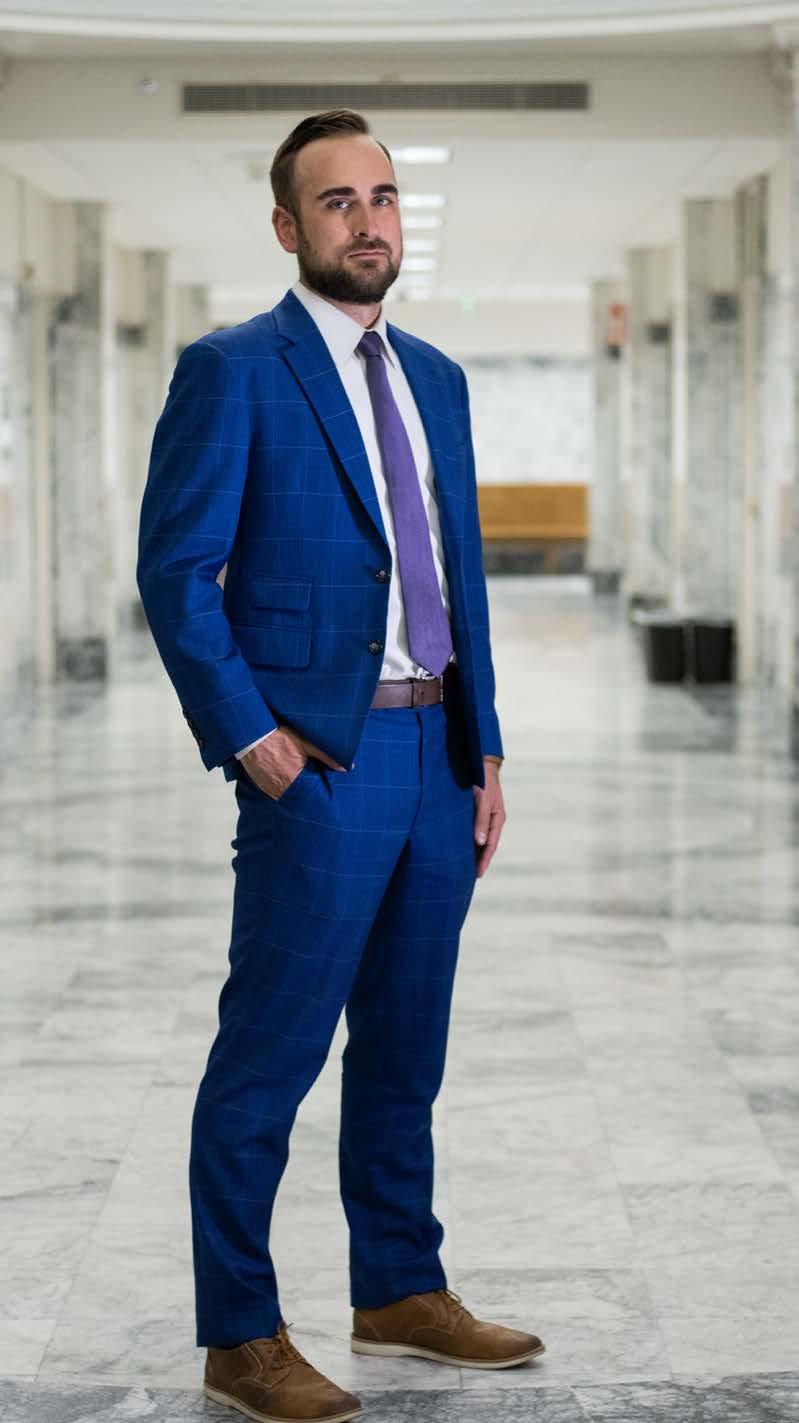
Bruch’s work is one of several on campus funded by Washington’s Art in Public Places program, including the canoe paddles in front of the Burke Museum (“Guests From the Great River,” 2020), the “Bench for Meditation” (1982) outside the School of Social Work and the mazelike gathering spaces outside the Henry
Art Gallery called “9 Spaces 9 Trees” (2007). With its dome-like structure of non-standardized shapes, “Department” took many months to build before it arrived on campus in 2004.
“We had never attempted anything like it,” says Bruch, who worked with a team from Fabrication Specialties on the sculpture. “I swore I would never subject them or myself to anything like it again, but we were all really pleased with how it turned out.”
Bruch lives on Vashon Island and is an important figure in public art throughout the Northwest. While his art-museum exhibits contain pieces made from fiber cement, blown glass or wood, his outdoor pieces are large (“Department” is 28 feet long) and typically made of stainless steel.
“It’s made of strong material, since public sculpture has to be able to withstand occasional assaults from drunk guys climbing on it and doing the Macarena or whatever.”
As far as office hours go, the “Department of Forensic Morphology Annex” is open 24/7. The soft and hazy finish of the sculpture plays well with light, rain or shine. Bruch suggests visiting “on a sunny autumn day with blue skies and golden leaves. But everything looks great on those days.”
The artist suggests visiting on a sunny autumn day with blue skies and golden leaves. But everything looks great on those days.
FOR A BRIGHTER YOU
Certificates, degrees and courses for busy adults, with flexible options in the evening and online.
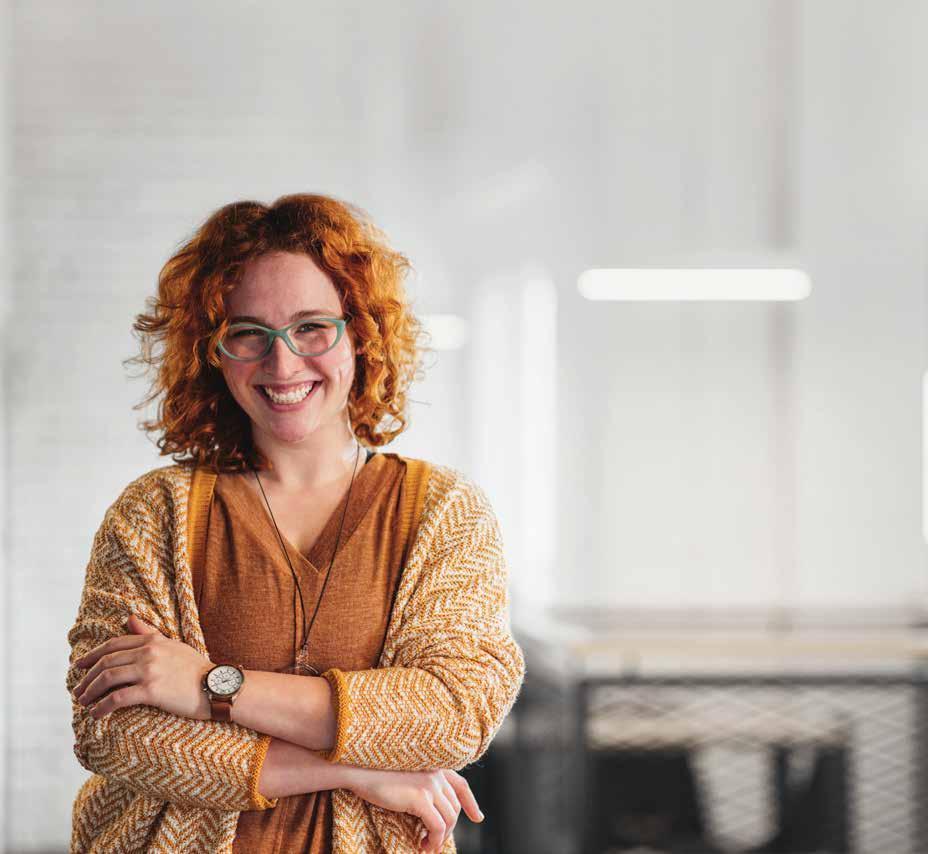
4333 Brooklyn Ave NE Campus Box 359508 Seattle, WA 98195














 Selena Prudente Rendon, ’21 B.A., American ethnic studies
Selena Prudente Rendon, ’21 B.A., American ethnic studies





















 By Jon Marmor
By Jon Marmor




















































 By Jon Marmor
By Jon Marmor















 Right, Dr. John O’Kane examines a student-athlete’s knee.
Right, Dr. John O’Kane examines a student-athlete’s knee.








 Ken Mochizuki reads his book “Baseball Saved Us” at University Book Store.
Ken Mochizuki reads his book “Baseball Saved Us” at University Book Store.


 By David Silverberg
By David Silverberg






 By Jamie Swenson
Photos by Dennis Wise
By Jamie Swenson
Photos by Dennis Wise













